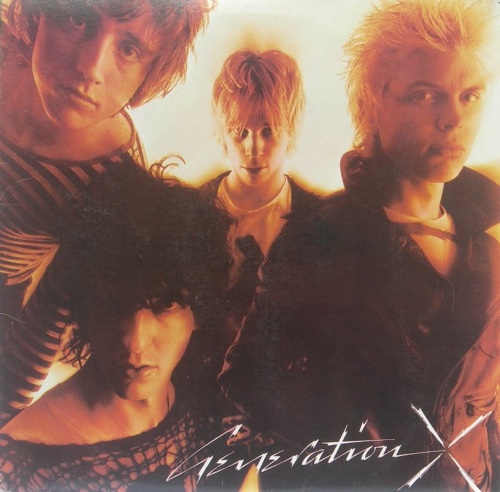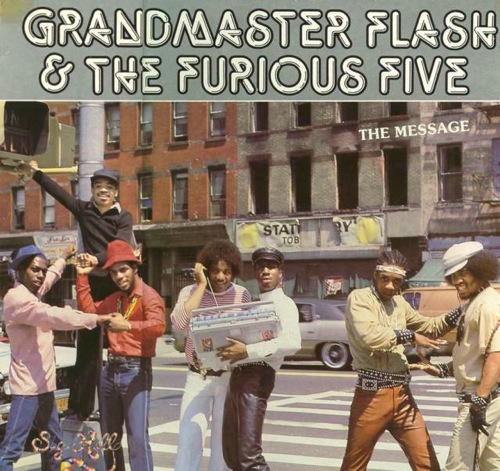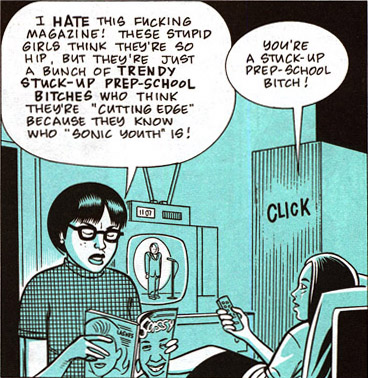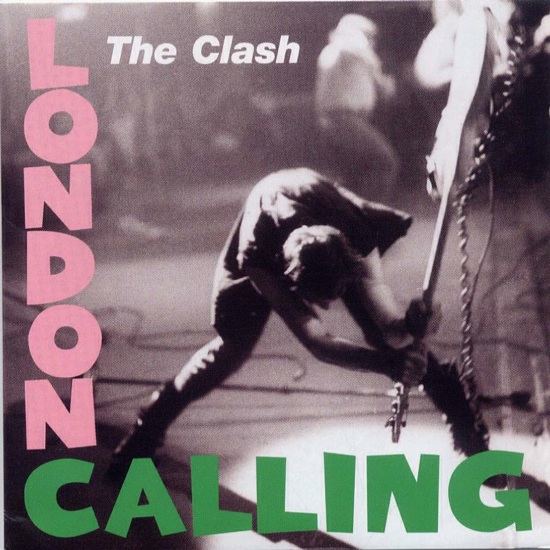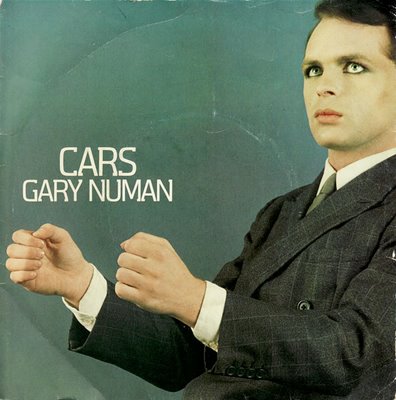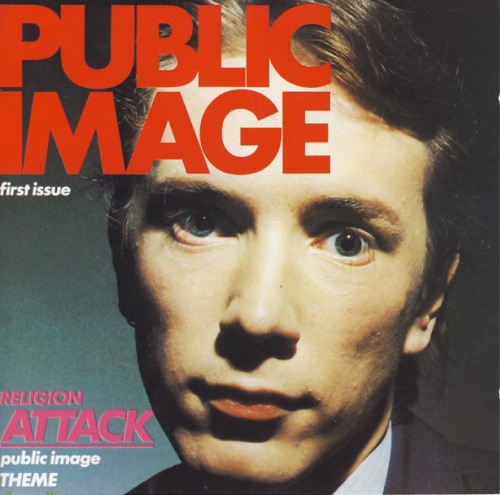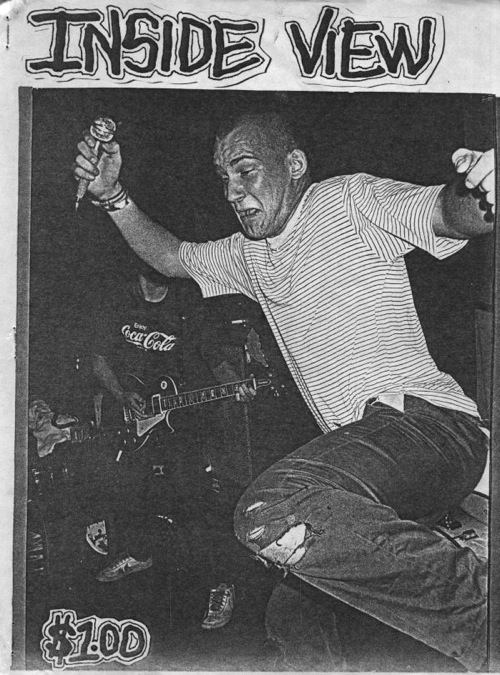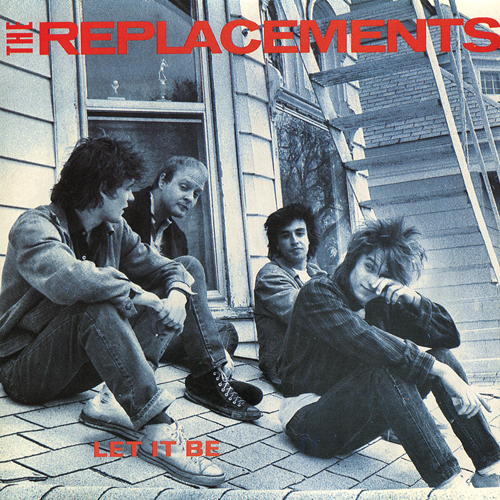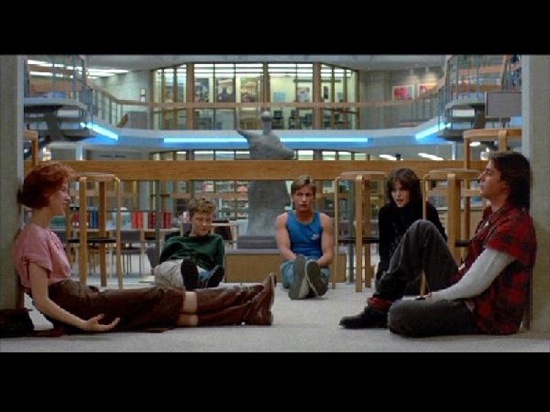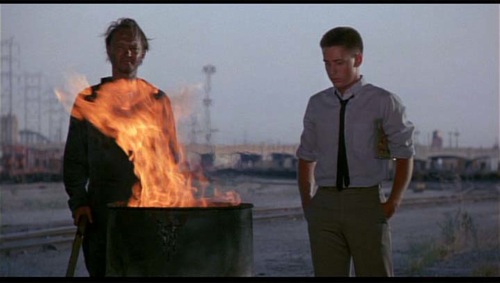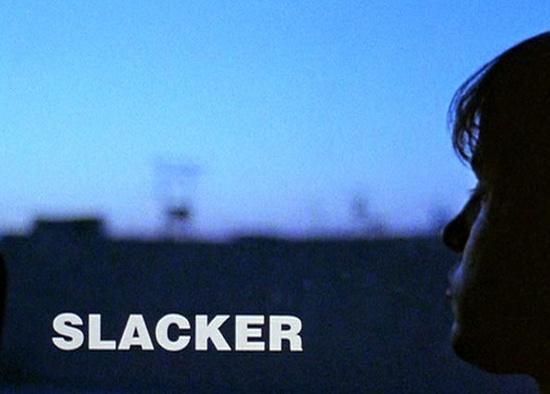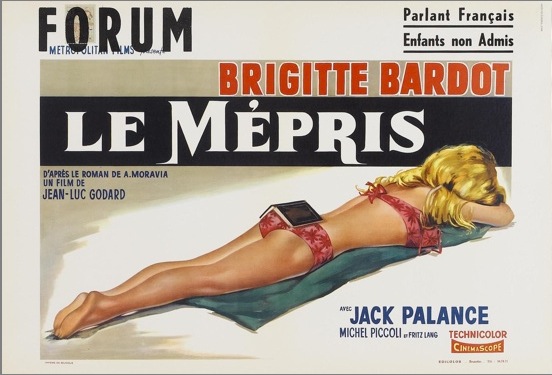I’ve dabbled in generational revisionism since the first issue of Hermenaut, in 1992. One of the reasons I started the zine was to express my disagreement with the generational schema proposed in 1991 by the pop demographers William Strauss and Neil Howe; alas, their version has been parroted unreflectively by journalists ever since. Inspired by the zinester Candi Strecker’s insistence that her own (1954–1963) cohort should be called the “Repo Man Generation,” in those first issues of Hermenaut I tinkered with an alternative generational schema… only to abandon it. I’d dropped out of my graduate program in Sociology, and became consumed with other obsessions.

Then in 2008, when I was blogging (as BRAINIAC) for the Boston Globe‘s IDEAS section, I finally got around to proposing my own generational schema — one in which each generational cohort is born during a 10-year-period beginning with a “4” year and ending with a “3” year. In doing so, I was deploying my own version of Dalí’s “paranoiac-critical method” — which he described as a “spontaneous method of irrational knowledge based on the critical and systematic objectivity of the associations and interpretations of delirious phenomena.” My schema (discussed further here) is laughably rigorous and precise, I know… yet somehow it’s also 100% accurate.
I wrote the following disclaimer in 2010: “I don’t believe that generations are some kind of astrology-style shaper of individual destinies. I believe that (a) cultural generations are sociological and historical facts, and (b) Strauss and Howe’s scheme is mis- and disleading. My own eccentric periodization scheme is partly a put-on; its laughable regularity is the giveaway. That said, my scheme is based on research and on considered (semi-apophenic) analysis of the data. If generational periodization is as much an art as it is a science, then it would not be unflattering were someone to compare my work to the obsessively detailed art of, say, Adolf Wölfli, Madge Gill, Eugene Andolsek, or Hiroyuki Doi. It’s a crackpot scheme — but it’s correct!”
In 2010, I reposted my generational schema here at HILOBROW, making a few updates in the process. (For one thing, I added earlier generations… and in doing so decided that a “5/4” schema made more sense for pre-1833 cohorts. I was also persuaded by HILOBROW readers that a “3/2” schema made more sense for post-1973 cohorts.) For the next several years, I once in a while published additional ideas in the comments section of these posts; readers posted their comments and critiques as well. These remain the most often-visited posts here at HILOBROW. Perhaps some day I’ll pull this stuff together in the form of a book… or perhaps not. This page provides an overview. Enjoy!
This is a 2010 post about the phenomenon of people born in the “cusp years” of my generational schema.
There are, in fact, no “generations” except in the biological sense. There are only categories and crises of temperament [which] crisscross and defy and deny chronology. — Cynthia Ozick
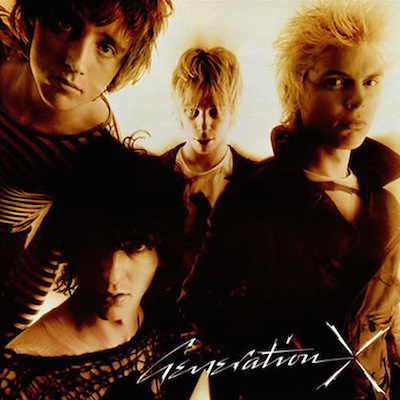
Years ago, when I was researching a book (still unwritten) on the 150-year history of the “hermenaut” or “outsider intellectual,” I noticed that historical eras like “the Sixties” — as opposed, i.e., to the strictly calendrical 1960s decade — inevitably begin and end late. Like generations, which don’t really exist, historical eras don’t really exist. However, under certain restrictive conditions, it can be a productive intellectual exercise to imagine that both generations and historical eras do exist.
I’m hardly the only student of periodizations to have remarked upon the “long decade” phenomenon; as far as I know, though, I’m the first to have been reckless enough to codify this insight with an eccentric, risibly precise periodization scheme. The scheme began as a tongue-in-cheek experiment. But I’ve looked at social, political, cultural, economic factors — and my periodization never fails.
The Forties ended in ’53 (e.g., with the censuring of McCarthy), the Fifties in ’63 (e.g., with the assassination of Kennedy), the Sixties in ’73 (e.g., with the death of Gwen Stacy in Spider-Man #121). It’s uncontroversial to say that punk began in 1974 and ended in 1983: “The seventies, sprawled out in chaos between the progressive sixties and the conservative eighties,” writes Nicholas Rombes in A Cultural Dictionary of Punk, whose subtitle (1974–1982) is only incorrect by one year, “was so incoherent that punk’s incoherency made perfect sense, or nonsense.” James Parker notes that alternative rock’s birth year was 1984: “Meat Puppets II was slap-in-the-face great. It came out in 1984, part of the same evolutionary spasm that birthed Hüsker Dü’s Zen Arcade, the Minutemen’s Double Nickels on the Dime, Black Flag’s My War (all of them on SST).”

A corollary to this periodization scheme: During “4/3” decades, the 8/9 years are — for better or worse — an apex. For example, 1969 — ’nuff said. A recent work of history, Christian Caryl’s Strange Rebels, makes the case that 1979 was a key moment of counter-revolution, a swing of the historical pendulum against the trends of the preceding decades. At the start of 1978, the Soviet Union and China seemed immovable monoliths of Communist ideology. Iran was run by the Shah, and Afghanistan was run by a secularist keen on modernization and women’s rights. The Iron Curtain seemed a permanent division between the free and the unfree. By the end of 1979, none of the above was still the case. The Soviet bloc was destabilized by the effect of Pope John Paul II’s papacy on Poland; the Shah had fled into exile and the Ayatollah Khomeini was at the head of Iran’s new revolutionary government. Islamist guerrillas had begun the war of resistance in Afghanistan. And Deng Xiaping had steered China toward its new identity as a capitalist economy.
The work of certain creative types parallels the zeitgeist: for example, David Bowie’s 1973 announcement that he was retiring the “Ziggy Stardust” persona was a farewell to the Sixties. Also, check out “Annus Mirabilis,” by Philip Larkin:
Sexual intercourse began
In nineteen sixty-three
(which was rather late for me) –
Between the end of the “Chatterley” ban
And the Beatles’ first LP.
Up to then there’d only been
A sort of bargaining,
A wrangle for the ring,
A shame that started at sixteen
And spread to everything.
Then all at once the quarrel sank:
Everyone felt the same,
And every life became
A brilliant breaking of the bank,
A quite unlosable game.
So life was never better than
In nineteen sixty-three
(Though just too late for me) –
Between the end of the “Chatterley” ban
And the Beatles’ first LP.
George W.S. Trow’s periodization of the Fifties/Sixties shift, in “Collapsing Dominant,” a 1997 essay written as an introduction to a new edition of his 1980 monograph Within the Context of No Context, complements my periodization:
I can remember once going with the Cerf family to Lindy’s in [1963]. Lindy’s was if not on its way out, past its prime. But we were still in the 1950s in a way…. But even then, Lindy’s, 1963, we all sensed that it was cracking…. [T]here has happened under us a Tectonic Plate Shift….
My generational periodization scheme corresponds to my “2/3” and “3/4” and “4/5” decade periodization. (Generational consciousness is formed in important ways by tectonic pressure from the eras in which they grew up and came of age. That’s a truism; if you don’t believe it, then you don’t believe in generations, period. Those era-specific pressures are a confluence of factors: social change, cultural shifts, historical events, demographics, economics, even natural disasters. None of which is to say that generational consciousness isn’t also formed by other pressures — the influence of other generations, for example; or the influence of certain charismatic or powerful individuals.) The Boomers, for example, aren’t simply men and women born during America’s postwar baby boom. Instead, they’re men and women who were in their teens and 20s during the Sixties (1964-73), and in their 20s and 30s during the Seventies (1974-83). Trow writes about “social generations — from the ’50s, from the ’60s, from the ’70s, from the Reagan era, from now,” and my use of the term generation is similar to this cusper’s.
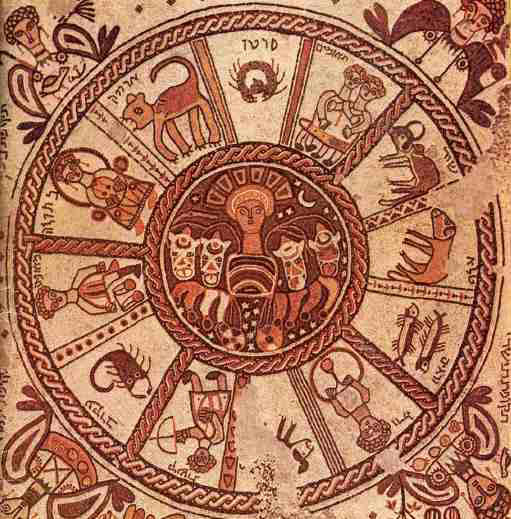
From astrology, in which I do not believe, I’ve appropriated the notion that someone can be “born on the cusp” — i.e., between two Zodiac signs, which means (according to astrologists) that the cusper’s personality is complex and contradictory, blending qualities of both signs. According to my generational periodization scheme, someone can be born on the cusp between two generations.
Being born on the cusp between two generations might mean identifying with the “right” generation. But it might also mean identifying with the “wrong” one. For example: Oscar Wilde, though born in 1854 and therefore technically a member of the Plutonian Generation, is much easier to identify as a Promethean (1844-53); while Vincent Van Gogh, though born in ’53, is best identified as a Plutonian (1854-63).
A person who identifies with the “wrong” generation, however, sometimes also identifies with aspects of the “right” generation. Such men and women find it nearly impossible to internalize either generation’s dominant discourse. Such men and women become alienated, hyper-analytical, obsessive, nostalgic-visionary, and quite often angry-funny social/cultural critics.
“No one is ahead of his time,” Gertrude Stein (a cusper, born 1874) writes in “Composition as Explanation,” “it is only that the particular variety of creating his time is the one that his contemporaries who also are creating their own time refuse to accept […] and it is very much too bad, it is so very much more exciting and satisfactory for everybody if one can have contemporaries, if all one’s contemporaries could be one’s contemporaries.” This is precisely how all cuspers must feel.
Jonathan Lethem, writing in The New York Review of Books, in 2019:
I was born in 1964. Some of my favorite books attempt to account for what life was like before, during, and after some large rupture in the collective human prospect, or the advent of a reality-reshaping rupture, ideology, or technology. Transformations still in living memory, but receding fast: Anthony Powell’s A Dance to the Music of Time, Robert Musil’s The Man Without Qualities, Doris Lessing’s The Children of Violence, Ford Madox Ford’s Parade’s End — each of which tries to encompass the atmospheric changes between and around convulsive European wars, as does Paul Fussell’s tremendous study The Great War and Modern Memory. Booth Tarkington’s The Magnificent Ambersons partly concerns itself with the effect of the coming of the automobile on small-town Midwestern life. George W.S. Trow’s glinting essay “Within the Context of No Context” captures television’s insidious displacement of older social orders.
Here we find a cusper talking about the bewildering, yet perspicacious experience of finding oneself uniquely able to look forward and back into otherwise discrete sociocultural eras, across the “rupture” between one generation’s habitus and the next’s. Note that Lethem also mentions Ford Madox Ford (1873), Paul Fussell (1924), and George W.S. Trow (1943) — all of whom are cuspers mentioned elsewhere on this page.
Pre-19th century cuspers: e.g., Jane Austen (1775).
Born in the first half of the 19th century: e.g., Nathaniel Hawthorne, Ludwig Feuerbach (1804); Alexis de Tocqueville, William Lloyd Garrison (1805); Mikhail Bakunin, Mikhail Lermontov (1814); Ada (Byron) Lovelace (1815); Wilkie Collins, George MacDonald (1824); Thomas Henry Huxley, Paschal Beverly Randolph (1825); Edward Burne-Jones, Félicien Rops (1833); William Morris, James McNeill Whistler, Ernst Haeckel (1834); Henry James, Gabriel Tarde (1843); Friedrich Nietzsche, Paul Verlaine, Henri Rousseau (1844); Vincent Van Gogh (1853).

Born in the second half of the 19th century: e.g., Oscar Wilde, Arthur Rimbaud, James Frazer (1854); Edvard Munch, Paul Scheerbart (1863); Max Weber, Miguel de Unamuno, Zo d’Axa (1864); Alfred Jarry, G.E. Moore, W.C. Handy, J.D. Beresford, Ford Madox Ford (1873); G.K. Chesterton, Elsa von Freytag-Loringhoven, Nicholas Roerich, S. Fowler Wright, Karl Kraus, Amy Lowell, Harry Houdini, and Gertrude Stein (1874); Franz Kafka, Max Fleischer, Rube Goldberg, Anton Webern, Edgard Varèse, William Carlos Williams, and Jaroslav Hasek (1883); Bronislaw Malinowski, Yevgeny Zamyatin, Marie Vassilieff, Gerald Gardner, Abraham Merritt, Hugo Gernsback, (1884); Mayakovsky, Dorothy Parker, Wanda Gág, Anita Loos (1893); E. E. Cummings, Claude Cahun, Martha Graham, EC Segar, James Thurber, Jack Benny, Dashiell Hammett, and Aldous Huxley (1894); Mark Rothko, Walker Evans, Joseph Cornell, Yasujiro Ozu, Cyril Connolly, Countee Cullen, George Orwell, Nathanael West, Evelyn Waugh, Cornell Woolrich, T.W. Adorno (1903).
Born in the first half of the 20th century: e.g., Salvador Dali, S.J. Perelman, Jacques Tourneur, Edgar G. Ulmer, A.J. Liebling, Pablo Neruda, Dr. Seuss (1904); Albert Camus, Paul Ricoeur, Cordwainer Smith, Alfred Bester, Walt Kelly (1913); William Burroughs, Marguerite Duras, Octavio Paz, Julio Cortazar, Sun Ra (1914); Norman Mailer, Hugh Kenner, Italo Calvino, Roy Lichtenstein, Joseph Heller (1923); Jean-François Lyotard, Paul Feyerabend, Terry Southern, Paul Fussell, E.P. Thompson, Eduardo Paolozzi, Ed Wood, William H. Gass, Tony Hancock (1924); Susan Sontag, Bruce Conner (1933); Gloria Steinem, Joan Didion, Guy Peellaert, Fredric Jameson (1934); R. Crumb, David Cronenberg, George W.S. Trow (1943).
Born in the second half of the 20th century: e.g., Martin Jay, Bill Griffith (1944); Alan Moore and Jim Jarmusch (1953); Alex Cox, Luc Sante, Kurt Andersen (1954); Simon Reynolds, Mark Kingwell, Justin Bond, Quentin Tarantino (1963); Michael Hirschorn, Jonathan Lethem, Dan Savage, Adam Yauch, DJ Run and D.M.C., Joss Whedon (1964); Dave Chappelle, Madlib (1973); Stephen Merchant and Marco Roth (1974); Micah White (activist, came up with the idea for Occupy Wall Street), perhaps Seth Rogen and Evan Goldberg (1982); Amy Winehouse, Jesse Eisenberg (1983); Miley Cyrus (1992).
I’ve left many names off this list. But it’s fascinating to see that Dashiell Hammett and Cornell Woolrich, who pioneered hardboiled and noir fiction, respectively, are cuspers; as are dystopian novelists Aldous Huxley and George Orwell. Not to mention many particularly insightful historians, economists, science fiction authors, and humorists.
And — didja notice? Kurt Andersen and Michael Hirschorn are cuspers, born a decade apart. They’re both fascinating, insightful social and cultural critics; their joint project, Inside.com, was way ahead of its time.
My generational periodization scheme is only a half-serious one. But it gets more convincing all the time.
Please note that the following was written in 2008–2010.

According to my hypothesis, if you will be in your teens and/or (depending on whether you were born near the beginning or the end of the time-span 1993–2002) early 20s during the Twenty-Tens (2014–23, not to be confused with the 2010s), and if you will be in your 20s and/or 30s during the Twenty-Twenties (2024-33, not to be confused with the 2020s), then you are a member of a TBA (To Be Announced) cohort.
I won’t be writing anything about the TBA-ers. Why not? They’re too young! It’s bad enough that I wrote about the Social Darwikians before that cohort’s eldest had even reached their 30s. Check back in a decade or so. In the meantime, I’m using TBA as a placeholder moniker; it means nothing except: We don’t yet know anything about this cohort.
Who belongs to this generation? Click here.
Please note that the following was written in 2008–2010.
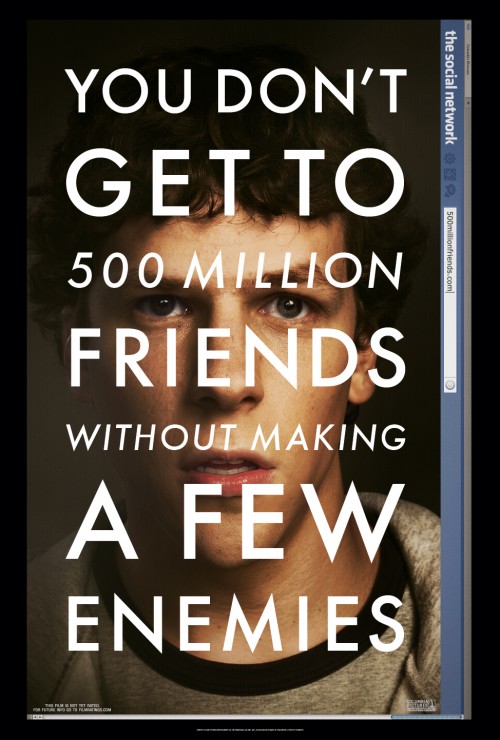
The cohort whose members are currently in their teens and early 20s, and who in the Twenty-Tens (2014-23; not to be confused with the 2010s) will graduate college, start careers, and generally come into their own, was miscategorized from the start.
In their 2000 bestseller Millennials Rising, the pop demographers William Strauss and Neil Howe claimed that a “Millennial Generation” was born between 1982 and 2000-ish. The catchy moniker came first and the sketchy periodization after that — Strauss and Howe picked 1982 for a cynical, self-serving reason having little to do with anything besides promoting their generational schema: Because men and women born that year would graduate from high school in the millennial year 2000. Why does anyone listen to these guys?
Journalists and marketers have adopted Strauss and Howe’s term, but because it’s an invented generation, the periodization has remained… fluid. The consumer research outfit Iconoculture, for example, claims that the first Millennials were born in ’78; Newsweek has described the Millennials as the cohort born between ’77 and ’94; and The New York Times, which prefers the equally bogus term “Generation Y,” has suggested, in various trend pieces, that the so-called Millennial cohort was born from 1976-90, from 1978-98, and “mostly in the 1980s and 1990s.” NOTE: There’s no such thing as the Millennial Generation, or Generation Y.

I wrote the original version of this post in 2008. At the time, I said that it felt wrong to comment on a generation whose oldest members were only in their mid-20s; at the time, their best-known members were all actors and musicians. Today, however, the generation boasts a number of figures well-known for other sorts of pursuit. At first, I dubbed this cohort the Throwbacks — because, back in the early 2000s, the rest of us were constantly being told how trustworthy, loyal, helpful, friendly, courteous, kind, obedient, cheerful, thrifty, brave, clean, and reverent these young folks were. In 2013, I re-dubbed them the Social Darwikians.
Notable Social Darwikians include: Aaron Swartz, Andrey Ternovskiy, Aziz Ansari, Chris (“We are the 99%” tumblr), Christina Xu, Christopher Poole (moot), Daniel Ek, Dizzee Rascal, Ellen Page, John Resig, Jon Johansen, Jonah Hill, Lady Gaga, Lindsay Lohan, Mark Zuckerberg, Micah White, Michael Cera, Michael Gregory, Miley Cyrus, Nate Blecharczyk, Nicki Minaj, Rihanna, Seth Rogen, and Tim Hwang.
PS: For some reason having to do with seismic cultural shifts the nature of which I am attempting to ascertain, the oldest members of this cohort — born in and around 1983 — normally would have been members of the Revivalist Generation. Instead, they became pioneers of the Social Darwikians cohort. Was it 9/11? Web 2.0? I’m open to opinions on the topic.
Who belongs to this generation? Click here.
Please note that the following was written in 2008–2010.

Members of the Revivalist Generation were in their teens and 20s in the Nineties (1994-2003; not to be confused with the ’90s); and they are in their 20s and 30s now, in the decade we might call the Oughts (2004-2013; not to be confused with the ’00s).
Though their eldest were lumped in with the so-called Generation X (an MSM-concocted hodgepodge of Reconstructionists, younger OGXers, and older Revivalists), most members of the 1974-82 cohort were lumped into the so-called “Generation Y.” Which, to journalists and pop sociologists, means: parent-loving, resume-polishing, conservative paragons of virtue. That description might fit their immediate juniors, the so-called Millennials (i.e., the Social Darwikians), but it’s not an accurate portrayal of the Revivalist Generation. Revivalists are precocious and earnest, entrepreneurial, and dedicated to renewing bygone cultural forms and franchises.
Some of our favorite hi-, lo-, and hilobrow Revivalists include: Marco Roth, Keith Gessen, and Mark Greif; Jack White and Meg White; Talib Kweli, Aesop Rock, Madlib (rapper) (honorary), and Danger Mouse; Neil Patrick Harris (honorary); M.I.A., Dan Auerbach, and Conor Oberst; Sufjan Stevens, Devendra Banhart, and Joanna Newsom; Amy Winehouse (honorary), Russell Brand, and Zadie Smith. PLUS: Cee-Lo, Steve-O, and Karen O.

Note that the Revivalists (like the Post-Romantics) are a nine-year, as opposed to a ten-year cohort. This is due to seismic cultural shifts whose nature I am attempting to ascertain.
PRECOCIOUS & EARNEST
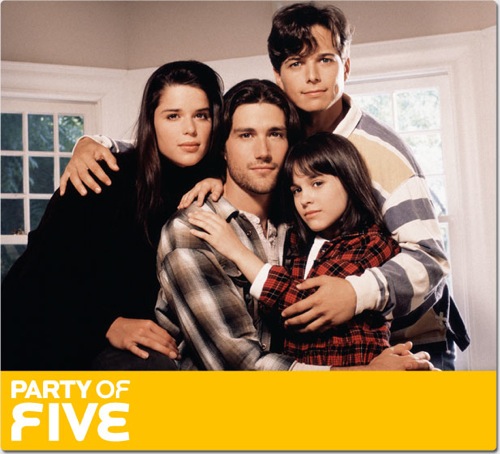
The cynicism, irony, and skepticism that had sustained previous generations during the Cold War reached an apex, during the Nineties — think of Seinfeld and The Simpsons, for example. At a tender age, several Revivalists — most famously, Jedediah Purdy — called for and modeled a hip mode of earnestness, instead. For their immediate elders, the Reconstructionists (my own generation), this was confusing, off-putting. Our younger siblings, if you will, seemed more mature and together, in certain respects, than we did. They were the Claudia Salinger, if you’ll forgive the Party of Five reference, to our Charlie. They didn’t want to learn, from us, how to rebel; instead, they wanted to parent us.
This no doubt explains why the earnest hipster Dave Eggers, though often unpopular among fellow Recons, was beloved by his Revivalist juniors. If you’ll recall, in his Heartbreaking Work of Staggering Genius, he explicitly encouraged readers to regard his own family as a real-life Party of Five; and in his introduction to the bestseller’s paperback edition, he took great pains to reject the notion that he was in any way cynical, ironical, or skeptical. This may also explain why the post-ironic fiction of David Foster Wallace is more popular among Revivalists than it is among members of his own generation.
Although the Recons may have invented the Web as we know it, the Revivalists made use of the Web for a hip, earnest form of social activism: a networked “movement of movements.” Madrid94, J18, Seattle/N30, Genoa: These are the political touchstones for the Revivalist Generation’s so-called anti-globalization movement. Revivalists also founded City Year (founded in 1988), Teach for America (1990), AmeriCorps (1994); and they pioneered the “service learning” trend.
WISED-UP KIDS. Fictional precocious kids from the Recon generation — e.g., Anthony Michael Hall in Sixteen Candles and Breakfast Club, Ricky Schroder on Silver Spoons, Matt Damon in Good Will Hunting — were (depending on their age) portrayed as pathetic geeks, tortured outcasts, or annoying brats. But think of Natalie Portman in The Professional and Beautiful Girls, Anna Paquin in The Piano (and those MCI commercials), Sara Gilbert on Roseanne, Jason Schwartzman in Rushmore, Fred Savage on The Wonder Years, Claire Danes on My So-Called Life, Topher Grace on That ’70s Show, Mark-Paul Gosselaar on Saved by the Bell, Thora Birch in American Beauty and Ghost World, Christina Ricci in Mermaids and The Addams Family, Wiley Wiggins in Dazed and Confused, Edward Furlong in Terminator 2, Anna Chlumsky in My Girl, Kristen Bell on Veronica Mars, Alexis Bledel on Gilmore Girls. Not to mention honorary Revivalist Neil Patrick Harris (Doogie Howser, M.D.) and the entire cast of Dawson’s Creek. Like Lacey Chabert (Claudia Salinger), Revivalists were portrayed as hyper-articulate, wised-up, and altogether un-childlike.
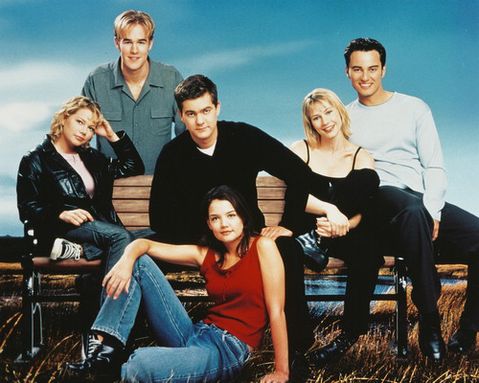
CHIC GEEKS. Revivalists, fictional and real-life, were the first chic geeks — that is, they successfully merged a strong proficiency with technology and coolness/attractiveness. Adam Brody (Seth Cohen on The O.C.) and Alexis Bledel (Rory on Gilmore Girls) were only the most obvious fictional examples. Math wizard and programming wunderkind Bram Cohen, the cofounder of BitTorrent; Chad Hurley and Steve Chen, the cofounders of YouTube; Digg’s Kevin Rose; Slashdot’s Rob Malda; and Janus Friis, cofounder of KaZaA, Skype, and Joost, are real-life chic geeks — and all Revivalists.

WUNDERKINDS. In the arts, too, we’ve come to expect Revivalists — Zadie Smith and Jonathan Safran Foer; the founding editors of the intellectual journal n+1 (Keith Gessen, Mark Greif, Marco Roth; the fourth founder, Ben Kunkel, is a Recon); Conor “Bright Eyes” Oberst — to achieve great things while still wet behind the ears.
ENTREPRENEURIAL
In a 2000 New York Times story titled “Coming of Age, Seeking an Identity,” sociologist Arlie Russell Hochschild was one of the first to point out that there was no such thing as Generations X or Y. What defined Americans then in their late teens and early-to-mid-20s (i.e., the cohort I call the Revivalists), she said, was the fact the were coming of age during an era in which America was trending “toward a more loosely jointed, limited-liability society, the privatizing influence of that trend and the crash-boom-bang of the market….” Result? Unlike the slow-to-start Recons, Revivalists were ferociously entrepreneurial from the get-go.
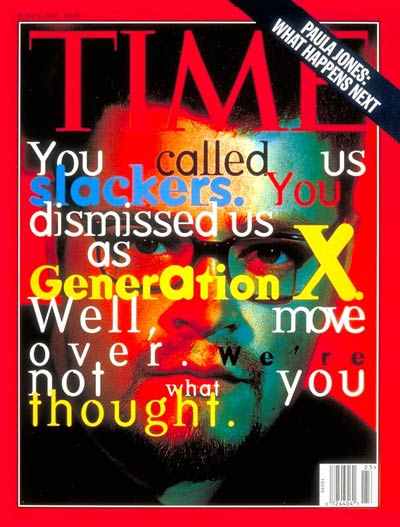
US economic growth accelerated as the Nineties (1994-2003) began, while unemployment and inflation remained low. In 1995, Newsweek announced a New Economy. Magazines like Wired and Fast Company urged young go-getters to eschew the lifetime-employment-with-benefits mindset of previous generations. Startups sprung up in valleys and alleys from coast to coast. The Revivalists’ experience was one of permanent, steady growth of the US economy, plentiful white-collar jobs, and a generational immunity to the boom and bust macroeconomic cycles. When Time Magazine noted in 1997 that “Gen Xers” were “flocking to technology start-ups,” the “Gen Xers” to whom they were referring were actually younger Recons and older Revivalists. In fact, during the Nineties, many of us Recons found ourselves employed by Revivalists.
Whereas OGXers and Recons were blindsided and bummed out by the economic changes of the Seventies (1974-83) and Eighties (1984-93) — including the collapse of the Bretton Woods monetary system, the emergence of efficient automation, outsourcing and offshoring, and demands made by corporations that workers be flexible instead of loyal — fresh-out-of-college Revivalists thrived in a culture where hard-won experience at a single job had become a liability. Why shouldn’t they have done so? After all, they didn’t have any experience yet.
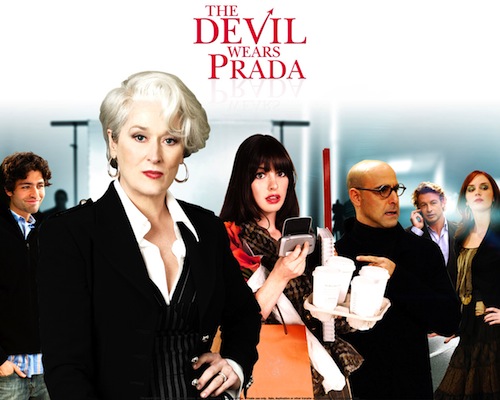
Those boom times may be over, but Revivalists’ entrepreneurial instincts haven’t vanished. HR professionals say that Americans born from the mid-1970s onward feel more entitled in terms of compensation, benefits, and career advancement than older generations. Revivalists expect to be paid more; they expect to have flexible work schedules; they expect to be promoted within a year of being hired; they expect to have more vacation or personal time; and they expect to have access to state-of-the-art technology. Revivalists reportedly have a tough time taking direction, since they regard their elders as dinosaurs who should just hand over the business! Which explains the Revivalist phenomenon of tell-all underling fiction and bloggery: Lauren Weisberger’s The Devil Wears Prada, Emma McLaughlin’s and Nicola Kraus’ The Nanny Diaries, Jessica Cutler’s Washingtonienne, Nadine Haobsh’s Jolie in NYC, Jeremy Blachman’s Anonymous Lawyer.

Donald Trump could not have launched The Apprentice using Recons as cast members. Omarosa Manigault-Stallworth and the other first-season strivers were Revivalists. Even Revivalist good-time gals and guys — e.g., Kimora Lee Simmons, Paris Hilton, Tila Tequila, and everyone from Jackass (with the exception of Johnny Knoxville, who is older) — are businesspeople.
RENEWING BYGONE CULTURAL FORMS AND FRANCHISES

In 2000, Arlie Hochschild wrote, of Revivalists: “To be sure, every American decade has fashion marketeers define generational looks and sounds, but probably never before have they so totally hijacked a generation’s cultural expression.”
To progressive older Americans, the Revivalists’ marked lack of ironic distance from received cultural forms is worrisome. Ironic OGXers and PCers mix and match fragments of received cultural forms, which sometimes results in works of great originality, and sometimes (e.g., Ben Stiller’s brand of comedy) simply means freshening up reheated entertainments with air quotes. But members of the 1974-82 cohort simply dig the past; think of how Andre 3000, Sisqo, Pink, and Jack White, among many other Revivalists, slip bygone cultural forms on and off like so many Halloween costumes. When it comes to venerable cultural forms and franchises, like vintage videogames, Revivalists want to reboot them.

Speaking of Halloween, heavily inked Revivalists like Angelina Jolie, 50 Cent, Drew Barrymore, Christina Ricci, Steve-O, David Beckham, Lil Wayne, Nicole Richie, Amy Winehouse, Eve, and the Suicide Girls have transformed their flesh into costumes.
Revivalism is, among other things, an un-ironic reheating of previous generations’ pop culture franchises. When Revivalist actresses portray cartoon heroines — for example, Sarah Michelle Gellar as Daphne from Scooby-Doo, Jessica Alba as Sue Storm from Fantastic Four, Rachael Leigh Cook as Josie from Josie and the Pussycats, Christina Ricci as Trixie from Speed Racer — there’s no distancing smirk, no look-at-me-playing-a-cartoon scenery-chewing.

The most widely beloved American and English rock acts of the 1974-82 cohort are, respectively, garage-rock revivalists (The Strokes, The White Stripes, Black Rebel Motorcycle Club, Kings of Leon, The Black Keys) and post-punk revivalists (Bloc Party, The Libertines, Editors, Interpol, Kaiser Chiefs, Babyshambles, Franz Ferdinand). Revivalist chanteuses Lauryn Hill, Alicia Keys, Norah Jones, and Amy Winehouse, meanwhile, are soul revivalists.

This is the generation that has been instructed a million times, by the American Idol judges, to “take a hit song from the past and make it your own, make it relevant.” American Idol stars Kelly Clarkson, Justin Guarini, Ruben Studdard, Clay Aiken, Carrie Underwood, Taylor Hicks, Jennifer Hudson, David Cook, Elliott Yamin, Kimberley Locke, Josh Gracin, Bo Bice, Bucky Covington, Blake Lewis, Danny Gokey, Chris Daughtry — not to mention Ryan Seacrest — are Revivalists. Adam Lambert might be the last Revivalist to become an American Idol star; the torch is now passing to the next generation.
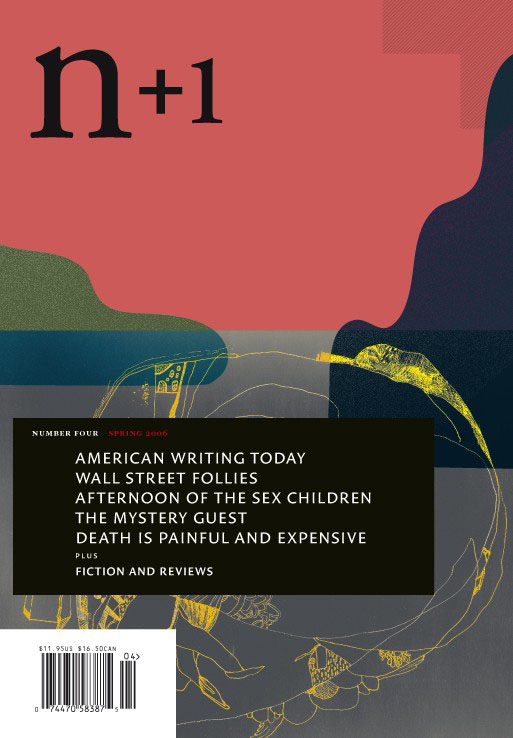
As for the aforementioned journal n+1, undoubtedly the Revivalist Generation’s most impressive accomplishment thus far, its editors are patently wistful for the New York Intellectual scene of the 1930s-50s. This is demonstrated not only by their socialist aspirations, intellectual sprezzatura, and eagerness for literary dust-ups, but by their journal’s design — a tribute to long-ago issues of Partisan Review and Dissent. Each n+1 cover is a love letter from the editors to a lively New York Intellectual scene about which they’ve only heard stories.
MOUSKETEERS & SCHOOL SHOOTERS
Having made all these (mostly) positive comments about the Revivalists, I should note that Middlebrow — which lost its firm grip on American youth after the Boomers, began to make a comeback in the Nineties. Revivalist celebrities Christina Aguilera, Britney Spears, Justin Timberlake, JC Chasez, Ryan Gosling, and Keri Russell got their start via the Disney Channel’s revived Mickey Mouse Club. Still, the Disneyfication of American youth is much more pronounced among the Revivalists’ immediate juniors, the Social Darwikians.
For what it’s worth, infamous school shooters Wayne Lo, Barry Loukaitis, Jamie Rouse, Evan Ramsey, Luke Woodham, Michael Carneal, Andrew Wurst, Kip Kinkel, and, of course, Columbine’s Eric Harris and Dylan Klebold, are Revivalists.
Who belongs to this generation? Click here.
Please note that the following was written in 2008–2010.
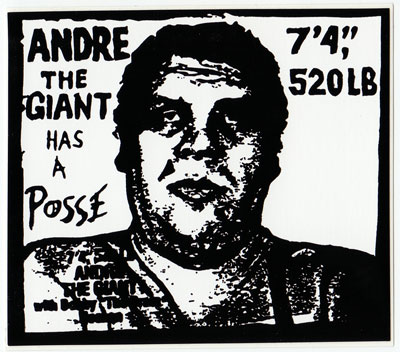
Were you born between 1964-73? If so, then like me, you’re a member of a lost generation mistakenly called “Generation X.” Members of this misidentified cohort were in their teens and 20s in the Eighties (1984-93, not to be confused with the 1980s); and in their 20s and 30s in the Nineties (1994-2003).
I’m not saying that there wasn’t a Generation X. However, that term was first adopted and popularized by men and women born between 1954 and 1963. The Original Generation X, as I’ve dubbed that cohort, regarded themselves as an unrecognized (i.e., “X”) generation because until very recently they were lumped in with their immediate elders, the Boomers — even though most OGXers were too young to participate in, or remember, the Boomers’ coming-of-age decade: the Sixties. To be a Gen Xer, then, is to be a resentful younger sibling of the Blank Generation. Those of us born from 1964-73 don’t fit the bill.
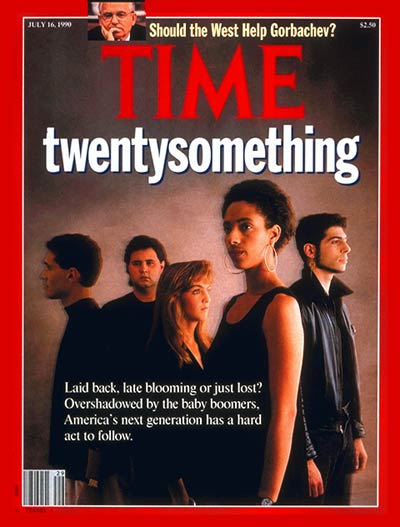
As a direct result of mis-periodization, those of us born between 1964 and 1973 never developed generational consciousness. Worse, the mis-periodizers seized upon the confusion they’d caused, and tsk-tsked the youth of the Eighties and Nineties for not being a coherent generation. The generation supposedly born between 1961 and 1972 “possess only a hazy sense of their own identity,” according to an influential 1990 Time story on “twentysomethings.” (Then, in 1997, Time claimed that “Generation X” was born between 1965-77. Whose sense of generational identity is hazy?) Neil Howe and William Strauss’s influential Generations (1991) and 13th-Gen (1993) claimed that the post-Boom “13ers” were born between 1961-81. However, in their 1997 book The Fourth Turning, Howe and Strauss would make a half-confession: “Compared to any other generation born in this century, [the 13th generation] is less cohesive, its experiences wider and its culture more splintery.”
Hazy sense of generational identity, splintery culture — and on top of that, when the 1964-73 cohort were undergrads, deconstructive theory was all the rage in humanities departments. Small wonder, then, that this cohort’s collective disposition is accommodationist — i.e., in the cognitive-development, not the political sense of that term. The 1964-73 cohort shares, that is to say, a marked tendency to brood over taken-for-granted cultural, political, social, and philosophical forms and norms, not rejecting but self-consciously remixing these fragments into innovative new patterns. In honor of the 1964-73 cohort’s post-deconstructionist capacity for accommodationism, I’ve named it (us) the Reconstructionist Generation.
The Reconstructionist predilection for brooding over fragments can be glimpsed:
* in second-generation hip hop’s (not to mention the Beastie Boys’, Beck’s, and DJ Spooky’s) frenetic sampling
* in the playful overdetermination of Wes Anderson’s set design
* in Spike Jonze’s and [honorary Recon] Quentin Tarantino’s referentiality
* in Jonathan Lethem’s early literary mashups, and his recent essay on “the ecstasy of influence”
* in the magpied art, design, and cartoonistry of Shepard Fairey, Chip Kidd, and David Rees
* in the torn-up visuals of South Park
* and even in the paranoid style of J.J. Abrams and Dan Brown.
Who belongs to this generation? Click here.
Please note that the following was written in 2008–2010.
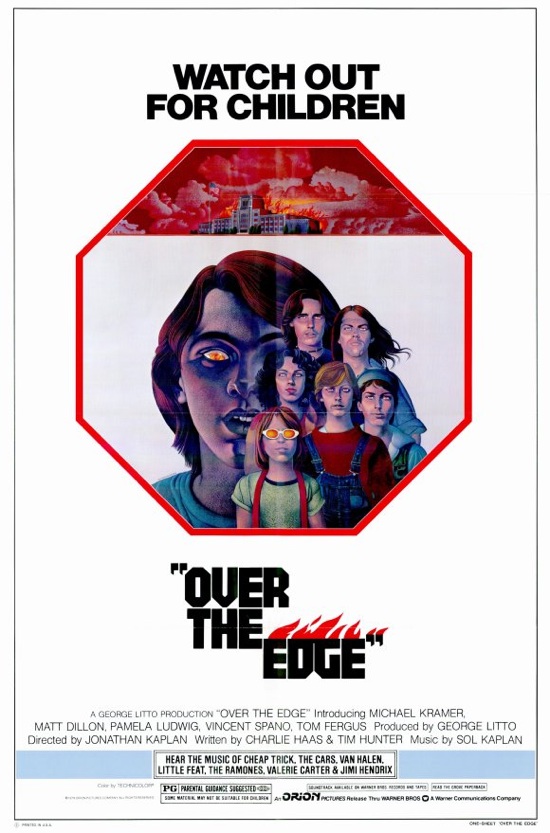
In their teens and 20s during the Seventies (1974-83; not to be confused with the 1970s), and in their 20s and 30s during the Eighties (1984-93; not to be confused with the ’80s), members of the extraordinary generational cohort born from 1954-63 are easily distinguished from their immediate elders, the Boomers. Yet, until very recently, few journalists (or anyone else; though some of us tried to say so back in the early 1990s) made this crucial distinction. As a result, the Original Generation X is truly a lost generation.
In the words of OGXer Paul Westerberg, in 1985:
Clean your baby womb, trash that Baby Boom […]
We are the sons of no one, bastards of young […]
Unwillingness to claim us, ya got no word to name us
Some of our favorite OGXers include: Afrika Bambaataa, Annie Nocenti, Bill Hicks, Bob Mould, Bruce Dickinson, Charles Burns, Charlie Kaufman, Chester Brown, Chuck D, D. Boon, Daniel Clowes, David Foster Wallace, Douglas Rushkoff, Joel and Ethan Coen, Frank Miller, George Saunders, Jaime and Gilbert Hernandez, Green Gartside, Guy Maddin, HR (musician, Bad Brains), Iain Banks, Ian Curtis, Jackie Chan, James Hetfield, Jean-Michel Basquiat, Jeanette Winterson, Jello Biafra, Jim Jarmusch (honorary), Joan Jett, John Zorn (honorary), Johnny Rotten, Judith Butler, Kaz, Keith Haring, Kim Gordon (honorary), Kirk Hammett, Kool DJ Herc, Kool Moe Dee, Lars von Trier, Luc Sante, Lynda Barry, Lynn Peril, Madonna, Mark E. Smith, Mark Pauline (honorary), Matt Groening, Melle Mel, Michelle Yeoh, Mike Watt, Morrissey, Neal Stephenson, Nicholson Baker, Nick Cave, Paul Westerberg, Randy Rhoads, Ricky Gervais, Seth, Spike Lee, Stephen Colbert (honorary), Tim Burton, Todd Haynes, Tony Millionaire, Wong Kar-wai.
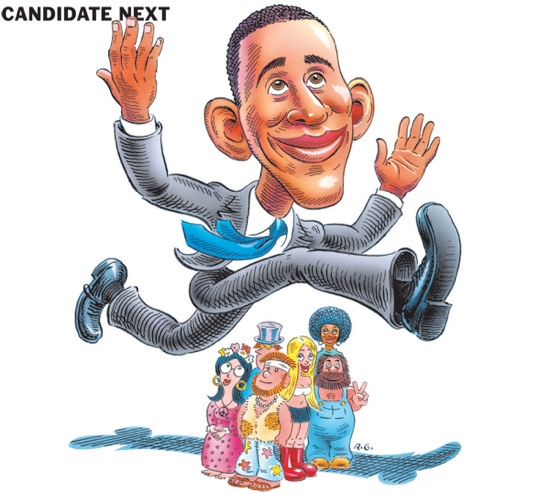
It wasn’t until Barack Obama (born 1961) claimed he wasn’t a Boomer that a few pundits finally recognized that Americans born in the early 1960s might not actually be Boomers, but are instead “post-Boomers” — or perhaps they’re actually the oldest members of the generation born, according to Strauss and Howe, from 1961-81. But Strauss and Howe’s so-called “13th Generation” is a bogus construct, as I’ve argued elsewhere. According to my periodization scheme, members of three distinct generations — younger OGXers, Reconstructionists, and older Revivalists — were born between ’61 and ’81. Why, one wonders, were those born from 1954-63 considered Boomers for such a long time?
Here’s why: according to the US Census Bureau, the postwar baby boom started in ’46 and ended in ’64. Although the Census Bureau does not involve itself in identifying generations, William Strauss and Neil Howe’s influential book Generations (1991) closely mirrored the Census’ dates, by claiming those born between 1943 and 1960 were Boomers. Journalists and most others have tended to blindly agree with the Census, or with Strauss and Howe. Douglas Coupland and Billy Idol’s shared notion that those born (like them) from the mid-1950s through the early 1960s belonged to an “X” or lost generational cohort, was 100% correct. Thanks largely to Obama’s presidential campaign, the OGXers are lost no longer.
However, Obama wasn’t the first to argue that the Blank Generation ended at some point before 1960. When I first wrote about the lost post-Boomer cohort, back in the Winter 1991-92 issue of Hermenaut, I was following the lead of Candi Strecker (It’s A Wonderful Lifestyle), who claimed that her generational cohort should be called the “Repo Man Generation” — i.e., in honor of the cult movie directed by and starring OGXers Alex Cox and Emilio Estevez. More recently, marketing consultant Jonathan Pontell has done his best to persuade us that members of a “Generation Jones” were born between 1954 and ’65 — a periodization that narrowly avoids agreeing with mine. *
The OGX’s ethos can be summed up by another three letters: DIY. Working out of their basements, bedrooms, and garages, OGXers gave us… everything.
Hip hop and rap: e.g., Kool DJ Herc, Afrika Bambaataa, Grandmaster Flash, Melle Mel, Kurtis Blow, Scott La Rock, Ice-T, Chuck D, Flavor Flav, Fab 5 Freddy, Kid Creole, Wonder Mike, Big Bank Hank, Kool Moe Dee. I borrowed the generation’s moniker from Ice-T’s “Original Gangsta,” did you catch that?
Zines: e.g., David Greenberger’s Duplex Planet, Mark Frauenfelder’s boing boing (which became the most popular blog in the world), Candi Strecker’s Sidney Suppey’s Quarterly & Confused Pet Monthly, Jim Hogshire’s ANSWER ME!, Lynn Peril’s Mystery Date, Pagan Kennedy’s Pagan’s Head. **
From Candi Strecker’s zine It’s A Wonderful Lifestyle, vol. 1 (December 22, 1990):
Those of us born in the declining years of the Baby Boom were victims of its cruel demographics. There were so many of ‘them’ — the Sixties generation, the early baby boomers, born in the 1940s and early 50s — that they bent an entire culture their way… while the concerns of … those born in the late 50s and 60s … were now ignored. … This might even explain the explosive growth of ‘zines in recent years: members of the post-Baby Boom generation … realized that if they wanted to be heard at all they’d have to set up their own media. … Those of us born around 1955 fell into the gap between two larger [Boomer] movements, the druggy hedonistic iconoclasm of the 60s and the full-throttle pursuit of materialism in the yuppie 80s.
Alt-culture comics and comic strips: e.g., Dan Clowes’ Eightball, Joe Matt’s Peepshow, Lynda Barry’s strip Ernie Pook’s Comeek, Matt Groening’s strip Life is Hell, Los Bros. Hernandez’ Love and Rockets, Charles Burns’ Black Hole, Chester Brown’s Yummy Fur, Seth’s Palooka-Ville, Joe Sacco’s Palestine, Peter Bagge’s Hate, the work of Mark Newgarden and Drew Friedman, Kaz’s strip Underworld, and Tony Millionaire’s strip Maakies.
As for punk, it’s a tricky question. Proto-punk was pioneered by Boomer refuseniks like Wayne Kramer, Jonathan Richman, Fred “Sonic” Smith, Iggy Pop, David Johansen, Johnny Thunders, Patti Smith, Richard Hell, and Tom Verlaine. (Like a race traitor, who supports attitudes or positions thought to be against the interests or well-being of his or her own race, a number of generation traitors rejected Boomer privilege and identity. The title track of The Voidoids’ 1977 debut album gave a collective moniker to Richard Hell and his fellow generation traitors: the “Blank Generation.”)
The credit/blame for punk ought to be shared equally between Boomer refuseniks/traitors (e.g., Joe Strummer, Joey Ramone, Stiv Bators, Gary Panter, William Gibson, Debbie Harry, Lux Interior, Poison Ivy) and OGXers (e.g., Mick Jones, John Doe, Johnny Rotten, Exene Cervenka, Kaz, Bruce Sterling, Sid Vicious, Keith Levene, Paul Simonon, Feargal Sharkey, Pete Shelley, Joan Jett, Captain Sensible, Rat Scabies, Poly Styrene, and critic Legs McNeil).
New Wave was also co-created by Boomer refuseniks/traitors (e.g., Ian Dury, Nick Lowe, David Byrne, Sting, Stewart Copeland, Mark Mothersbaugh, Ric Ocasek, Doug Fieger, Fred Schneider, Chris Frantz, Ron and Russell Mael) and OGXers (e.g., Elvis Costello, Gary Numan, Belinda Carlisle, Adam Ant, Boy George, Annie Lennox, Holly Johnson, Cindy Wilson). NB: Midge Ure and Andy Partridge were born on the cusp.

2 Tone, finally, was another collaboration between Boomer refuseniks (e.g., Lynval Golding of the Specials; Neol Davies of The Selecter; Everett Morton of The Beat) and OGXers (e.g., Jerry Dammers, Terry Hall of the Specials; Pauline Black, John Bradbury of The Selecter; Ranking Roger, Dave Wakeling of The Beat; Suggs, Mike Barson, Lee Thompson, Chris Foreman, Mark Bedford of Madness; Buster Bloodvessel of Bad Manners). Horace Panter (Specials) was born in the cusp year of 1953.
Post-punk is almost entirely an OGXer phenomenon: e.g., Green Gartside, Ian Curtis, Peter Hook, Robert Smith, Mark E. Smith, Paul Weller, John Lydon, Jah Wobble, Bernard Sumner, Siouxsie Sioux, Jon King, Colin Newman, Richard Butler.
Hardcore, which was even more ferociously DIY, is an OGXer thing: e.g., Greg Ginn, Henry Rollins, Ian MacKaye, Jello Biafra, Raymond Pettibon, Chuck Dukowski, Dez Cadena, H.R., Dr. Know, Darryl Jenifer, Darby Crash.
So is alt-rock: e.g., Michael Stipe, Mike Mills, Bob Mould, D. Boon, Mike Watt, Paul Westerberg, Thurston Moore, Perry Farrell, Gordon Gano, Bob Stinson, Morrissey, Johnny Marr, and Kim Gordon (honorary). PS: In its first incarnation, MTV was staffed entirely by OGXers.
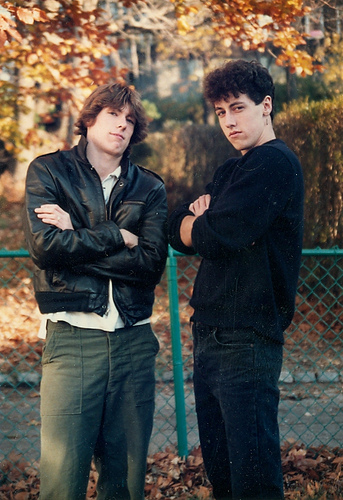
On a personal note: For a vaguely countercultural Reconstructionist like myself, the Eighties (1984-93) would have been intolerable had it not been for the above-mentioned OGXers and OGXer cultural productions. Thanks to the way paved by these and other OGXer creatives, during the Nineties my own cohort found it comparatively easy to publicize and sell our own cultural productions; in part, this was because so many of us accepted and/or promoted the notion that we were “Gen Xers.” We weren’t — and, for the most part, our productions weren’t half as good as those of the Original Generation X.
NOTES AND DRAFTS
Strauss and Howe claim, of their fictitious 13th Generation, that for Americans born just after the Boomers, coming of age was like arriving at “a beach at the very end of a long summer of big crowds and wild goings-on. The beach bunch is sunburned, the sand shopworn, hot, and full of debris — no place for walking barefoot. You step on a bottle, and some cop cites your for littering.” Naturally, it’s absurd to imagine that Strauss and Howe’s so-called 13ers, the oldest of whom would have been only 9 at the end of the 1960s, would feel this sort of resentment. What Strauss and Howe are actually describing is the OGXers’ experience.
In 1967, when Guy Debord wrote that “the individual’s gestures are no longer his own; they are the gestures of someone else who represents them to him,” he was talking about younger Boomers and older OGXers, who were being raised he feared — and taught how to behave, even gesture — not by their families or even their communities, but by television and movies. This generation of latch-key kids learned even their smallest behaviors from sitcoms, dramadies, S.E. Hinton adaptations, and John Hughes high-school farces starring OGXer child actors. For example: Happy Days, The Brady Bunch, The Partridge Family, Lost in Space, Fast Times at Ridgemont High, Taps, Risky Business, Little Darlings, Bad News Bears, The Outsiders, Rumble Fish, 21 Jump Street, Sixteen Candles, The Breakfast Club, St. Elmo’s Fire, Pretty in Pink, Ferris Bueller’s Day Off, Joanie Loves Chachi, Family Ties, Eight is Enough, and One Day at a Time.
“If we’re talking about big-picture mass-cultural generational stuff,” OGXer Chris Fujiwara once told me, the following things define “the nightmare that is the OGX experience”:
For me as an OGXer the biggest thing was the decline of TV during the early Reagan era. I’m sure deregulation and the erosion of the FCC played a big part in this. The early 1980s saw: infomercials, colorization, phone-sex ads, the decline of independent stations (which went out of business, were bought up by the big networks, or were forced to form standardized mini-networks — meaning an end to whatever truly idiosyncratic and strange regional-flavored local programming existed), the decline in quality of public broadcasting, and the near-total disappearance of black-and-white from broadcast TV — making it impossible to see things like Bowery Boys and Charlie Chan movies and the Abbott and Costello Show — the things that made American TV worthwhile. Since then we’ve gained DVD and the Internet, but the sense of simultaneous community (and continuity with the weirdness of the American cultural past) that defined TV is lost.
Speaking of nightmares, Alex Cox’s Repo Man tells the story of a 20something disillusioned not only with American society and culture, but with the empty rebelliousness of his fellow middle-class suburban punks. Note that Otto isn’t un-idealistic, just baffled and skeptical. As I’ve written elsewhere, while OGXers were in their teens and 20s, socialism as a doctrine and a movement no longer seemed capable of addressing the insurgent political, economic, and cultural doctrine that during the market-worshiping Eighties would come to be called neoliberalism. Neoliberal triumphalism, globalism, the dominant discourse: what were OGXers supposed to do about them?
OGXers had a front-row seat for the Reagan Revolution, during which they saw liberal become a pejorative, as many Americans recoiled from the liberation movements of the Sixties and Seventies. The Boomers had Roe v. Wade; OGXers got the anti-abortion backlash and the keeping-my-baby meme. Too young for Woodstock, just old enough for Watergate and the energy crisis, in 1990 Time Magazine described their youngest members as directionless, nihilistic, depressed “twentysomethings.” As for older OGXers, Time and other outlets lumped in the oldest OGXers in with the Boomers. True, the Original Generation X is cynical, ironical, skeptical — but that’s not the same as directionless, nihilistic, or depressed.
Postmoderns offered up theories of how social control was now exercised not through class domination but increasingly subtle mechanisms. The modern liberal state, OGXers were informed, was a neototalitarian apparatus designed solely to optimize the economic utility of recalcitrant individuals. No wonder that many OGXers embraced what Baudrillard would call their generation’s “soft ideologies” (e.g., ecologism and antiracism) instead of, say, social justice. Having given up on the workingman and college students after ’68, Postmodern and Anti-Anti-Utopian intellectuals cast about for a new revolutionary subject: the psychotic, perhaps; or the criminal, the part-time worker, maybe the unemployed? In a 1977 interview, Foucault said he was looking for “someone who, wherever he finds himself, will pose the question as to whether revolution is worth the trouble, and if so which revolution and what trouble.”
That’s what OGXers have asked; that’s what Linklater’s Slacker, for example, is about. But is it possible to describe OGXers positively? Yes, and I’ll take my cue from British music journalist Simon Reynolds’s Rip It Up and Start Again, a work of cultural anthropology exhuming the years 1978-84 in England and the US — that is, the years during which the OGXers came of age. According to Reynolds, postpunk music, style, and affect was a backlash against the authenticity-mongering of punk, which (despite its anti-rockist stance) tended to be obsessed (like rock) with the shibboleth of authenticity. Though there was a fanatical seriousness of intent with post-punk acts like Scritti Politti and Public Image, Ltd., post-punks tended to embrace their own inauthenticity. Post-punk may have been ironic in its questioning of identity and gender roles; but it was a passionate, engaged irony.
Passionate, engaged irony: I have long believed that there is no superior mode of living. Examples of engaged irony can be found in every modern generation; but it is the OGXers’ mantra.
Who belongs to this generation? Click here.
Please note that the following was written in 2008–2010.

Members of the generational cohort born from 1944-53 were in their teens and 20s during the Sixties (1964-73, not to be confused with the the 1960s), and in their 20s and 30s during the Seventies (1974-83). Though this cohort is easily distinguished from its immediate juniors (whom I’ve dubbed the Original Generation X, born 1954-63), for some reason the influential middlebrow pop demographers William Strauss and Neil Howe lumped the two cohorts together and called them, collectively, Baby Boomers.
Some of our favorite members of the 1944–1953 generational cohort: Agnetha Fältskog, Alan Moore, Andy Kaufman, Art Spiegelman, Bill Murray, Brian Eno, Dave Arneson, David Bowie, David Cassidy, David Lynch, Divine, Donovan, Edward P. Jones, Fran Lebowitz, Gary Panter, Geezer Butler, Giant Haystacks, Gil Scott-Heron, Gilda Radner, Grace Jones, Gus Van Sant, Hakim Bey, Iggy Pop, Jack Goldstein, Joey Ramone, John Bonham, John Carpenter, John Waters, Jonathan Richman, Junkyard Dog, Kathy Acker, Kim Deitch, Larry David, Lemmy, Lester Bangs, Lux Interior, Marc Bolan, Mark Mothersbaugh, Martin Amis, Octavia E. Butler, Pam Grier, Paul Reubens, Philippe Petit, Rainer Werner Fassbinder, Reverend Billy, Richard Hell, Robert Mapplethorpe, Robyn Hitchcock, Sacheen Littlefeather, Slavoj Žižek, Steve Wozniak, Stiv Bators, Suzi Quatro, Syd Barrett, Todd Rundgren, Tom Verlaine, Wendy Pini, William Gibson, and Yoshikazu Ebisu.
What’s admirable or interesting about most of these members of the 1944–1953 cohort stems from their rejection, not only of previous generations’ values, but of their own generation’s traits. Almost all of the truly interesting so-called Boomers, that is to say, are in fact anti-Boomers. Like a race traitor, who supports attitudes or positions thought to be against the interests or well-being of his or her own race, these “generation traitors” rejected Boomer privilege and identity.
I’ve borrowed this cohort’s moniker from the title track of The Voidoids’ 1977 debut album; it perfectly captures the anti-Boomer tendency within the so-called Boomer cohort: the “Blank Generation.” (BTW, “The Blank Generation” is a parody of a 1959 novelty song, “The Beat Generation.”) I realize that Richard Hell was talking about a disaffected subculture, not a demographic; but of course, every so-called generation in my schema is characterized less demographically than culturally.

My generational periodization scheme has been known to rub people the wrong way, particularly when it comes to the so-called Boomers. Here’s the argument I’ve heard: “Boomer is a term used to describe someone born during the demographic post-World War II baby boom, which the United States Census Bureau tells us started in 1946 and ended in 1964. Why do you insist that the Boomer generation (a) begins before WWII ended, and (b) ends a decade before the end of the baby boom? The Census Bureau proves you wrong!”
Last point first: The Census Bureau does not involve itself in defining generations. And when it comes to defining generations, I’m hardly alone in balancing demographics with cultural factors. In fact, even Strauss and Howe’s start and end dates for the Blank Generation don’t adhere slavishly to the Census Bureau’s birthrate statistics: they claim the Boomers were born from 1943-60. Generational periodization is as much an art as it is a science. ’Nuff said.
The argument over whether the Blank Generation starts in ’43 or ’44 is tricky. I don’t agree with Strauss and Howe’s start date — which would require us to think of Anti-Anti-Utopian outfits like Monty Python and the Rolling Stones as Blanks. However, in my scheme, years ending in a “3” or “4” are generational cusp years. So a few people born in ’43 — e.g., Chevy Chase, Todd Gitlin, David Geffen — are Blanks; meanwhile, a few born in ’44, — e.g., Angela Davis, Sly Stone, Bill Griffith — are Anti-Antis. To be born in a cusp year means to experience a (productively) divided generational consciousness. (George W.S. Trow, author of Within the Context of No Context, every line of which expresses the author’s sense of having been born too late, was born in ’43. And Bill Griffith’s Zippy strip represents its author as a divided consciousness.) Still, the Blank Generation’s start date is no later than ’44. George Lucas, Lorne Michaels and Steve Martin, Michael Douglas and John Lithgow, and members of second-wave British Invasion bands like Led Zeppelin and Cream were born in ’44 and ’45 — and they’re Blanks, without a doubt.
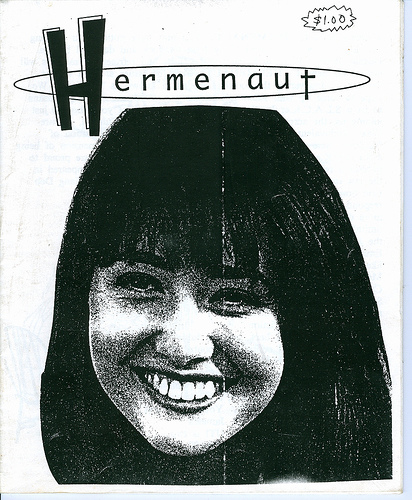
Fewer and fewer people, these days, agree with either the Census’ end date for the so-called Boomers (’64) or Strauss and Howe’s end date (’60). I first argued that two distinct generations were born during the demographic birth boom of 1946-64 back in ’92, in the pages of Hermenaut. I’d picked up the idea from older cultural commentators — like the zinester Candi Strecker, who’d dubbed those (like herself) born between the mid-’50s and mid-’60s the “Repo Man Generation.” More recently, a marketing consultant named Jonathan Pontell has persuaded middlebrow journalists that a “Generation Jones” was born from 1954-65. And as you’ll recall, during his election campaign, Barack Obama (born 1961) got pundits debating the Blank Generation’s parameters when he insisted that he wasn’t a Boomer. So the Blank Generation ends short of the boom itself; but how short, is the question.
According to my absurdist yet correct periodization scheme, the break between the Blanks and the Original Generation X happened in 1953-’54. This accounts for the heightened generational consciousness and anti-Boomer animus of Kurt Andersen and Alex Beam, to name two cuspers born in ’54. But enough, until the next installment of this series, that is, about the Blanks’ juniors.

Pundits — beginning with Christopher Lasch — have described the so-called Boomers as a “narcissistic” generation, but that’s too pejorative. I’d suggest that the most striking feature of this generational cohort is its imaginative suggestibility. I borrow the phrase from psychologists who study “responsivity to suggestion without hypnosis,” which is to say one’s capacity for self-hypnotizing. Imaginative suggestibility arises out of a particular constellation of psychological traits: absorption (the ability to immerse oneself whole-heartedly, and without irony, in whatever it is that one is into, at that moment, only to drop it one day and quickly get absorbed in something else), fantasy-proneness (a marked tendency to frame one’s own life in a mythical register), hysteria-proneness (a tendency towards emotional excess), and empathy (the capacity not merely to understand the pain of others, but feel it). Doesn’t that sound like the Blanks?
Suggestibility isn’t necessarily a good thing: for example, Thomas Frank’s 1997 book, The Conquest of Cool, persuasively argues that even the Blanks’ counterculturalism was inflicted on them by the dominant culture. However, were it not for their suggestibility, the Blanks might not have followed the lead of Anti-Anti-Utopian elders like Gloria Steinem, Abbie Hoffman, Eldridge Cleaver, Ken Kesey, Michael O’Donoghue, Woody Allen, Elvis, Tina Turner, George Clinton, Aretha Franklin, Bob Dylan, The Beatles, and The Velvet Underground — thanks to whom, if you ask me, the Blanks’ influence was, briefly, world-historical.
ABSORPTION
- the anti-war movement
- social experimentation
- sexual freedom
- drug experimentation
- civil rights movement
- environmental movement
- women’s movement
- anti-nukes movement
- advocacy of world peace
- hostility to the authority of government and big business
- self-awareness/Me Decade
FANTASY-PRONENESS
- JFK/Camelot
- The Moon Landing
- blockbusters: Jaws, E.T., Rocky series, Close Encounters of the Third Kind, Star Wars series, Raiders of the Lost Ark series, Back to the Future series, Jurassic Park series, Ghost Busters series
- most movies about coming of age in the Fifties (1954-63): Animal House, American Graffiti, Grease, Forrest Gump, The Buddy Holly Story, Cry-Baby, Dead Poets Society, Diner, Hoosiers, The Lords of Flatbush, Stand By Me, the Porky’s series, even Superman
- most, but not all, movies about coming of age in the Sixties (1954-63): Apollo 13, The Doors, Good Morning, Vietnam, Hairspray, Platoon, Born on the Fourth of July, Losin’ It, That Thing You Do!. Perhaps not The Outsiders, Rumble Fish, The Wanderers, or The Warriors; or Apocalypse Now — one tends to associate these movies with writers and directors from previous generations.
The Blanks’ fantasy-proneness explains why they found comic books so engrossing, during their early formative years. As adults, they continued to see themselves as superheroes. The first major superhero feature film was Superman (1978), starring Christopher Reeve (a Blank); and subsequent comics-inspired movies were also Blanks-oriented: from Tim Burton’s Batman (1989) to Dick Tracy (1990), Batman Returns (1992), and Batman Forever (1995). Jay Cantor’s 1994 novel, Great Neck, perceptively explores the Blanks’ generational proclivity for self-mythologization in a superheroic register.
HYSTERIA-PRONENESS
- Beatlemania
- protests and riots
- Woodstock and Altamont
EMPATHY
- Third-Worldism
- Bill Clinton
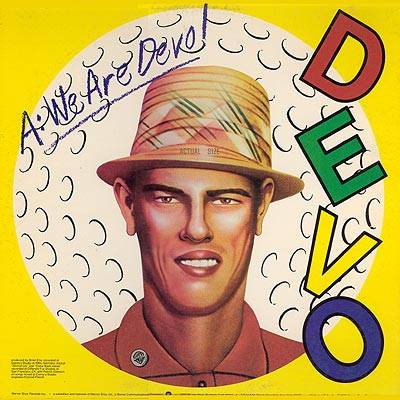
As for the punks, nobrow comics, glam rockers, metalheads, and refuseniks mentioned at the beginning of this post, what makes them so admirable is their unsuggestibility. Blanks like Alan Moore, Andy Kaufman, David Lynch, Geezer Butler, John Carpenter, John Waters, Kathy Acker, Lester Bangs, Octavia Butler, Reverend Billy, Richard Hell, and Slavoj Zizek made it their life’s mission to warn the rest of us about drinking the Kool-Aid.
Who belongs to this generation? Click here.
Please note that the following was written in 2008–2010.
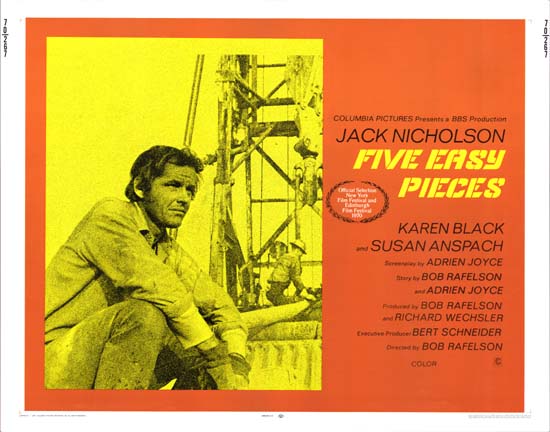
Members of the generational cohort born from 1934-43 were in their teens and 20s during the Fifties (1954-63, not to be confused with the the 1950s), and in their 20s and 30s during the Sixties (1964-73). Though this cohort is easily distinguished from their immediate elders (the Postmodernists, born 1924-33), William Strauss and Neil Howe lumped the two cohorts together and dismissively named them the “Silent Generation” (1925-42).
It’s possible to understand why the 1924–1933 cohort, whose emphasis on the ambivalence, indeterminacy, and undecidability of everything did not lend itself to protesters’ slogans, were considered “silent” by their ideological and gung-ho elders. “Silent,” however, is a laughably wrong-headed descriptor for the 1934-43 cohort — whose number includes Abbie Hoffman, Gloria Steinem, Eldridge Cleaver, Jane Goodall, George Carlin, Richard Pryor, Bob Dylan, Valerie Solanas, Barbara Ehrenreich, Mario Savio, Kate Millett, Vaclav Havel, Stokely Carmichael, Ti-Grace Atkinson, plus honorary members Susan Sontag and Angela Davis. Come on ‚ do you still buy into Strauss & Howe’s generational periodization scheme?
Borrowing Sartre’s slogan, coined after the Soviet invasion of Hungary, about being neither communist nor anticommunist but ”anti-anticommunist,” the American literary theorist Fredric Jameson (born on the cusp of this generation and the Postmodernists) coined the phrase “anti-anti-utopian” to describe the only form of utopianism available after the triumph of anti-utopianism during the early Cold War. Jameson claims that certain SF authors — Philip K. Dick, Ursula K. Le Guin — who belong to what I’ve named the Postmodernist generation are anti-anti-utopians; he also names Samuel R. Delany, who was born in ’42. In honor of Delany, and following Jameson’s productive line of theorizing, I’ve named this generational cohort: the Anti-Anti-Utopians.
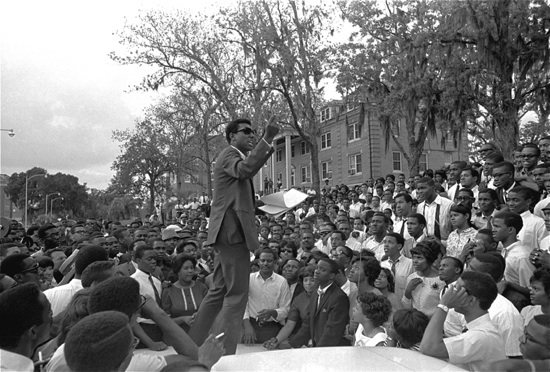
High-, low-, no-, and hilobrow members of the 1934-43 generation include: Abbie Hoffman, Barbara Ehrenreich, Bob Dylan, Brian Wilson, Brigitte Bardot, Bruce Dern, Bruce Lee, Buddy Holly, the Dalai Lama, David Cronenberg, Don DeLillo, Eddie Cochran, Eldridge Cleaver, Elvis Presley, Evel Knievel, Georges Perec, Giorgio Agamben, Hunter S. Thompson, Iain Sinclair, Ian Dury, Jerry Lee Lewis, John Kennedy Toole, John Lennon, Joseph Brodsky, Julia Kristeva, Leonard Cohen, Mama Cass, Margaret Atwood, Michael Moorcock, Michael O’Donoghue, Otis Redding, R. Crumb, Ralph Bakshi, Richard Pryor, Roy Orbison, Samuel R. Delany, Stokely Carmichael, Thomas Pynchon, Tura Satana, Valerie Solanas, Vito Acconci, Vivienne Westwood, Wanda Jackson, Wendell Berry, Woody Allen, and Yvonne Craig. Angela Davis and Yoko Ono are honorary members; and Susan Sontag might be one.

Why does Middlebrow insist on calling the 1934-43 cohort “silent,” despite all evidence to the contrary?
To Middlebrow, there are only two legitimate, and three possible modes of action. It’s legitimate to work contentedly within the status quo — though contentment might involve adjustment, as in: becoming “well-adjusted.” And it’s legitimate to agitate vociferously for reform — i.e., it’s legitimate for a group that’s been denied entrance to the middle class, or denied recognition or respect by mainstream culture, to agitate for membership, recognition, and respect. These legit modes of action are heimlich and gemütlich. Middlebrow also recognizes, and, in a guarded way, applauds a third, unheimlich (nobrow) mode of action: dropping out of the middle class and mainstream culture. The Hardboiled, Partisan, and New God generations aren’t considered “silent” because their notable members tended to adopt one of these three modes of action. Notable Postmodernists, however, regarded this tripartite model as an invisible prison, and themselves as prisoners — sullenly close-mouthed, or sneakily tunneling under the walls.
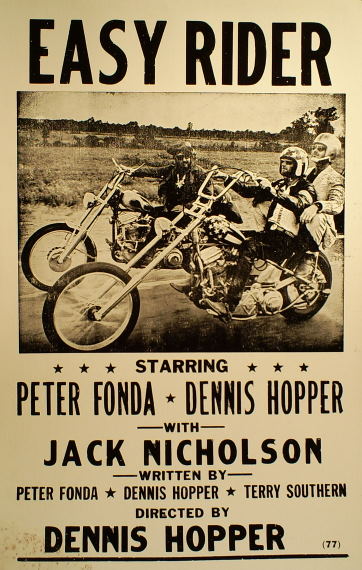
Notable members of the 1934-43 cohort weren’t silent in the same way. Although they agreed with their Partisan, New God, and Postmodernist elders that utopian blueprints are inherently totalitarian, or at least proto-totalitarian, they vociferously and articulately refused to accept the postwar consensus that there was no longer any alternative to liberal capitalism. So were they reformers? Some were, perhaps, but others simultaneously refused to renounce a utopian faith in the possibility of another world. They were neither utopian nor anti-utopian. This double-negative worldview is difficult to articulate, and nearly impossible to translate into action! It’s not as pessimistic a worldview, perhaps, as the Postmodernist vision of the liberal capitalist social order as an invisible prison — but to Partisans and New Gods, it might seem a “silent” one. Middlebrows, of course, call members of this neither-nor generation “silent” because they’d like to muzzle their canniest foes.

Woody Allen is an avatar of this neither-nor generation, which (most notably during the Sixties) looked upon the competing ideologies and discourses of older and younger generations with a Postmodernist’s detachment, yet which was also ferociously idealistic and outspoken. Allen’s comedies of the Sixties (1964-73), particularly Bananas, Sleeper, and Love and Death, seriously critique the excesses of the Establishment and the revolutionary underground alike. Thomas Pynchon’s entire oeuvre also criticizes both the Establishment and the revolutionary underground, or counterculture.
John Lennon’s “Revolution” also has an idealistic neither-nor message: “When you talk about destruction/Don’t you know that you can count me out (in).” Bob Dylan’s refusal to conform to the New God-era model of a folk singer might be considered an idealistic neither/nor mode of action. Leonard Cohen: “the major fall/the minor lift” is a good encapsulation of anti-anti-utopianism.
Eldridge Cleaver articulated a version of this non-reformist utopianism when he told an interviewer: “I believe that there are two Americas. There is the America of the American dream, and there is the America of the American nightmare. I feel that I am a citizen of the American dream, and that the revolutionary struggle of which I am a part is a struggle against the American nightmare, which is the present reality.”
And then there’s Bruce Lee’s neither-nor fighting style. “Styles require adjustment, partiality, denials, condensation, and a lot of self-justification,” he wrote, in one of his philosophical martial arts treatises. “The man who is really serious, with the urge to find out what truth is, has no style at all. He lives only in what is.”

If Middlebrow is forever working to naturalize the unnatural, eternalize the temporary, and make the contingent seem inevitable, performance art does the opposite. Performance art is an anti-middlebrow artform, one which (in more or less compelling and engaging ways) signals the artist’s rejection of the terms and conditions of modern life by treating everyday reality as though it were theater. Performance art emerged in the Sixties with the work of Postmodernist artists such as Yves Klein, Wolf Vostell, and Allan Kaprow, as well as Anti-Anti-Utopian artists like Vito Acconci (pictured below, in a 1970 performance), Hermann Nitsch, Carolee Schneemann, and honorary Anti-Anti-Utopian Yoko Ono. (Joseph Beuys is a New God, which explains why he fell out with Fluxus, if you ask me; and Chris Burden is Blank Generation.) Gilbert and George are also Anti-Anti-Utopians.

Middlebrows despise performance art, and mock it viciously whenever possible. Two years ago this month, for example, when Star Simpson, an electrical engineering major at MIT, was arrested for innocently walking into Boston’s Logan Airport (where she was meeting her boyfriend’s plane) wearing a sweatshirt adorned with a plastic circuit board on which a handful of glowing green lights in the shape of a star were wired to a 9-volt battery, middlebrow pundits snarkily accused Simpson of the crime of performance art.
The Boston Globe columnist Jeff Jacoby described Simpson’s actions as a “public display,” an “immature stunt,” and a “juvenile prank.” Meanwhile, Boston Herald columnist Howie Carr wrote: “The First Amendment does not give you the right to yell fire in a crowded theater. Or don’t bring what looks like a bomb into Logan Airport….” Carr’s Herald colleage Peter Gelzinis scoffed: “Maybe Star Anna Simpson thought she could saunter through Logan and return to Cambridge with a helluva tale about how no one said a word to her.” The Herald’s Michele McPhee agreed 110%: “There is absolutely nothing artistic about scaring people in public places.”

A blogger at the grassroots-conservative website Free Republic, sarcastically ventriloquizing (nonexistent) supporters of Simpson’s (unintentional) performance art, articulated the anxiety expressed in slightly more subtle ways by these middlebrow critics: “Lighten up! It was performance art, everybody! It was a brilliant illustration of the gestapo tactics of the Bush Administration to any law-abiding citizen strolling through an airport with something that looks like a bomb…. It was a stunning performance and I hope she gets an ‘A.'” Though Simpson wasn’t doing any such thing, middlebrows are apparently so afraid that a performance artist might succeed in waking us up to the possibility of radical change that they responded instinctively with a tsunami of mocking hostility.
Performance art, in which so many (Lennon, Dylan, Cleaver, Hoffman, Kesey, Thompson, Crumb, Pynchon, Solanas, Allen) of our favorite Anti-Anti-Utopians engaged, is — like Dada and Neo-Dada — unheimlich. Whenever possible, Middlebrow seeks to coopt and suborn the unheimlich, transforming it into something cuter and cuddlier: cheese, quatsch. If unable to do so, Middlebrow turns performance art’s japery back on itself, a thousand-fold. Ask yourself why we’ve all been persuaded to hate Yoko Ono — that’s right. She’s anti-middlebrow.
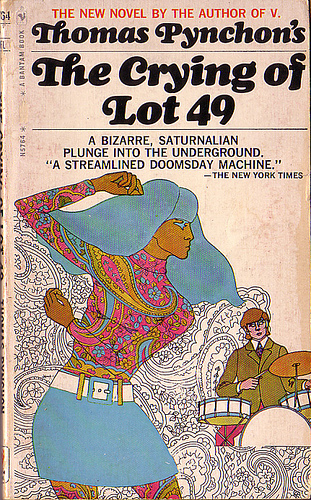
I claimed, above, that Anti-Anti-Utopians are easily distinguishable from their immediate elders, the Postmoderns. But I went on to note that Anti-Anti-Utopians looked upon the competing ideologies and discourses of New Gods, Partisans, and Blanks with a Postmodernist’s detachment. Though certain influential Anti-Anti-Utopians can be called performance artists (whether or not they called themselves that), the performance art of the Sixties was pioneered in part by Postmodernists. So how, exactly, are the Anti-Anti-Utopians distinct, as a generation, from the Postmodernist cohort?
Compare Don DeLillo, Thomas Pynchon, Thomas McGuane, John Kennedy Toole, and Hunter S. Thompson, all of whom were born from 1934-43, to similar novelists from the preceding generation: John Barth, Donald Barthelme, Robert Coover, William Gass, E.L. Doctorow. OK, Barth’s Lost in the Funhouse is pretty amusing, but in general, Anti-Antis are funnier — not less serious, but perhaps less earnest — than Postmodernists. They derive an unseemly amount of anarchistic amusement from the tensions, uncertainties, and paradoxes of postwar American life. It’s for this reason that I’ve named Philip Roth (born in the cusp year 1933) an honorary Anti-Anti.
Anti-Antis didn’t consider themselves postmodern; they were generally less pessimistic than Postmodernists; and even though they were unwilling to articulate what utopia might look like, their anti-anti-utopianism expressed a hopefulness not seen since the Modernists. Speaking of whom, it seems fair to say that Woody Allen rebooted Charlie Chaplin and Groucho Marx; John Lennon and Yoko Ono — Hugo Ball and Emmy Hennings; Michael Moorcock — H.P. Lovecraft; R. Crumb — Henry Miller; Samuel R. Delany and Margaret Atwood — Olaf Stapledon, Karel Čapek, Yevgeny Zamyatin.
Meanwhile, the Yippies (Hoffman), Merry Pranksters (Kesey), even the Beatles (Lennon) can be seen as dissensual organizations of talented misfits — like Dada, or D.H. Lawrence’s plan for the colony of Rananim. Such Argonaut Follies are non-totalizing organizations that serve as inspirations for an un-blueprintable utopian society.
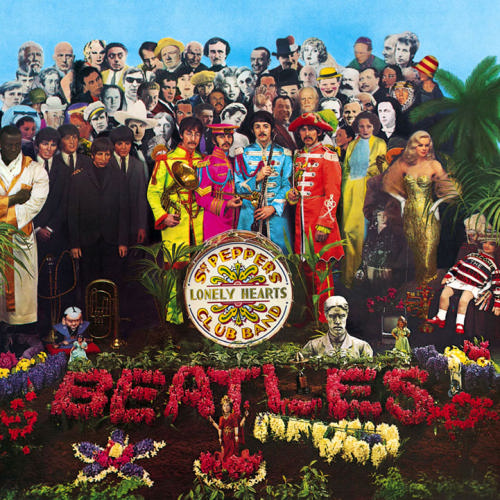
The Sixties (1964-73) belonged to the Anti-Anti-Utopians. When we think of the Sixties, we think of feminists (Gloria Steinem), Yippies (Abbie Hoffman), Black Panthers (Eldridge Cleaver), gentle bearded freaks (Jim Henson) and violent ones (Charles Manson, Theodore Kaczynski), gonzo journalists and far-out novelists (Hunter S. Thompson, Ken Kesey, Don DeLillo, Thomas Pynchon). The Sixties were about the films of Woody Allen; the comedy of George Carlin and Richard Pryor; and the songwriting of Gerry Goffin, Sonny Bono, and Carole King. All of whom were Anti-Anti-Utopians.
Pop music in the Sixties was an Anti-Anti-Utopian thing. That era saw the triumphant comeback of Elvis; the success of soul and funk (Marvin Gaye, Smokey Robinson, Tina Turner, George Clinton, Otis Redding, Aretha Franklin, Curtis Mayfield, Isaac Hayes); and the apotheosis of folk and folk rock (Joan Baez; Bob Dylan; Joni Mitchell; Peter, Paul & Mary; also members of the Mamas and the Papas, Simon and Garfunkel, The Byrds, The Grateful Dead). The world-historical triumph of rock, of course, was also a Sixties phenomenon: Besides the Beatles and the Rolling Stones, members of The Doors, The Velvet Underground, The Beach Boys, and Jefferson Airplane were born from 1934-43; so were Jimi Hendrix, Janis Joplin, Captain Beefheart, and Frank Zappa.
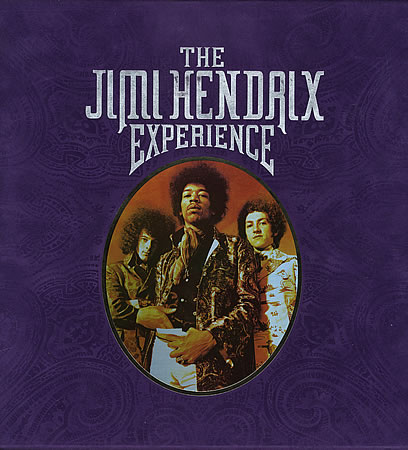
To the extent that the Blank Generation wants to claim the Sixties as its own, it must be replied that they mostly went along for the ride. The modes that we associate with Blanks during the Sixties — i.e., dropping out of the middle class and mainstream culture, or vociferously agitating for reform (as opposed to insisting, anarchistically, that another world is possible) — are ones that Middlebrow encourages and applauds. As for the Blanks’ antiwar activism, well, one of their leaders — John Kerry — was born on the cusp of the two generations. The March on the Pentagon was organized by older pacifists; and Hoffman organized the “levitation” stunt. Also, Blank Generation activism ceased once the draft ended. ‘Nuff said.
Who belongs to this generation? Click here.
Please note that the following was written in 2008–2010.
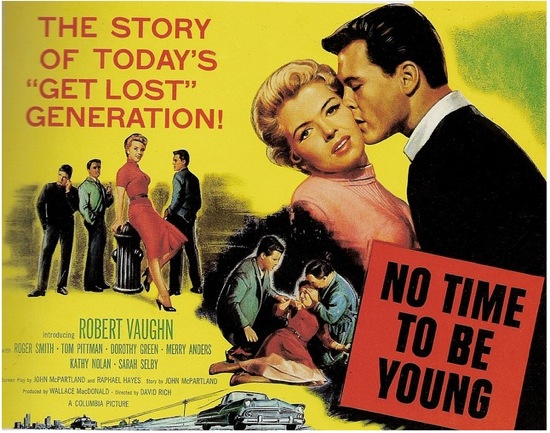
Members of the generational cohort born from 1924-33 were in their teens and 20s during the Forties (1944-53, not to be confused with the the 1940s), and in their 20s and 30s during the Fifties (1954-63). Though this cohort is easily distinguished from their immediate juniors (born 1934-43), the influential generational periodizers William Strauss and Neil Howe have lumped the two distinct cohorts together and dismissively named their own awkward construct the “Silent Generation” (1925-42). Why “silent”? Because after two noisily ideological, discourse-dominating, middlebrow-ized generations (the Partisans, the New Gods), the Postmodernists’ relative imperviousness to Middlebrow, their deep skepticism about its discourse, must have made Middlebrow very nervous.
In a November 1951 story, Time Magazine, Middlebrow’s propaganda machine, opined: “The most startling fact about the younger generation is its silence. With some rare exceptions, youth is nowhere near the rostrum. By comparison with the Flaming Youth of their fathers & mothers, today’s younger generation is a still, small flame. It does not issue manifestoes, make speeches or carry posters.” It’s impossible to read this sort of thing as a lament — why would Time want American youth to rebel? Instead, we should hear in such statements the tone of a complacent, if slightly apprehensive plantation overseer: “It’s quiet… too quiet.”
Time tips its hand when the story suggests why the youth of 1951 (members of the Postmodernist cohort were between 18 and 27, at the time) might feel stifled:
The facts are that the U.S. is a highly organized society, must be, and will get more rather than less organized; that the big corporation is here to stay (and is a progressive instrument of U.S. capitalism). What is discouraging to some observers is not so much that youth has accepted life within the well-padded structure of organized society and big corporations, but that it seems to have relatively little ambition to do any of society’s organizing.
In other words, the Partisans and New Gods built an invisible prison, under Middlebrow’s direction — so why won’t the Postmodernists play along? Why are they acting sullen and resentful, or merely passive and browbeaten? “Never had American youth been so withdrawn, cautious, unimaginative, indifferent, unadventurous — and silent,” William Manchester, the gung-ho New God historian, recounted in 1974. Perhaps it’s because the Postmodernist cohort were able to perceive, however dimly, the bars of their invisible prison. Theirs was a prisoner’s sullen or passive silence.
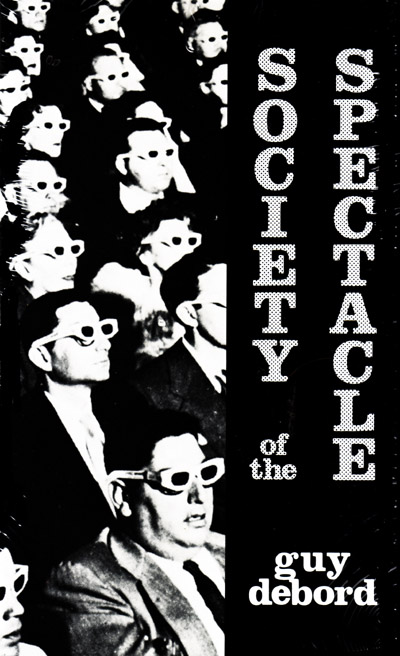
The Postmodernist cohort came of age during the early Cold War era. The Soviet dominance over eastern Europe and the threat of apocalyptic nuclear war made it an anxious time; but during the Forties and Fifties, High Middlebrow — working closely with Highbrow (for example, the collaboration between the high-middlebrow American Congress for Cultural Freedom and the highbrow Congress for Cultural Freedom, both of which were funded by the CIA) — successfully encouraged most Westerners to keep the faith in fixed, universal categories, and in certainty. The most interesting figures of the 1924-33 cohort would diagnose and articulate a new sociocultural condition: one in which fixed, universal categories and certainty were troubled and replaced by difference, process, anomaly.
An astonishing number of philosophers, scientists, and critics born from 1924-33 — including Jean-François Lyotard, Paul K. Feyerabend, Benoit Mandelbrot, Michel Foucault, Paul Baran, Clifford Geertz, Hilary Putnam, Jacques Derrida, Jean Baudrillard, Pierre Bourdieu, Luce Irigaray, Gilles Deleuze, Félix Guattari, Michel de Certeau, Louis Marin, Christian Metz, Guy Debord, Hélène Cixous, Umberto Eco, Paul Virilio, J. Hillis Miller, Geoffrey Hartman, and Richard Rorty — argued against scientific rationality and unitary theories of truth and progress; instead, they emphasized the ambivalence, indeterminacy, and undecidability of things. Lyotard, who was fiercely critical of many of the “universalist” claims of the Enlightenment, named a persistent opposition to universals, meta-narratives, and generality the “postmodern condition”… hence the moniker of this generation. NB: Susan Sontag may be an honorary Anti-Anti-Utopian.
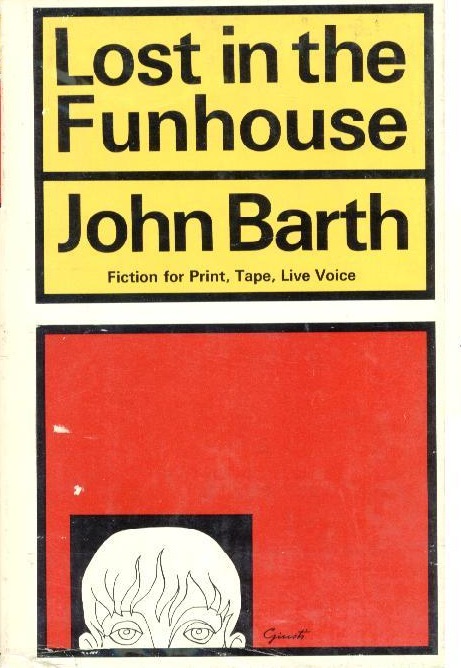
Meanwhile, the majority of those authors who pioneered what has been called “postmodern” fiction were also born from 1924-33: John Barth, Donald Barthelme, Robert Coover, William Gass, John Hawkes, Gilbert Sorrentino, Thomas Bernhard, J.G. Ballard, Philip K. Dick, E.L. Doctorow, Milan Kundera, Manuel Puig, plus honorary Postmodernists Italo Calvino, William Gaddis, and Kurt Vonnegut. NB: Not every novelist born from 1924-33 is stylistically a postmodernist; see note below about Updike, Morrison, and McCarthy. As a group, postmodern authors discovered and celebrated the eclecticism and hybridity lurking just beneath the modernist illusion of conceptual unity and institutional integrity. In their writings we find, e.g., the author as character; plots which are self-contradicting or which blur reality and fiction; form and language being disrupted or played with; and fiction that overtly references other fictional works.
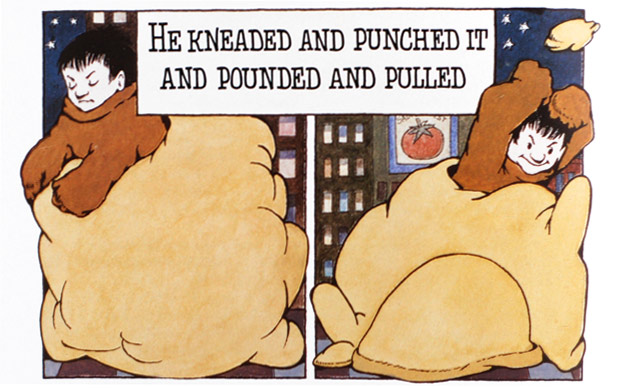
Only a diehard agent of Middlebrow could fail to be convinced by the preceding paragraphs! The 1924-33 cohort is a distinct and well-defined one. Even non-postmodern members of the Postmodernist Generation grew up in a world in which two world wars, the Holocaust, the Stalinist Gulag, and Hiroshima demonstrated the carnage and destruction that the modernist rhetoric of progress is capable of creating. If their elders (the Partisans, the New Gods) abandoned utopianism (i.e., the dream of a momentous, rational, all-encompassing change in the human condition, achieved through the revolutionary transformation of society), then Postmodernists went further, and grew skeptical about Highbrow’s either/or (utopian) claim that Modernity and the Enlightenment are archetypes of unmitigated progress.
The most popular non-postmodern authors from this generation — John Updike, Toni Morrison, and Cormac McCarthy — agree with their postmodern peers that something’s gone awry with the technologically advanced, prosperous, contented, triumphalist liberal democracy that is postwar America; they lack (and mock/mourn) the virile can-do spirit of the New Gods; and their protagonists are beset with anxiety-provoking tensions, uncertainties, and paradoxes that can never be resolved. NB: Philip Roth (whose The Counterlife is considered postmodern) is an honorary Anti-Anti-Utopian.
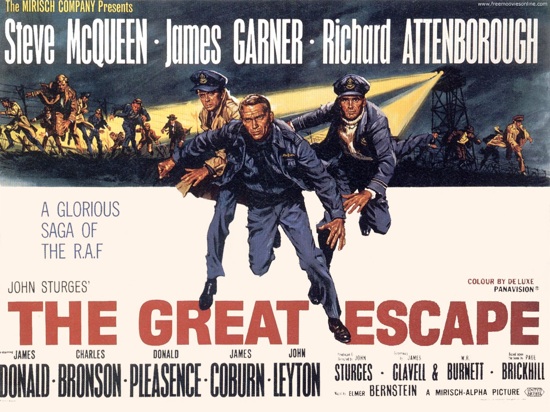
A generation whose most interesting members struggled to destabilize and de-essentialize all orthodoxies might certainly look “silent” when compared with the Partisans and New Gods. From the Seventies onward, Postmodernists would be tempted by High Middlebrow’s compelling compromise: the neoconservative both/and notion that Modernity and Enlightenment aren’t perfect, but they’re less imperfect than the alternatives. Nobrow offered the neither/nor consolations of irony, absurdism, and a kind of irreligious apocalypticism. HiLobrow insisted on something altogether more uncanny and eccentric: progressive, even utopian ideals and irony, absurdism, apocalypticism. Impossible! Nevertheless. The “silence” of these elder members of the so-called Silent Generation is the strategic silence of sappers and miners, undermining the enemy’s fortress; or of prisoners tunneling their way to freedom.
Some members of this cohort memorably portrayed jailbreak artists, or imprisoned souls who found ways to survive. The Great Escape’s Steve McQueen, James Garner, James Coburn, and David McCallum; Papillon’s McQueen; Escape from Alcatraz’s Clint Eastwood; Cool Hand Luke’s Paul Newman; The Hill’s Sean Connery; The Fugitive’s David Janssen; The Prisoner’s Patrick McGoohan; not to mention Stir Crazy’s Gene Wilder and Johnny “Folsom Prison Blues” Cash — are all Postmodernists.
I don’t find Strauss and Howe’s justification for their identification of a “Silent Generation” convincing, but all too many journalists and historians do. During the most recent presidential campaign, New York Times Book Review editor Sam Tanenhaus argued in the NYT’s Week in Review section that an understanding of “generational distinctions” explains why no American born in the 1930s has been elected president. (This is a key point that Strauss and Howe make in their 1991 book, Generations: members of the so-called Silent Generation make good facilitators, technocrats, and top presidential aides — but not presidents.) It might be, Tanenhaus writes, that “Americans born in the 1930s lack the particular qualities we look for in our national leaders” — because “they were the ‘silent generation,’ content to be guided by their elders.” (As noted elsewhere in this post, I disagree with that notion.)
Tanenhaus wanted to argue that John McCain (born 1936) does not exhibit the same weaknesses that the other so-called Silents who’ve mounted presidential campaigns — Ted Kennedy, Mike Dukakis — have supposedly exhibited. Unlike these uninspired and uninspiring Democrats, Tanenhaus insists, the Republican McCain somehow “defies the stereotype of the ‘silent generation.'” How does he do so, exactly? Tanenhaus doesn’t say — he only suggests that McCain is “skeptical toward the very expectations he stoically fulfills.” (Somehow, this strikes me as an apt description of me of William Shatner’s acting style; Shatner, of course, is also a Postmodern.) Tanenhaus isn’t making a generational case, here; he merely suggests that McCain is a semi-idealistic, semi-cynical middlebrow, while Kennedy and Dukakis are idealistic highbrows.
Note, however, that according to my periodization scheme, Kennedy and Dukakis are members of the Postmodern Generation, while McCain (not to mention presidential hopefuls Ralph Nader, Jesse Jackson, John Kerry, Larry Flynt, and Colin Powell) in the succeeding one: the Anti-Anti-Utopian Generation. Postmodernists can get elected president. The question is: why can’t Anti-Anti-Utopians get elected? (We’ll revisit this riddle, in the next installment of this series.)
A quick note about Neo-Dadaists and Pop Art.
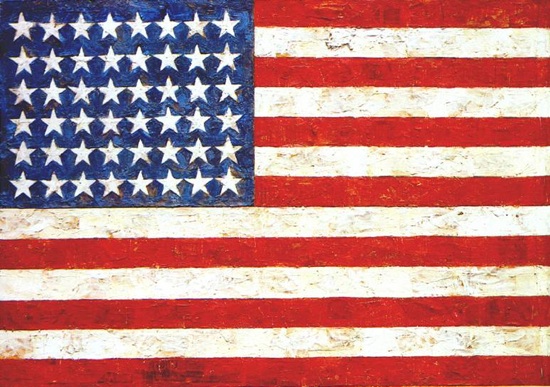
Neo-Dada artists Jasper Johns, Robert Rauschenberg, Claes Oldenburg, and Yves Klein were born between 1924-33. Reacting against the highbrow aims of Abstract Expressionism (i.e., the search for a universal truth that might transcend political, social, ethnic and religious differences), Neo-Dadaists pioneered ironic/absurdist postmodern art, characterized by themes and techniques drawn from advertising, comic books, and other areas of pop culture.
Other Neo-Dada artists born during this period include: Lee Bontecou, John Chamberlain, Bruce Conner, Edward Kienholz, Robert Morris, Nam June Paik, and Fluxus artists George Maciunas, Allan Kaprow, and Yoko Ono (who is an honorary Anti-Anti-Utopian).
NB: Rauschenberg was the creator of the most notorious practical joke in art history, “Erased de Kooning Drawing” (1953), which poked fun at the brooding seriousness and majestic aspirations of Abstract Expressionists like de Kooning. Rauschenberg didn’t just theorize about replacing fixed, universal categories and certainty with difference, process, and anomaly — he did it.
In America, Pop Art — which was influenced by the Neo-Dadaists — used impersonal, mundane reality, irony, and parody, not to mention hard-edged composition and representational art, to defuse the personal symbolism and “painterly looseness” of Abstract Expressionism.
However, Pop Art wasn’t Dada-esque in the anarchic, hilobrow sense of the term; instead, Pop Art’s brand of postmodern practice was indicated a detached affirmation of the artifacts of mass culture. Honorary Postmodernist Roy Lichtenstein (born in 1923) parodied comic-book art, but fetishized it at the same time.
Much the same thing goes for Andy Warhol, Tom Wesselmann, Robert Indiana, James Rosenquist, and other Pop Artists born from 1924-33, who presented icons of pop culture and mass media in a nobrow way — i.e., without praise or condemnation, and by means of the same commercial techniques used by the media from which the iconography was borrowed. Middlebrow suborned nobrow Pop Art immediately.
The difference between the Neo-Dadaists and Pop Art may come to the difference between engaged and disengaged irony. As I once wrote in the pages of Hermenaut, many years ago:
We here at Hermenaut are interested [in] a very particular irony — one which is philosophically detached but not emotionally disaffected or passive; perhaps humorously trivial but never emptily frivolous. Once this irony is understood, whether you use camp to describe the construction of the self or the construction of a Las Vegas supermarket, we’ll at least be able to communicate. Yes, the real hurdle to understanding camp lies in our culture’s ongoing inability to perceive irony as being anything but an emotionally disengaged, passive, “lite” reaction to a world gone sour; without a better appreciation of the rich emotional and creative possibilities of irony, camp will forever be regarded as a clique-ish, “anti-hip” hipsters’ put-on — which is not camp, but that which is inferior to camp in even its most degraded form: cheese.
Obviously, this is not the place to discuss camp, cheese, and engaged vs. disengaged irony. However, please note that at HILOBROW we prefer the term quatsch to cheese, though we’re pretty sure they describe the same things.
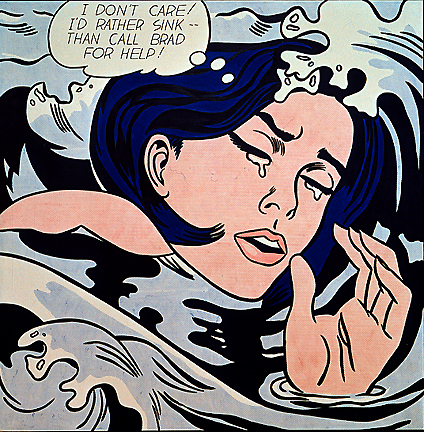
ALSO: What do the satirical but largely unpolitical MAD Magazine and the highly political Situationist International have in common? They combined the sensibilities and worldviews of New Gods and Postmoderns; the productive tension between these dissimilar generational dispositions is what made those phenomena so extraordinary.
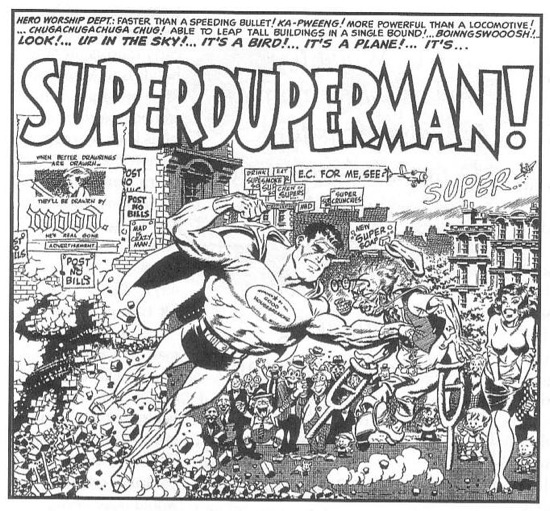
MAD, founded in 1952, was edited and created by New Gods (Will Elder, John Severin, Dave Berg, Al Jaffee, William Gaines) and Postmodernists (Wally Wood, Harvey Kurtzman, Jack Davis, Don Martin). Read more about postmodern humor here.
The most influential members of the Situationist International, founded in 1957, were Guy Debord, Michèle Bernstein, Ivan Chtcheglov, and Alexander Trocchi (Postmodernists); and Asger Jorn, Jørgen Nash, and Constant Nieuwenhuys (New Gods). Attila Kotányi, who edited the journal Situationniste Internationale, was born in the cusp year of 1924 — more research is needed before we can assign him to one of these two generations. Situationists Ralph Rumney (one of the co-founders of the London Psychogeographical Association) and Belgian philosopher Raoul Vaneigem are honorary Postmodernists (born 1934).
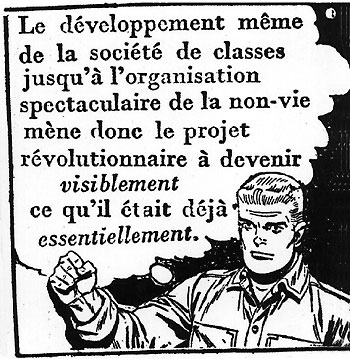
No room, here, to get into the many points of similarity between the programs of MAD and Situationism; the two illustrations shown here will have to suffice. As for the difference between MAD and Situationism, it may — again — have much to do with the distinction between engaged and disengaged modes of irony. I’m going to go out on a limb and suggest that MAD was a nobrow production, while Situationism was hilobrow. When thinking about the “postmodern” generally, or the “silence” of the so-called Silent Generation, it’s imperative to keep that distinction in mind.
I should add, here, that Nobrow is always very impressive — and quite similar to HiLobrow. I don’t mean to be dismissive of nobrow productions like MAD or Pop Art; I enjoy them, very much! Nobrow can be very inspiring, and certainly nobrow productions serve to alert us to the limitations of the heimlich High/Low/Anti-High/Anti-Low matrix. Nobrow takes us to the edge of the abyss, but no further. As a result, it is all too easily suborned by Middlebrow.
To paraphrase a Civil Rights anthem, “The only thing [Nobrow] done wrong/Stayed in the wilderness a day too long./Keep your eyes on the [HiLobrow] prize/Fight on, fight on.”
A note on Nouvelle Vague films, which — like many of the most important works of the Postmodernist Generation — somehow combined leftist politics with existentialist absurdism.
Jean-Luc Godard, François Truffaut, Claude Chabrol, Jacques Rivette, Agnès Varda, and Jacques Demy are members of the Postmodernist Generation. Although not a formally organized movement, France’s New Wave filmmakers self-consciously rejected classical cinematic form. Many engaged in their work with the social and political upheavals of the era, making their radical experiments with editing, visual style and narrative — like the famous traffic jam sequence in Godard’s 1967 film Week End — part of a general break with the conservative paradigm.
A 1954 article in Cahiers du cinéma by Truffaut attacked La qualité française and was the manifesto for “la politique des Auteurs” — which Andrew Sarris (also a member of the Postmodernist Generation) later termed the “auteur theory.” Chabrol’s Le Beau Serge (1958) is often credited as the first New Wave feature. Truffaut’s The 400 Blows (1959) and Godard’s Breathless (1960) were critical and financial successes, and made the New Wave famous.
NB: Though considered part of the French New Wave, Éric Rohmer and Alain Resnais are older. In 1963, when Rivette replaced Rohmer as editor of Cahiers du cinéma, the journal shifted political and social concerns and paid more attention to the non-Hollywood cinema. (Note the timing: 1963 is a cusp year, according to my generational/epochal periodization scheme.)
Who belongs to this generation? Click here.
Please note that the following was written in 2008–2010.

Members of the generational cohort born from 1914-23 were in their teens and 20s during the Thirties (1934-43, not to be confused with the the 1930s), and in their 20s and 30s during the Forties (1944-53). Though this cohort is easily distinguished from their immediate elders, the Partisan Generation (born 1904-13), the influential generational periodizers William Strauss and Neil Howe lumped the two together and named the resulting construct the “G.I. Generation” (1901-24).
I’ve already theorized, in a previous post, that Strauss and Howe, acting on behalf of Middlebrow, lopped off the last few years of the Hardboiled Generation and added them to the G.I.s because they wanted to ensure that middlebrow impresario Walt Disney (b. 1901) was included in the pseudo-generation that Tom Brokaw would later name the “Greatest.” In their 1991 book, Generations, Strauss and Howe struggle in vain to be convincing about their Frankenstein’s monster of a demographic conceit; in their introduction to the chapter on the so-called G.I. Generation, they have little to say about anyone born before 1914-ish besides Walt Disney, Charles Lindbergh (born 1902; a Hardboiled), and Ronald Reagan (1911; a Partisan). Tellingly, the introduction focuses on the “G.I. second wave” (a weaselly phrase justifying a divided pseudo-generation; only a movement, e.g., an aesthetic movement, can span generations in successive “waves”), about whom Strauss and Howe gush:
Throughout their lives, [late-born members of the GI Generation] have been America’s confident and rational problem-solvers: victorious soldiers and Rosie the Riveters; Nobel laureates; makers of Minuteman missiles, interstate highways, Apollo rockets, battleships, and miracle vaccines; the creator’s of Disney’s Tomorrowland; “men’s men” who have known how to get things done…. No other generation this century has felt (or been) so Promethean, so godlike in its collective, world-bending power.
Godlike! In 1998, Tom Brokaw would insist that “this is the greatest generation any society has produced” — but it seems even that superlative is insufficient to describe the likes of Jack Kennedy, Jack Kerouac, and Jack LaLanne. So I’ve borrowed a moniker for the Partisan’s immediate juniors from a short-lived comic book series by one of my favorite Jacks from this cohort: Jack Kirby. The generational cohort born from 1914-23 may superficially resemble mere homo sapiens, but they are stronger, faster, and smarter than the rest of us; they possess superior technology; and they may even exist in a dimension outside of normal time and space. Let’s call them: the New Gods.
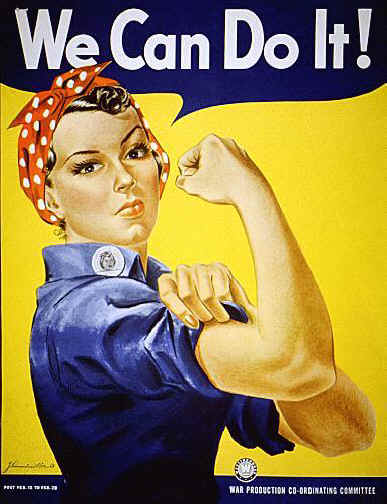
The 1914-23 generation came of age during the Depression, during which time they were kept busy by the Civilian Conservation Corps “getting things done, building things that worked, things that have lasted to this day,” as Strauss and Howe admiringly put it. The Tennessee Valley Authority was the handiwork of youthful New Gods. As adults, the 1914-23 generation fought World War II. After the war, they saved American industry, tamed the business cycle, built the suburbs and moved into them. Or so we hear, again and again, in middlebrow paeans to the cohort that shored up the gains of older (Hardboiled) middlebrows. How did Middlebrow inspire a generation to to say in harness so long, and accomplish so much? What persuasive ideology helped prevent the New Gods from kicking against the pricks?
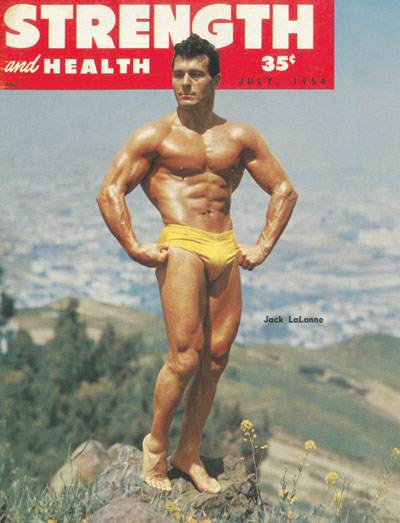
One such ideology, it seems to me, was machismo. The New Gods venerated the macho man, and some deluded anti-middlebrows even hailed him as an antiheroic savior of sorts. This generation produced only one president, but it was the macho JFK, who brought the “best and the brightest” into the White House, faced down the Soviet Union, and put a man on the moon. Astronauts Alan Shepard and John Glenn are members of this generation; so is faster-than-sound test pilot Chuck Yeager.

Other New Gods who were macho men, actors who played macho men, and novelists who wrote about macho men: Kirk Douglas, Robert Mitchum, Gregory Peck, William Holden, Dean Martin, Frank Sinatra, Jack Palance, Anthony Quinn, Jack Lord, Ernest Borgnine, Telly Savalas, Yul Brynner, Eli Wallach, Charles Bronson, Woody Strode, Montgomery Clift, Charlton Heston, Edmond O’Brien, Norman Mailer, James Jones, James Dickey, James Arness, Jake LaMotta, and honorary NGs Marlon Brando, Alan Ladd, Burt Lancaster, Lee Marvin, Rocky Marciano, Audie Murphy, and Jesse Owens. Wow! Think of all the violent buddy/caper movies the New Gods made, in the Fifties (1954-63) and Sixties (1964-73): Gunfight at the O.K. Corral (1957: Lancaster, Douglas); The Young Lions (1958: Bando, Clift, Martin); Ocean’s Eleven (1960: Sinatra, Martin); The Magnificent Seven (1960: Brynner, Wallach, Bronson); The Guns of Navarone (1961: Peck, Quinn); The Great Escape (1963: Bronson); The Professionals (1966: Marvin, Lancaster, Ryan, Strode, Palance); The Dirty Dozen (1967: Marvin, Borgnine, Bronson, Ryan, Savalas; and The Wild Bunch (1969: Holden, Borgnine, Ryan, O’Brien). The musk of testosterone shrouded the New Gods, making it difficult for them to see — or think — straight.
Even the women of the New Gods generation were macho: films and posters featuring “Rosie the Riveter” encouraged women to go to work in support of the war effort. Behold arch-middlebrow Norman Rockwell’s vision of Rosie:
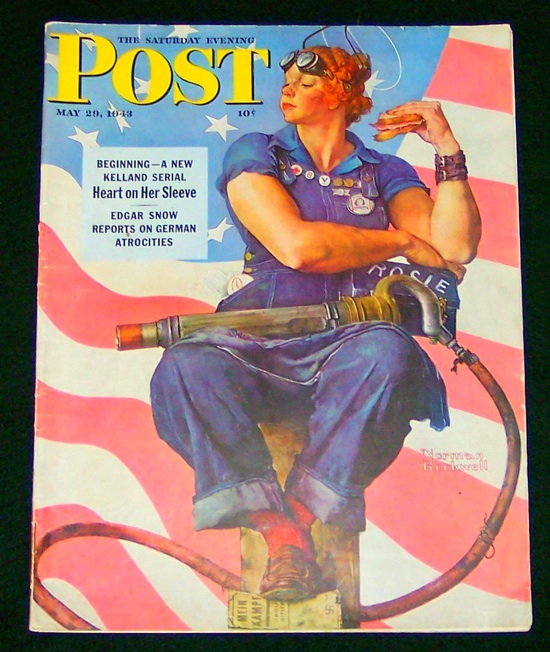
Speaking of Mailer and JFK, in 1960 the former wrote an overheated Esquire essay about the latter titled “Superman Comes to the Supermarket.” America, Mailer claimed, was the land where people still believed in heroes — and it needed a macho hero to rescue it from the triumph of Middlebrow during the Fifties (1954-63).
The film studios threw up their searchlights as the frontier was finally sealed, and the romantic possibilities of the old conquest of land turned into a vertical myth, trapped within the skull, of a new kind of heroic life, each choosing his own archetype of a neo-renaissance man, be it Barrymore, Cagney, Flynn, Bogart, Brando or Sinatra, but it was almost as if there were no peace unless one could fight well, kill well (if always with honor), love well and love many, be cool, be daring, be dashing, be wild, be wily, be resourceful, be a brave gun. And this myth, that each of us was born to be free, to wander, to have adventure and to grow on the waves of the violent, the perfumed, and the unexpected, had a force which could not be tamed no matter how the nation’s regulators — politicians, medicos, policemen, professors, priests, rabbis, ministers, idèologues, psychoanalysts, builders, executives and endless communicators — would brick-in the modern life with hygiene upon sanity, and middle-brow homily over platitude; the myth would not die.
Mailer correctly diagnosed the triumph of Middlebrow, but he failed to recognize that machismo is no solution. In fact, whenever Highbrow or Lowbrow is coded “masculine,” then Anti-Highbrow or Anti-Lowbrow is coded “not-feminine”; Middlebrow’s synthesis of these cultural constructs is: “real man” or “macho.” (When Highbrow or Lowbrow is coded “feminine,” then Anti-Highbrow or Anti-Lowbrow is coded “not-masculine”; Middlebrow’s synthesis of these cultural constructs is: “ultra-feminine” or “vamp,” another New God paradigm.) Nobrow, to continue for a moment, is neither masculine nor feminine (“angelic”), while HILOBROW is androgynous or hermaphroditic. Mailer, whose own machismo was a performance piece, didn’t quite grasp all this — not then.
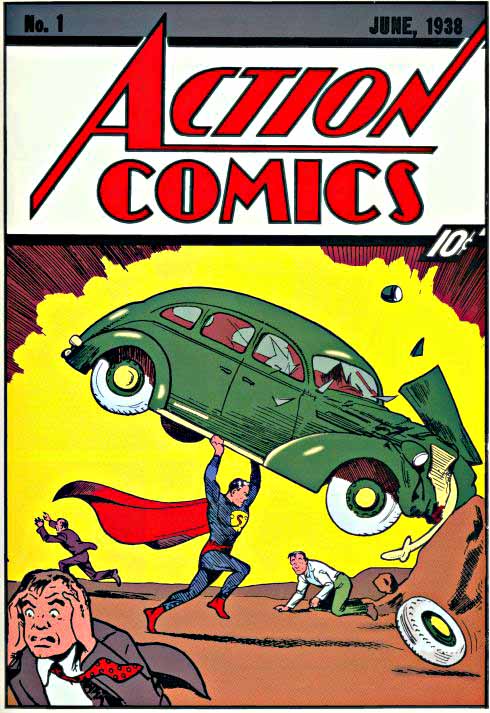
During the Thirties and Forties, superman really did come to the supermarket, as the New Gods ushered in what we’ve been encouraged to regard as the Golden Age of superhero comics. Beginning in 1938 with the debut of Jerry Siegel and Joe Shuster’s Superman in DC’s Action Comics # 1, the comic book made its debut as a mainstream art form. Comic-book authors, artists, and editors born between 1914 and 1923 include the likes of Bob Kane and Bill Finger, Julius Schwartz, Will Eisner, Bill Everett, Carl Burgos, Sheldon Mayer, and honorary New God Joe Simon — who invented and refined comic-book superheroes as we know them: Superman and Batman, Captain America, The Spirit, Namor the Sub-Mariner, Daredevil, The Human Torch, Flash, Green Lantern, Hawkman, and the Justice Society of America. Enjoyable stuff! But with the exception of Jack Cole’s Plastic Man, it’s middlebrow.
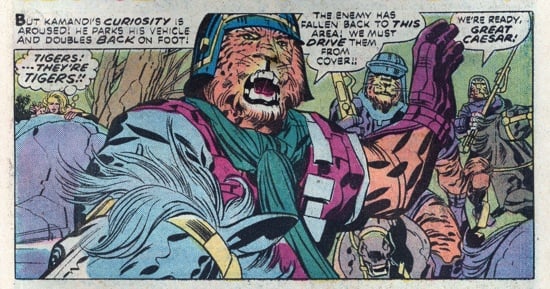
Of course, there were New God cartoonists who weren’t middlebrow. Will Elder, John Severin, Dave Berg, Al Jaffee, and former EC Comics publisher William Gaines, for example, brought us Mad Magazine (whose successful formula, I think, is due to the fact that half of its staff were New Gods and half were Postmodernists; more on that some other time). Charles M. Schulz wasn’t a middlebrow, exactly, though Middlebrow would enthusiastically embrace and champion his work. In the late Fifties (beginning in ’61, to be precise), New Gods Stan Lee and Jack “King” Kirby would give us the Fantastic Four, the X-Men, Thor, the Incredible Hulk, Iron Man, the Silver Surfer, Doctor Doom, Galactus, The Watcher, Magneto, the Inhumans, and many more comic-book superheroes who were neither macho nor middlebrow — at least, they weren’t in their earliest incarnations.
Middlebrow triumphed in the newspapers: Bil Keane, Hank Ketcham, Dik Browne, Fred Lasswell, Mort Walker, Brant Parker, and Reg Smythe gave us the middlebrow strips Family Circus, Dennis the Menace, Hi and Lois, Hagar the Horrible, Barney Google and Snuffy Smith, Beetle Bailey, Wizard of Id, and Andy Capp. Ever wonder why some newspaper strips end, while others go on and on? The answer is: Middlebrow. Many of these strips, whose authors are now retired or dead, are still going — i.e., they’re immortal.

PS: Irving Howe on J.D. Salinger’s Raise High the Roof Beam, Carpenters, an early diagnosis of QUATSCH (nobrow meets high-middlebrow). “Under the infatuated guidance of Salinger, [the Glass family] is largely devoted to exercises in collective narcissism…. Hopelessly prolix, both of these stories are marred by the self-indulgence of a writer flirting with depths of wisdom, yet coy and embarrassed in his advances. With their cozy parentheses and clumsy footnotes, their careening mixture of Jewish vaudeville humor and Buddhist prescription, they betray a loss of creative discipline, a surrender to cherished mannerisms.”
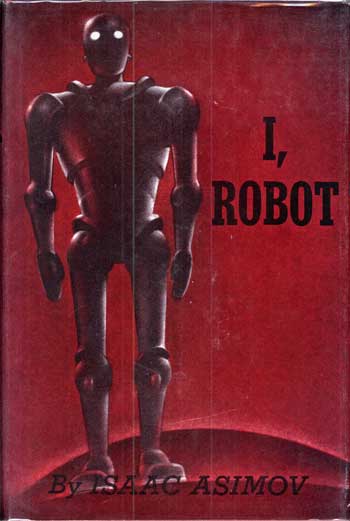
I’ve noted elsewhere that, in the era before the Partisans pioneered the so-called Golden Age of science fiction, and the New Gods pioneered the so-called Golden Age of superhero comics, homo superior and supermen were considered… creepy.
Olaf Stapledon, Philip Wylie, George Bernard Shaw, and other Radium Age SF authors tended to agree that the superman (whose values and worldview we mere mortals can’t share, or even comprehend) wouldn’t seem friendly but cold, inhuman, alien. Even, or especially when, he is trying to help us — because he’d surely understand himself as a shepherd responsible for the wellbeing of dumb animals, and treat us accordingly. Wylie’s 1930 SF novel, Gladiator, features a superman who is nearly invulnerable (“He was like a being of steel”), runs faster than a train, leaps higher than trees, and hurls boulders like baseballs. He creates a fortress of solitude (in Colorado), fights the Germans in WWI, then adopts a secret identity, moves to Manhattan, and vows to become “an invisible agent of right — right as best I can see it.” It’s that last line that distinguishes Wylie’s man of steel from Siegel and Shuster’s; in the end, Wylie’s superman despairs of flawed mortals and abandons them,
The paradigm shift from Radium Age science fiction and comic-book superhero is a telling one, isn’t it? Small wonder, perhaps, that Middlebrow — which sees itself as a shepherd responsible for the wellbeing of dumb animals, but would never be so foolish as to admit to this fact — admires the Partisans and New Gods (collectively: the G.I. or Greatest Generation) so much, and insists that they ushered in a Golden Age in SF and superhero comics! What Asimov and other historians of SF mean by “Golden Age” is that SF “grew up” beginning in the mid-1930s; at midcentury, Middlebrow was eager to have ’30s-era utopianists grow up. Does this mean that all Golden-Age SF and comic-book authors are middlebrow — witting or unwitting dupes of proto-neocon middlebrows? No, it doesn’t. But it does mean that we should skeptically revisit the so-called Golden Age of SF and comic books.
Who belongs to this generation? Click here.
Please note that the following was written in 2008–2010.
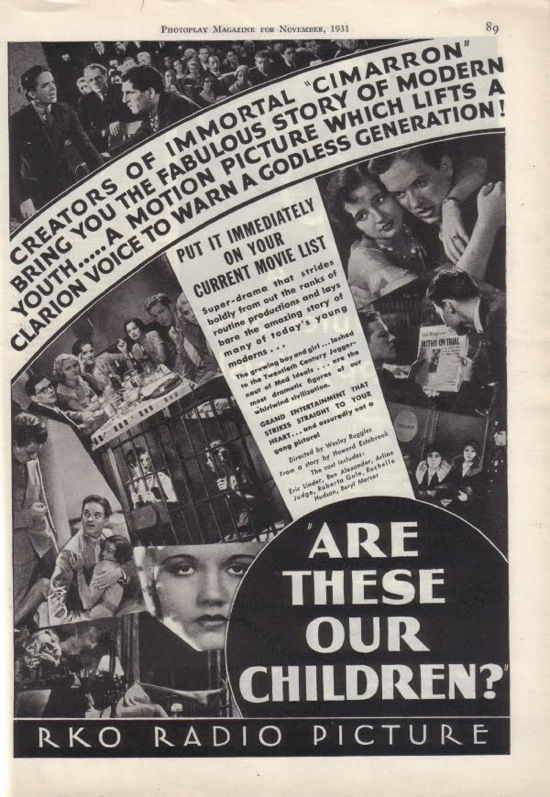
William Strauss and Neil Howe claim that a “GI Generation” (renamed the “Greatest Generation,” in recent years) was born from 1901-24; however, the GI/Greatest Generation is a particularly wrong-headed and ill-made example of periodization. It’s so awkward and unconvincing, in fact, that there must be a strategic rationale behind it — naturally, I believe it has something to do with middlebrow.
As I’ve previously suggested, Strauss & Howe lopped off the last three years of the Hardboiled Generation (1894-1903) and crammed them into the so-called GI Generation because Walt Disney, the man who single-handedly reinvented Low Middlebrow and made it a popular success at midcentury, was born in 1901. Why? Strauss & Howe — not to mention the myriad of pseudo-journalists and marketing consultants who’ve adopted their periodization for nearly 20 years now — are agents of Middlebrow. As such, they instinctively fear and despise the deeply ambivalent (utopian yet fatalistic) Modernists (1884-93) and Hardboileds (1894-1903), on the one hand, and the deeply ambivalent (fatalistic yet utopian) Postmodernists (1924-33) and Anti-Anti-Utopians (1934-43), on the other. The former two cohorts they lump together and dismissively name a “Lost” generation, the latter two they lump together and name a “Silent” one. Thus does Middlebrow ever depict its rivals and foes: as confused, woolly-headed, irrational, immature, and inarticulate.
The so-called Greatest/GI Generation comprises two distinct generational cohorts: one born from 1904-13, and another from 1914-23. The latter cohort I’ll discuss in a subsequent installment. Some of the most impressive writers and thinkers who belong to the former cohort were involved with the journal Partisan Review. In 1934, the journal was founded in New York by William Phillips (1907) and Philip Rahv (1908); then, in ’38, it was relaunched by Phillips, Rahv, Dwight Macdonald (1906), F.W. Dupee (1904), and George L.K. Morris (1905). It was the most influential literary-political journal of both the prewar anti-Stalinist Left (a.k.a. the high-, low-, anti-low, and hilobrow New York Intellectuals), and then the WWII/Cold War era’s chastened leftists, born-again liberals, anti-utopians, aesthetes, and pioneering neoconservatives: i.e., middle-, no-, and anti-highbrows.
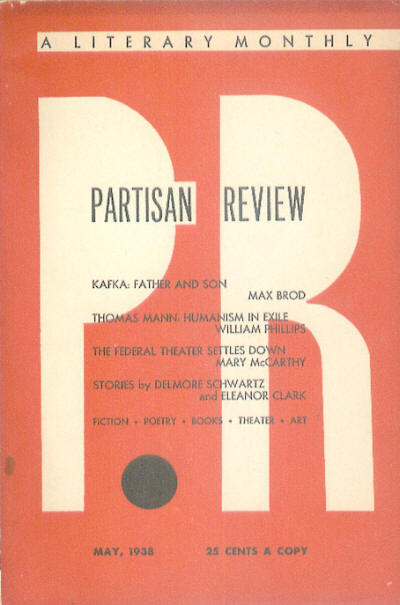
The transformation of Partisan Review — and the decamping of Macdonald from the journal, after which he was branded, by his ex-colleagues, as confused, woolly-headed, irrational, immature, and inarticulate — can be regarded as a microcosm of Middlebrow’s triumph in the West. Hence this generation’s moniker: the Partisans.


The Partisans were in their teens and 20s in the Twenties (1924-33; not to be confused with the ’20s), and in their 20s and 30s in the Thirties (1934-43). Older Partisans came of age during a period of economic prosperity, rapid urbanization, and technological miracles like television, talking pictures, nonstop transatlantic flights, new land-speed records, frozen food, color cartoons, and long-playing records.
Younger Partisans came of age as the US stock market collapsed, and the Great Depression began. It was an Age of Ideology. Communists forecast the Death of Capitalism, while Roosevelt’s New Deal used government spending — on programs including the Federal Emergency Relief Administration, the Civil Works Administration, the Public Works Administration, the Works Progress Administration, and the Civilian Conservation Corps — to restore faith in American democracy at a time when many people believed that the only choice left was between communism and fascism.
Partisans enlisted to fight on the side of the socialists, communists, liberals, and anarchists in the Spanish Civil War. As continental Europe succumbed to authoritarian and totalitarian regimes, European artists and intellectuals fled to America. As the Thirties ended in 1943, the US geared up to enter WWII. So much for their formative years. The Partisans’ greatest influence was still to come — during the Cold War.
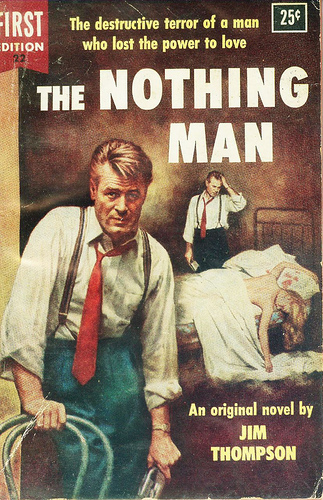
In addition to anti-Stalinist leftism, high-, low-, no-, and hilobrow Partisans were entirely responsible for EXISTENTIALISM (the postwar existentialist philosophers and psychologists — Camus, Sartre, Beauvoir, Merleau-Ponty, Viktor Frankl, Rollo May — as well as supposedly existentialist writers and filmmakers like Genet, Beckett, Ionesco, Cioran, Antonioni, Kurosawa, Adamov, were all born from 1904-13); NOIR FICTION (except for David Goodis, the important noir authors — Jim Thompson, Dorothy B. Hughes, Charles Williams — were born from 1904-13; honorary Partisan Cornell Woolrich was born in ’03); and ABSTRACT EXPRESSIONISM (Arshile Gorky, Philip Guston, Franz Kline, Willem de Kooning, Lee Krasner, Barnett Newman, Jackson Pollock, David Smith, and Clyfford Still were born from 1904-13; honorary Partisan Mark Rothko was born in ’03).
After reading the above paragraph, who can still argue that the tightly knit 1904-13 cohort ought to be lumped into some amorphous, sprawling pseudo-generation like the GI/Greatests? I ask you.
Interesting to think of the Existentialists as the immediate juniors of the Hardboileds. As noted, the Hardboileds accepted the truth of the Modernists’ claim that unfreedom had been relocated inside our own heads; this, in fact, is what it means to be a modern. The Hardboileds were fatalistic, pessimistic, and bitterly resigned to unfreedom. The Existentialists accept unfreedom, but put an optimistic spin on it: we can be free within unfreedom, they claim. Sartre insisted that we must accept responsibility for our “thrownness” into a situation that we didn’t choose; we’re free if we choose our unfreedom. Camus, who self-consciously aped the style of hardboiled crime novelists, asked us to imagine that Sisyphus, perhaps the least free figure in western mythology, and the one most aware of the absurdity (unmeaningfulness) of life, was happy. No wonder Middlebrow is so comfortable with the so-called GI/Greatest Generation.
Note that I distinguished between hardboiled literature and noir in an earlier post. I wrote: Noir fiction, in which the protagonist is usually not a detective, but instead a victim, a suspect, or a perpetrator, and in which sex plays a prominent role, was pioneered by Cornell Woolrich. The titles of Woolrich’s novels — e.g., The Bride Wore Black (1940), The Black Curtain (1941), Black Alibi (1942), The Black Angel (1943), The Black Path of Fear (1944) — inspired French critics to call movies based on them “noir.”
Partisans are also entirely responsible for the first wave of GOLDEN-AGE SCIENCE FICTION and FANTASY, which, if you ask me, is a middlebrow version of what I’ve named Radium Age SF (published 1904-33). Born from 1904-13: Robert A. Heinlein (Stranger in a Strange Land, Starship Troopers), Fritz Leiber (The Wanderer, Fafhrd and the Gray Mouser series), L. Sprague de Camp (continued Conan series), L. Ron Hubbard (Battlefield Earth, invented Scientology), Lester Dent (Doc Savage series), Fredric Brown (SF stories), Jack Finney (The Body Snatchers), Nelson S. Bond (SF stories), Ross Rocklynne (SF stories), Clifford D. Simak (Way Station, City), C.L. Moore (SF stories; one of the first women SF writers), A.E. van Vogt (Slan, The World of Null-A), A. Bertram Chandler (Rim World series), Edgar Pangborn (A Mirror for Observers), and Eric Frank Russell (Sinister Barrier). Four other Partisans started as Radium Age SF writers: John W. Campbell Jr. (The Black Star Passes; as editor of Astounding Science Fiction, single-handedly ushered in the so-called Golden Age of SF); Jack Williamson (The Legion of Space series; after Heinlein, the “Dean of Science Fiction”); Eando Binder (Earl Andrew Binder & Otto Oscar Binder, known for their SF stories; Otto later wrote nearly 1,000 Captain Marvel stories); and Robert E. Howard (Conan series).
Also note that Eric Ambler’s first novel, Dark Frontier (1936), which was written as a kind of parody of John Buchan adventure novels and ended up influencing later thrillers, is science fiction. It concerns an Eastern European scientist who has built a working atomic bomb.
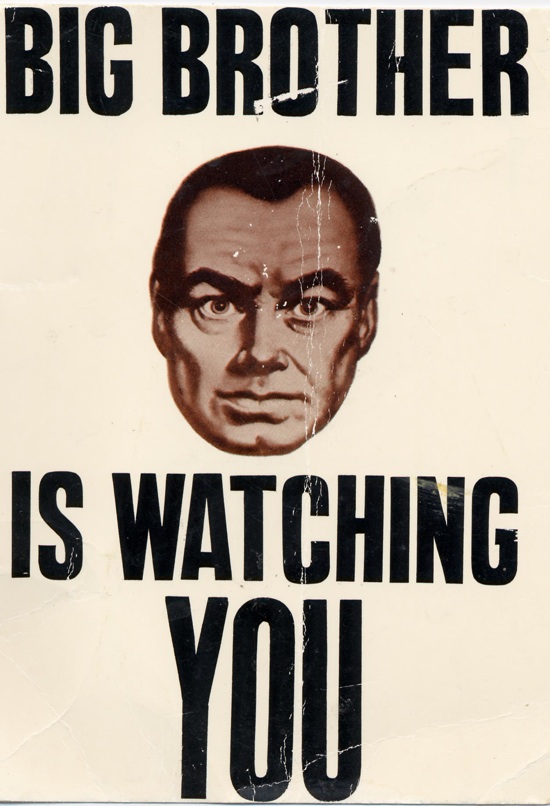
What I have most wanted to do throughout the past ten years is to make political writing into an art. My starting point is always a feeling of partisanship, a sense of injustice.” — “Why I Write,” by George Orwell.
Honorary Partisans George Orwell (1984) and John Beynon Harris (John Wyndham: The Day of the Triffids, The Midwich Cuckoos) made important contributions to SF, as did the following Partisans not known primarily as SF writers: Ayn Rand (Atlas Shrugged, Anthem), Samuel Beckett (Endgame), Pierre Boulle (Planet of the Apes), Hergé (The Shooting Star), Louis L’Amour (The Haunted Mesa), and B.F. Skinner (Walden Two). Al Capp wrote “The Time Capsule,” a genuine SF adventure starring Li’l Abner, which appeared in Satellite (August 1957); and without Partisans Joseph Campbell, Alex Raymond (Flash Gordon), and Buster Crabbe, we’d have no Star Wars. Alfred Bester is an honorary member of the New Gods; Edmond Hamilton is an honorary Hardboiled.
All of the above topics are fascinating. But I will restrict myself, in this limited space, to the following notes on Abstract Expressionism and BIG BAND SWING (Glenn Miller, Jimmy Dorsey, Chick Webb, Tommy Dorsey, Jack Teagarden, Benny Goodman, Gene Krupa, Shep Fields, Artie Shaw, Bob Crosby, Woody Herman, were all born from 1904-13).

Writing under the anti-middlebrow pseudonym “Hektor Rottweiler,” honorary Partisan T.W. Adorno rejected the claim that jazz of this (or any) sort was a musical form whose spontaneity and primitivism expressed liberation. Jazz, he scoffed, combines “the lament of unfreedom” (the music’s pseudo-spontaneous elements, e.g., moments when a a soloist takes center stage, and improvises a solo) with unfreedom’s “oppressed confirmation” (the music’s unchallenged rhythm, the steady pounding of the drum). Like Middlebrow itself, Big Band Swing dialectically transforms contrariness into smoothness; instead of revolutionary energy, Adorno found in the music only the “half-resentful, half-compliant” submission to slavery that (he wrote) characterizes the blues from which it sprung. In its very form, according to Adorno, Big Band Swing reflects a social order (one diagnosed by the Modernists and Hardboileds) in which coercion has been relocated within spontaneity, authority within liberty. (Discuss.)
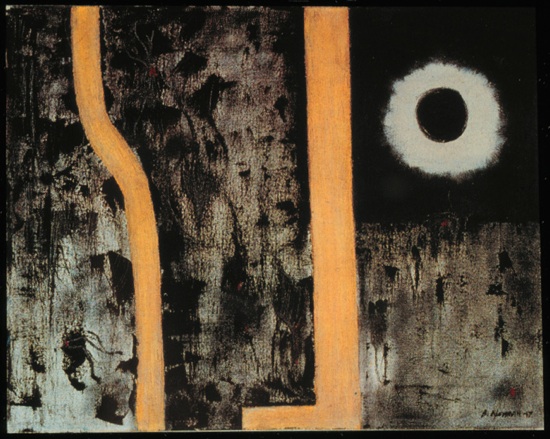
Influenced by the anti-middlebrow art movements Surrealism (e.g., the automatic art of Pollock, De Kooning, Hofmann) and Cubism (e.g., the simple, unified blocks of color of Newman, Still, Rothko), Abstract Expressionism might seem to be a redoubt of anti-middlebrow cultural production during an era in which Middlebrow triumphed in the west. The anti-middlebrow art critic Clement Greenberg, who regarded Abstract Expressionism as highbrow art, argued persuasively that this was the case. However, the impression of intellectual, aesthetic, and perhaps most importantly, political freedom evoked by Pollock’s psychologically intense action paintings, Rothko’s spiritually overwhelming multiforms, and Smith’s witty connect-the-dot sculptures, for example, were easily coopted by CIA-funded propagandists in order to reassure Americans that we — unlike the recently defeated Nazis, and particularly the ever-more powerful Communists — were on the right side of history. The question is: Were those propagandists high-middlebrow? highbrow? Or anti-lowbrow? (Discuss.)
Who belongs to this generation? Click here.
Please note that the following was written in 2008–2010.
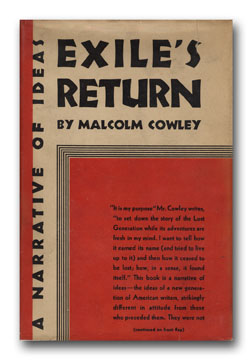
Gertrude Stein and others (including Strauss & Howe) have lumped Ezra Pound, T.S. Eliot, Ernest Hemingway, and F. Scott Fitzgerald into a single “Lost Generation.” But there’s a critical, generationally specific difference between the cultural productions of Pound, Eliot, and other members of what I’ve called the Modernist Generation (1884-93), and that of Hemingway, Fitzgerald, and others who belong to a generation born from 1894 through 1903. I call the latter cohort: the Hardboileds.
Like the Modernist Generation, a few of the eldest Hardboiled artists and writers served in the Great War (Dos Passos, Cummings, Hammett, and a very young Hemingway, for example, were ambulance or camion drivers), and/or participated in modernism’s first explosive moments. However, the Hardboileds didn’t regard themselves as belonging to the same generation as their immediate elders. Among the Modernist Generation, there were “paradoxical if not opposed trends towards revolutionary and reactionary positions,” according to a standard account of the era. But the Hardboileds saw themselves as “a new generation,” as Fitzgerald would write in his debut novel, This Side of Paradise (1920), one that had “grown up to find all Gods dead, all wars fought, all faiths in man shaken.”
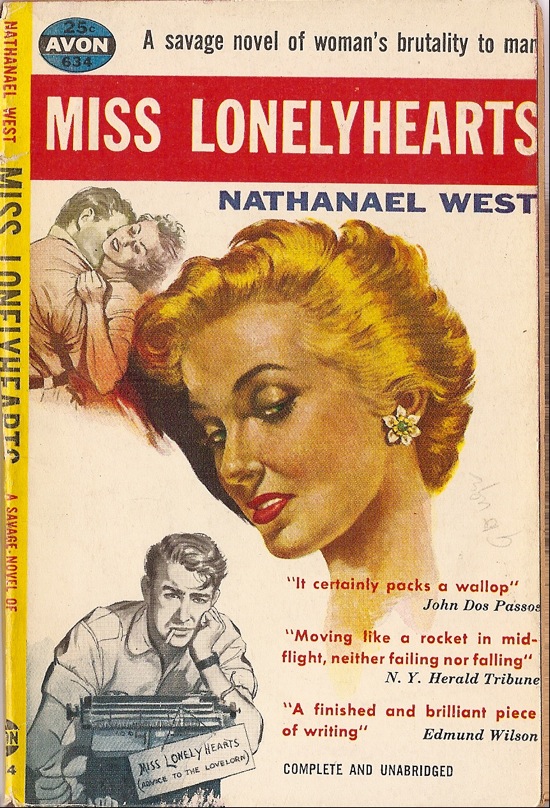
The Modernists were an ambivalent generation, attempting to synthesize conflicting ideologies, all the while suspecting that unfreedom had been relocated inside their own heads; their juniors, the Hardboileds, who acknowledged the truth of the Modernists’ insight, were accordingly more fatalistic, pessimistic, and — after the brief drama of their expatriot period — bitterly resigned to unfreedom.
Malcolm Cowley’s autobiographical Exile’s Return (1934) explicitly supports Fitzgerald’s depiction of those men and women who were in their teens and 20s during the Teens (1914-23, not to be confused with the 1910s), and in their 20s and 30s during the Twenties (1924-33, not to be confused with the 1920s). In the book’s 1951 prologue, Cowley grumbles that “Lost Generation” is “as useful as any half-accurate tag could be” — i.e., for a generational cohort whom he describes as having graduated from college “between 1915, say, and 1922.” Cowley’s periodization dovetails almost exactly with my own scheme; his 22-year-old college graduates were born from 1895 through 1902. (Cowley himself was born in ’98.) Exile’s Return also agrees with my characterization of the difference between Modernists (whom the author calls “They,” in the following passage) and Hardboileds (“We”):
“They” had once been rebels, political, moral, artistic or religious — in any case they had paid the price of their rebellion… “We” had avoided issues and got what we wanted in a quiet way, simply by taking it…. “They” had been rebels: they wanted to change the world, be leaders in the fight for justice and art, help to create a society in which individuals could express themselves. “We” were convinced at the time that society could never be changed by an effort of the will.
The Modernists were ambivalent; the Hardboileds were hopeless. Cowley’s Exile’s Return may have been marketed as a guide to the so-called, imaginary Lost Generation. As a first-hand account of the experiences shared by writers and artists of the Hardboiled Generation, though, it’s indispensable.
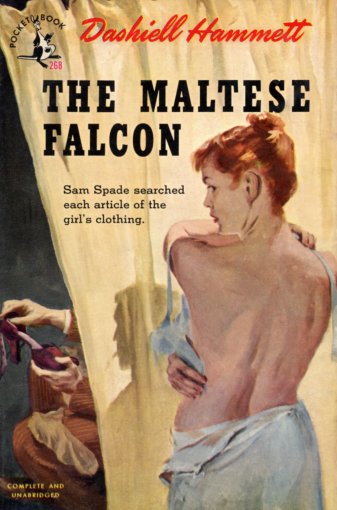
If we define hardboiled fiction — as at least one critic has — as novels and stories in which an “anxious sense of fatality is usually attached to a pessimistic conviction that economic and socio-political circumstances will deprive people of control over their lives by destroying their hopes and by creating in them the weaknesses of character that turn them into transgressors or mark them out as victims,” then it becomes apparent that this generation’s lowbrow genre novelists (including Dashiell Hammett, Horace McCoy, Geoffrey Household, Paul Cain, Raoul Whitfield, Philip Gordon Wylie, and honorary Hardboiled Graham Greene; please note that “lowbrow” does not mean stupid or untalented) were by no means alone.
Among the most important works of high-, no-, and hilobrow hardboiled fiction are: John Dos Passos’ The 42nd Parallel and 1919, William Faulkner’s Sanctuary and Light in August, Erskine Caldwell’s Tobacco Road and God’s Little Acre, Nathanael West’s Miss Lonelyhearts and The Day of the Locust, Hemingway’s To Have and Have Not and For Whom the Bell Tolls, Fitzgerald’s The Great Gatsby, and Erich Maria Remarque’s All Quiet on the Western Front. NB: John Steinbeck’s The Grapes of Wrath and Of Mice and Men, and Thornton Wilder’s The Bridge of San Luis Rey are also hardboiled — but they’re middlebrow.
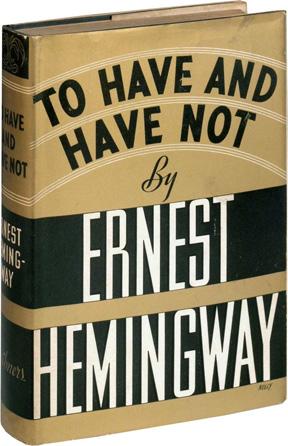
Less interested than Modernist Generation types had been in discovering a useable past, Hardboiled modernists also sought to eradicate anything romantic or sentimental — e.g., the excessively mannered, irrational, emotionalistic — from their work. Raymond Chandler, a member of the Modernist cohort, would explain that the hardboiled fiction of his juniors was their response to a postwar “world gone wrong, a world in which, long before the atom bomb, civilization had created the machinery for its own destruction and was learning to use it with all the moronic delight of a gangster trying out his first machine-gun.”
NB: Noir fiction, in which the protagonist is usually not a detective, but instead a victim, a suspect, or a perpetrator, and in which sex plays a prominent role, was pioneered by Cornell Woolrich. The titles of Woolrich’s novels — e.g., The Bride Wore Black (1940), The Black Curtain (1941), Black Alibi (1942), The Black Angel (1943), The Black Path of Fear (1944) — inspired French critics to call movies based on them “noir.” But noir is not a hardboiled phenomenon. Born in 1903, Woolrich is an honorary member of the Partisan Generation, which also includes noir novelists Jim Thompson, Dorothy B. Hughes, and Charles Williams.
In a Minima Moralia entry titled “Tough Baby,” T.W. Adorno, also born in 1903, suggests that the Hardboileds’ effort to purge sentimentality is itself sentimental. The style of Minima Moralia itself, which was written in 1940s LA, is perhaps more noir than hardboiled. (Discuss.)
Though Middlebrow wouldn’t triumph until midcentury, and though its most perspicacious critics would therefore be members of the Partisan Generation, its first flowering was on the Hardboiled cohort’s watch — and many of its most influential peddlers are members of this generation. Which might explain why Strauss & Howe’s influential (and pro-Middlebrow) generational periodization scheme, which is obeyed slavishly by generational trend-spotting journalists and marketers, lops off the youngest members of the Hardboiled Generation and assigns them to the so-called GI or Greatest Generation (1901-24, supposedly). Why 1901? Because that’s when Walt Disney, that world-beating avatar of Low Middlebrow, was born.
In every triumphalist middlebrow account of American history, things were going poorly until the so-called GI/Greatest Generation came along. Strauss & Howe are dismissive of the Lost Generation (actually the Modernists and older members of the Hardboileds), whose “selfishness and unreason,” “fatalism,” “stark nihilisms” (i.e., surrealism, Dada, expressionism, futurism, “Freudian relativism”), and “pessimistic theories” they contrast unfavorably (in their 1991 bestseller, Generations) with the “fearless but not reckless” manner of those “confident and rational problem-solvers,” the GI or Greatest Generation (actually the Partisans and the New Gods). Middlebrow, which deceptively styles itself as non- or post-partisan, approves only of those fictional generations that eschew fretting about subjective forms of unfreedom and focus instead on getting the job done: in the 20th and 21st centuries, the Greatest/GIs and the so-called Millennials. (Boomers, who worship the GIs and the Millennials, are forever kicking themselves for not being even more middlebrow than they are.)
All of which explains why Walt Disney, that master of cutesying up fairy and folk tales, national cultures, and real-world locales (i.e., the raw ingredients of ideology, which is to say resistance to the soft tyranny of Middlebrow’s hegemonic discourse), must be plucked out of his own generation (the Hardboileds) and assigned to the Greatests .
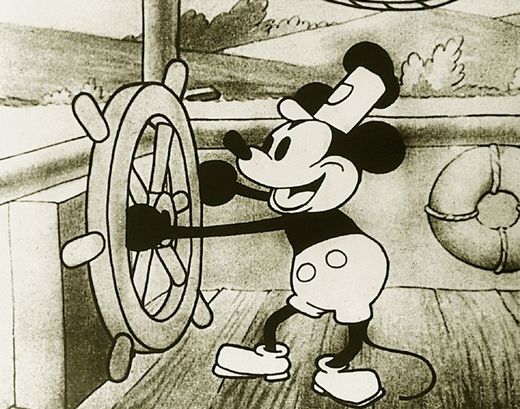
Further study of the semi-hopeful, semi-fatalistic Hardboiled Generation might provide useful clues — useful to saboteurs, that is — regarding the subtle mechanism that keeps Middlebrow ticking. This is not the place for such an investigation, but let’s just take note of the fact that Walt Disney, along with fellow Hardboileds Norman Rockwell, Bernard De Voto, Norman Vincent Peale, Robert Maynard Hutchins, Mortimer J. Adler, Mark Van Doren, James Gould Cozzens, and Thornton Wilder are among those who first either attempted to synthesize the energies of Highbrow and Anti-Lowbrow, by hustling a ham-fisted attempt at cultural and intellectual achievement known today as High Middlebrow; or who synthesized the energies of Lowbrow and Anti-Highbrow and cranked out a variety of wildly successful low middlebrow (i.e., semi-hopeful, semi-fatalistic) cultural productions, from Rockwell’s Saturday Evening Post covers to Wilder’s Our Town, to — you know — all things Disney.
In fact, it can be extremely difficult — now, even more so than then — to distinguish pre-midcentury middlebrow productions from the non-middlebrow cultural milieux out of which they first emerged. Adorno and Edmund Wilson were perhaps the only critics born before 1904 who even attempted to do so; and for their troubles they’ve been castigated as “mandarins” and “elitists” — i.e., by middlebrow critics posing as populists — ever since. To the untrained eye, and to blunted sensibilities, there’s not a great deal of difference between Fleischer Studios’ Betty Boop, say, and Disney’s early Mickey Mouse cartoons. Yet the latter are middlebrow, Adorno and Horkheimer insist in their essay on the Culture Industry in The Dialectic of Enlightenment (though unlike Dwight Macdonald, who was influenced by Adorno’s criticism, they don’t use that term), while the former are not.
If this judgment outrages you, then imagine the scorn poured on Adorno for having dared to criticize jazz and certain films that we admire immoderately today (noir films, for example); or on Wilson, who reviled popular mystery novelists (Agatha Christie, Rex Stout) and the beloved J.R.R. Tolkien (“Oo, Those Awful Orcs”)! One’s admiration for these early, courageous anti-middlebrow critics grows by leaps and bounds.
Who belongs to this generation? Click here.
Please note that the following was written in 2008–2010.
Members of the Modernist Generation, born from 1884-93, were in their teens and 20s during the Nineteen-Oughts (1904-13, not to be confused with the 1900s), during which time — according to Virginia Woolf — human nature underwent a fundamental change, as a result of technological breakthroughs and global violence; and in their 20s and 30s during the war-torn Nineteen-Teens (1914-23, not to be confused with the 1910s). In Modernism (2000), Peter Childs might be describing this generational cohort when he writes: “There were paradoxical if not opposed trends towards revolutionary and reactionary positions, fear of the new and delight at the disappearance of the old, nihilism and fanatical enthusiasm, creativity and despair.”
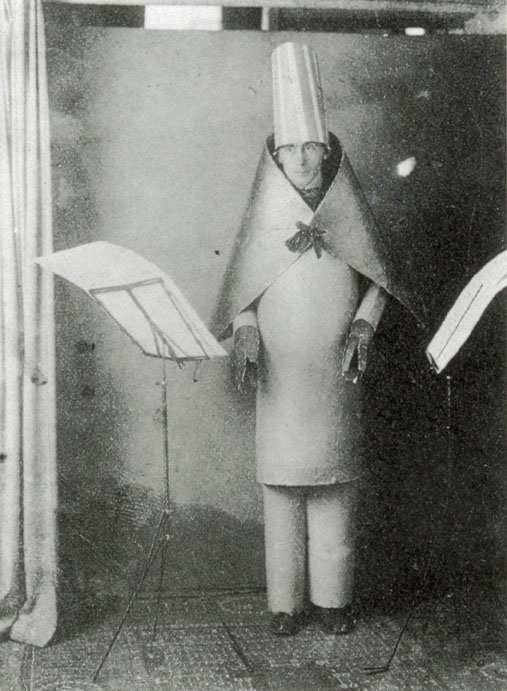
“How can one get rid of everything that smacks of journalism, worms, everything nice and right, blinkered, moralistic, europeanised, enervated?” demanded Hugo Ball in his 1916 Dada Manifesto. “Make it new,” insisted Ezra Pound. High-, low-, no-, and hilobrow members of the Modernist cohort include: Anna Akhmatova, Antonio Gramsci, Arthur Cravan, Charlie Chaplin, D.H. Lawrence, Djuna Barnes, Egon Schiele, Emmy Hennings, Ernst Bloch, James M. Cain, Jean Cocteau, Jean/Hans Arp, Karel Čapek, Kurt Schwitters, Ezra Pound, F. W. Murnau, Fritz Lang, Georg Grosz, Groucho Marx, György Lukács, H.P. Lovecraft, Hannah Höch, Harpo Marx, Henry Miller, Hugo Ball, Ludwig Wittgenstein, Man Ray, Marc Chagall, Marcel Duchamp, Max Ernst, Mikhail Bulgakov, Olaf Stapledon, Oskar Kokoschka, Randolph Bourne, Raoul Hausmann, Richard Huelsenbeck, Sophie Taeuber-Arp, T.S. Eliot, Thea von Harbou, Franz Kafka, Rube Goldberg, Anton Webern, Walter Benjamin, William Carlos Williams, and Yevgeny Zamyatin.

The Modernist Generation discovered and invented what NKer Van Wyck Brooks called a “usable past.” Pound, for example, found inspiration for his poems in classical Chinese poetry. Between the end of World War I and the end of World War II, a literary neoclassical movement — most famously T. S. Eliot and (slightly older) Wyndham Lewis — rejected the extreme romanticism of (for example) Dada, in favour of restraint, Christianity, and a reactionary political program. In Russia, the movement crystallized under the name of Acmeism, with Anna Akhmatova and Osip Mandelshtam as the leading representatives.
A key usable past, for the Modernist Generation, was childhood: Randolph Bourne, for example, lamented that the older generation ruled the world, “hence grievous friction, maladjustment, social war.” Ernst Bloch and Walter Benjamin argued that utopian socialism is nourished by the fairy tales and fantasies of childhood. (Meanwhile, “dada,” one of childhood’s first words, became the rallying cry of a hilobrow movement pioneered by an international gang of Modernists dodging WWI in Zurich.) But this idealization of childhood is not to be confused with today’s “rejuvenilization”; in The New Radicalism in America (1965), Christopher Lasch would write that the American “movement of intellectual renewal of which Bourne was the most courageous and clearsighted exponent” was the closest thing this country ever had to the spirit of the Frankfurt School.
Bourne and other members of the same generation, writes Lasch, couldn’t “conceive of enslavement in the uncomplicated categories of the old radicalism, the radicalism of Mill and Marx. Men, they knew, were everywhere in chains, but the chains had become invisible…. Tyranny came to mean to them not oppression but repression, and the battleground between freedom and authority shifted from society to the self.” Honorary Modernist Aldous Huxley’s Brave New World is about precisely this.
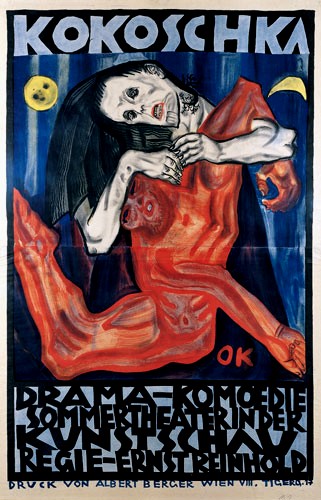
Another Modernist movement was spearheaded by Franz Kafka, Anton Webern, Egon Schiele, Oskar Kokoschka, Marc Chagall, Thomas Hart Benton, Milton Avery, Fritz Lang, F. W. Murnau, and Alban Berg, each of whom mined the (Psychonaut-discovered) collective unconscious for the “clear essence” of impressions and mental images, which they expressed in the form of simple short-hand formulae and symbols — hence the term Expressionism. Expressionism, which distorts reality for emotional effect, lent itself easily to another, far less exalted Modernist Generation genre: science fiction, horror, and fantasy novels and films. “[W]e drift unfamiliar to ourselves, immersed in darkness,” writes Bloch in The Spirit of Utopia (1918), in a brooding passage that could have been lifted from his contemporaries J.R.R. Tolkien, H. P. Lovecraft, Clark Ashton Smith, Yevgeny Zamyatin, Olaf Stapledon, Thea von Harbou, or Karel Čapek.
“But the thought of [utopia] is at hand,” continued Bloch. “For only we proceed slowly forward, darkly, atomistically, individually, subjectively, within everything moving or amassing, as the unresolved utopian tension constantly undermining everything shaped.” There is something utopian, or at least anti-anti-utopian about the Modernist Generation. Before Dada was an aesthetic movement, after all, it was a transnational community of misfits, an Argonaut Folly. D.H. Lawrence urged his friends to help him found an island commune, but to no avail; perhaps this was because the friends he asked were either too old (E.M. Forster, Bertrand Russell) or too young (Aldous Huxley) to be New Kids.

In America, Floyd Dell, John Reed, Maxwell Bodenheim, Eugene O’Neill, and others from this cohort formed an illiberal, non-repressive social order of sorts in New York’s Greenwich Village. Listen to Malcolm Cowley, writing in Exile’s Return about the older Villagers (“They”) that he and his fellow Hardboileds (“We”) encountered after 1917:
“They” had once been rebels, political, moral, artistic or religious — in any case they had paid the price of their rebellion… “We” had avoided issues and got what we wanted in a quiet way, simply by taking it…. “They” had been rebels: they wanted to change the world, be leaders in the fight for justice and art, help to create a society in which individuals could express themselves. “We” were convinced at the time that society could never be changed by an effort of the will.
Unlike their immediate elders, the Psychonauts, the Modernists described by Cowley weren’t interested in leaving civilization behind, or escaping into uncharted territories of the mind and spirit; and unlike their immediate juniors, the Hardboileds, they didn’t grow up “to find all gods dead, all wars fought, all faiths in man [i.e., ideologies] shaken,” as F. Scott Fitzgerald would put it. Instead, the Modernists were the generational cohort who did the fighting and the shaking.
I am not suggesting that what we know as the modernist movement in the arts was pioneered by this generational cohort; it was pioneered in the Nineteen-Tens (1904-13) by Psychonauts and Anarcho-Symbolists like Arnold Schoenberg, Wassily Kandinsky, the Futurists, and Picasso and Braque, all of whom embraced discontinuity, approved disruption, and questioned or rejected the Enlightenment ideal of Progress. Literary modernism was pioneered by Psychonauts and Anarcho-Symbolists like Guillaume Apollinaire, James Joyce, Franz Kafka, Gertrude Stein, Wallace Stevens, Virginia Woolf, and William Butler Yeats. The youngest members of the Modernist Generation had just turned 20 in 1913 — i.e., the year of Ezra Pound’s founding of Imagism, the Armory Show in New York, and, in Saint Petersburg, the first Futurist opera. However, the modernist movement exploded in the Nineteen-Teens (1914-23), during and immediately after the Great War, when the Modernist Generation were in their 20s and 30s. And then the modernist movement turned hardboiled in the Twenties (1924-33); avant-garde artists and writers of that period rejected the work of the Modernist Generation, which was found guilty of emphasizing continuity with a (useable) past while rebelling against it, and which seemed excessively mannered, irrational, and emotionalistic. Yet another demonstration of my periodization scheme’s accuracy!
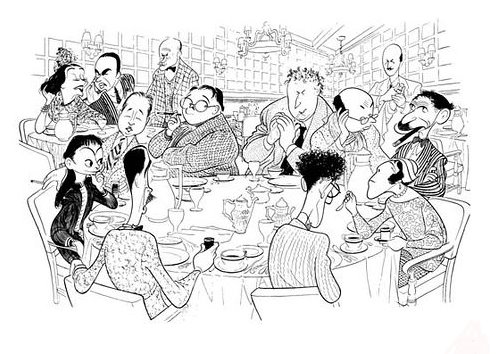
I could go on about this fascinating cohort. But after mentioning that Axis leaders Hitler, Mussolini, and Tojo, not to mention most of the Algonquin Round Table (Heywood Broun, Robert Benchley, Marc Connelly, Edna Ferber, George S. Kaufman, Harpo Marx, Dorothy Parker, New Yorker founding editor Harold W. Ross, and Alexander Woollcott), as well as many of the New Yorker’s notable early writers and cartoonists (Woollcott, Benchley, Parker, James M. Cain, Janet Flanner, Charles Brackett, Helen Hokinson, and honorary NKer James Thurber) are also members of the Modernist Generation, I’ll stop.
Who belongs to this generation? Click here.
Please note that the following was written in 2008–2010.
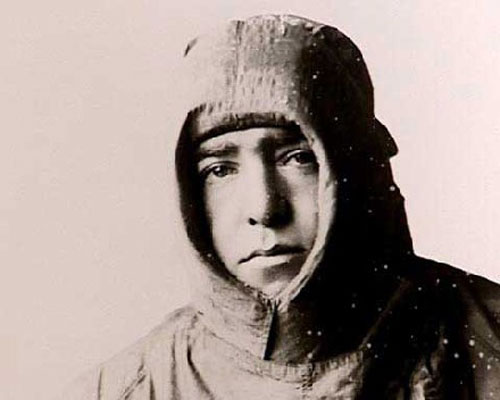
The Psychonauts, born from 1874 to 1883, are a generation of expatriates, strangers in a strange land, emigrés and internal exiles. Discontented with the familiar, some of them were intrepid adventurers: Howard Carter, Shackleton, and Jack London, for example, not to mention extreme balloonists Jean and Auguste Piccard [honorary]. John Buchan invented the spy thriller as we know it. Others — like Carl Jung, Houdini, Aleister Crowley, Edgar Cayce, Peter D. Ouspensky, Gurdjieff, Pierre Teilhard de Chardin, Charles Fort, Gerald Gardner, and William E. Riker — wandered without compass or rudder through uncharted territories of the mind and spirit.
HiLobrow members of the Psychonaut cohort were argonauts and astronauts boldly going where no man had gone before: across, through, and deep into psychic, esoteric, and paranormal phenomena of the most uncanny sorts. They roamed far and wide in search of signification, discovering (and/or inventing) meaning in the unlikeliest of locations. As the images on this page in which a Psychonaut is juxtaposed with cryptic runes, codes, or formulae suggest, they were code-breakers and browbeaters, often mocked and ignored — but regarded as visionaries and inspirational examples today, at least by HiLobrow.com.
Members of this cohort were in their teens and 20s during the Eighteen-Nineties (1894–1903, not to be confused with the 1890s), and in their 20s and 30s during the Nineteen-Oughts (1904–1913, not to be confused with the 1900s).
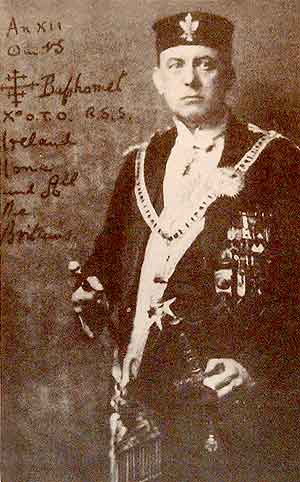

Psychonaut scientists grappled with invisible forces: Einstein (relativity), Marconi (radio), Maurice de Broglie, Max von Laue, Charles Glover Barkla (X-rays), Francis W. Aston (the mass spectograph), Hans Geiger, Victor Francis Hess, and Frederick Soddy (radiation, radioactivity), Otto Hahn and Lise Meitner (nuclear fission), Hans Berger (electroencephalogram), William W. Coblentz (infrared spectroscopy), and Karl Schwarzschild (black holes).
HiLobrow authors, poets, painters, and musicians of the 1874-83 cohort refused to accept any limitations on their respective mediums. James Joyce, Virginia Woolf, Mina Loy, Wallace Stevens, Apollinaire, Picasso, Braque, Modigliani, Marie Vassilieff, Paul Klee, Malevich, Wyndham Lewis, Umberto Boccioni, Igor Stravinsky, Anton Webern, Edgard Varèse, and Arnold Schoenberg were experimentalists ahead of their own time and perhaps even our own.
Psychonauts also tended to have exciting, evocative, spooky-kooky names and monikers. I realize that I’ve said something similar about the Plutonians, but I’d really like to see Mata Hari, Mina Loy, Houdini, Zapata, Gurdjieff, Einstein, Apollinaire, Picasso, and Atatürk star in their own League of Extraordinary Gentlemen-style story. Plus: Alice B. Toklas.
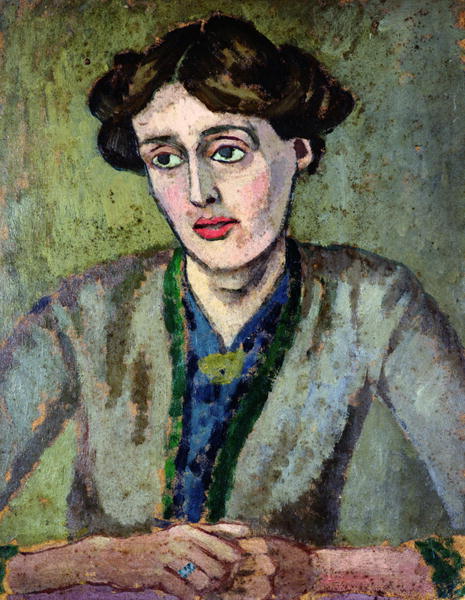
NOTES ON THE BLOOMSBURY GROUP
The best known members of this loose collective of English writers, intellectuals, philosophers and artists — who lived, worked, or studied together near Bloomsbury, London — were born between 1874–1883: Virginia Woolf (1882), her sister, painter Vanessa Bell (1879), the economist John Maynard Keynes (1883), author E. M. Forster (1879), and writer Lytton Strachey (1880). At Trinity in 1899 Strachey, Woolf, the intellectual Saxon Sydney-Turner (1880), and art critic Clive Bell (1881) became good friends with Thoby Stephen (1880), who introduced them to his sisters Vanessa and Virginia in London. The Bloomsbury Group’s works and outlook would deeply influence literature, aesthetics, criticism, and economics as well as modern attitudes towards feminism, pacifism, and sexuality.
Leonard Woolf later listed as “Old Bloomsbury” the men and women named above, plus: Leonard Woolf (1880), psychoanalyst (and Virginia Woolf’s brother) Adrian (1883) and psychoanalyst Karin Stephen (1890), painter Duncan Grant (1885), artist and art critic Roger Fry (1866), literary critic Desmond (1877) and writer Molly MacCarthy (1882).
The Bloomsbury Group was influenced by the philosopher [and honorary Psychonaut] G.E. Moore. With Moore, they believed that “one’s prime objects in life were love, the creation and enjoyment of aesthetic experience and the pursuit of knowledge.” They were aesthetes, who — although left-liberal generally, and opposed to militarism – were unpolitical. Clive Bell articulated their mostly shared criticism of materialistic realism in painting and fiction.
Who belongs to this generation? Click here.
Please note that the following was written in 2008–2010.
The Anarcho-Symbolists are a lost generation, overshadowed by their immediate elders (the deep-diving Plutonians) and juniors (the high-flying Psychonauts). HiLobrow luminaries of this generation include Alfred Jarry, Emma Goldman, William Butler Yeats, Paul Valéry, André Gide, Richard Strauss, Arthur Symons, Wassily Kandinsky, Erik Satie, Luigi Pirandello, George Ade, Gustav Landauer, Marcel Proust, Aubrey Beardsley, Alfred Stieglitz, Miguel de Unamuno, G.K. Chesterton, H.G. Wells, and Gertrude Stein.
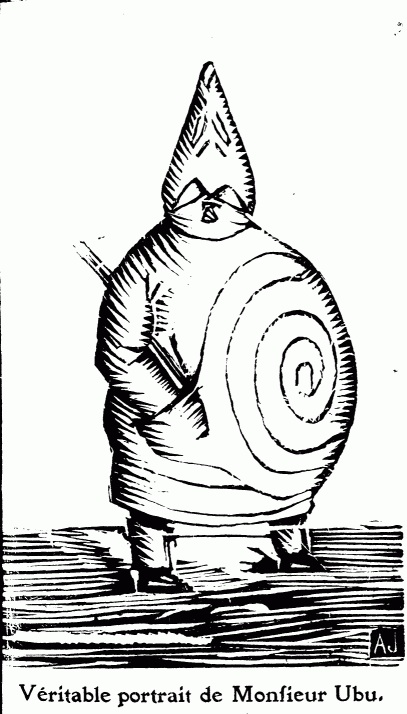
In what sense is this a “lost” generation? The hilobrows listed above are hailed today for their influence on subsequent political, aesthetic, and intellectual movements, or as late adherents to previous movements; and it’s common, in discussions of this or that literary or intellectual or artistic “generation,” to see an asterisk by the names of, e.g., Yeats, Stein, or Unamuno — e.g., was Stein really a member, along with Hemingway, of the capital-L Lost Generation? No!
In fact, the Anarcho-Symbolist Generation invented neither anarchism nor Symbolism. Pierre Joseph Proudhon, the first person ever to call himself an anarchist, died just as the earliest members of this generation were being born. And the original Symbolist litterateurs (Rimbaud, Verlaine, Mallarmé, as well as Remy de Gourmont, Paul Adam, Alfred Vallette) were older, too. However, in this 1864-73 generational cohort, these unrelated and incompatible movements were negatively-dialectically synthesized, held together in a productive tension unthinkable to members of earlier or later generations… with the exceptions of Mallarmé, who in 1894 insisted that only the poet should be called an anarchist; and Félix Fénéon, about whom we should all learn more.
Members of this cohort were in their teens and 20s during the Eighteen-Eighties (1884–93, not to be confused with the 1880s), and in their 20s and 30s during the Nineties (1894–1903, not to be confused with the 1890s).
I thought I’d coined the term “Anarcho-Symbolist” (a play on anarcho-syndicalism), only to discover that I must have encountered it first in Roger Shattuck’s The Banquet Years, which describes the heyday (1885-1918) of this 1864-73 cohort. Shattuck employs the term to describe certain proto-Situationist tendencies originating in fin de siècle and early 20th-century Paris, where outsider anti-political and literary anarchists and nihilists declared that “the style of one’s life and one’s art took precedence over their content, the act of rebellion over the cause.”
Alfred Jarry — often called a “forerunner to the Surrealists,” or listed as an inspiration to juniors like Guillaume Apollinaire, André Salmon, Max Jacob, or Pablo Picasso — is the prototypical Anarcho-Symbolist. Jarry’s life and art, his pranks and ’pataphysics, his absurdism and experimentalism, are a microcosm of this generation’s impetus and style.
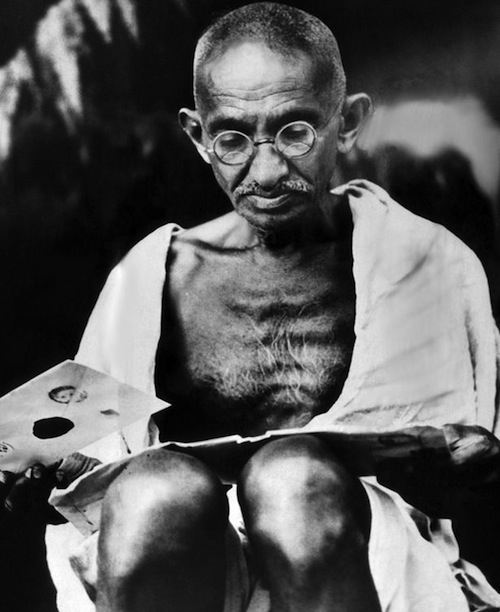
Notable anarchist members of this generation — including Emma Goldman, Alexander Berkman, Zo d’Axa, Rosa Luxemburg, Voltairine de Cleyre, Émile Henry, Gustav Landauer, Gaetano Bresci, Rudolf Rocker, Leon Czolgosz, Shūsui Kōtoku, Sante Geronimo Caserio, Michele Angiolillo, Luigi Lucheni, Alexandros Schinas, and Ricardo Flores Magón, plus honorary Anarcho-Symbolist Gabriele D’Annunzio — ranged from (often violent) radicals to reformers (like Mahatma Gandhi), and from staunch individualists to anarcho-syndicalists and -communists. But they agreed that human beings are capable of rationally governing themselves in a peaceful, cooperative, productive manner, and that government, exploitative owners of the means of production, despotic teachers, and domineering parents are all part of the problem.
If anarchism was the ne plus ultra of Enlightenment political tendencies, the late-Romantic literary movement known as Symbolism was a quasi-occult mode of knowledge deliberately opposed to the positivism of the period. In his 1899 book The Symbolist Movement in Literature, which introduced French Symbolism (Rimbaud, Verlaine, Mallarmé) to the English-speaking world, Arthur Symons calls symbolism “a form of expression… for an unseen reality apprehended by the consciousness.” And in a 1900 essay, William Butler Yeats derided the realist trend (“scientific movement”) in literature and praised instead the symbolist tendency, because it “call[s] down among us certain disembodied powers, whose footsteps over our hearts we call emotions.” The artist, in this philosophy, is a hierophant communing with the occult truths hidden by the “veil” (a favorite term of Symbolists) called reality. Notable Symbolists of the 1864-73 cohort include Symons, Yeats, Paul Valéry, Henri de Régnier, Dmitry Merezhkovsky, Vyacheslav Ivanov, John Gray, Ernest Dowson, Zinaida Gippius, André Gide, Tadeusz Miciński, and Valery Bryusov. Plus: Edvard Munch.
Who belongs to this generation? Click here.
Please note that the following was written in 2008–2010.
I’ve named this 1854-63 generation after one of its members: Percival Lowell, the astronomer who predicted the existence of Planet X — which was discovered in 1930, and named Pluto in part to echo P.L.’s initials. Pluto is the god of the underworld, and members of this generation — Freud, Emil Kraepelin, Sir James Frazer, Eugen Bleuler, Julius Wagner-Jauregg, Franz Boas, Émile Durkheim — were dedicated to spelunking the darkest corners of the unconscious, rationalizing the world’s religions and myths, laying bare the deepest structures of society and culture.
And then there’s Plutonian Joseph Conrad’s voyage to the Heart of Darkness and Rimbaud’s Une Saison en Enfer. Kellogg and Post were spelunkers of humankind’s intestinal underworld; their invention of breakfast cereal (at their respective communes) was one aspect of their shared fascination with nutrition and enemas.
Members of this cohort were in their teens and 20s during the Eighteen-Seventies (1874–1883, not to be confused with the 1880s), and in their 20s and 30s during the Eighties (1884–93, not to be confused with the 1880s).
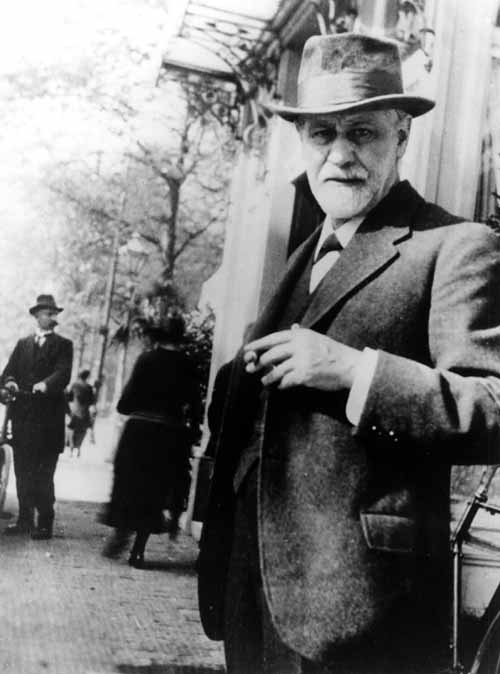
Erik Davis tells me: “Pluto is a dark technological god of transformation. So you get the apocalyptic dimension, the sense of transformation, the ‘cosmic’ current.” Yes, Plutonians like Rimbaud, Samuel Liddell MacGregor Mathers, Arthur Edward Waite, Arthur Machen, Edmund Husserl, Theodor Reuss, Pierre Janet, Margaret Murray, Rudolf Steiner, Alfred North Whitehead, and Henri Bergson were fascinated with occultism, metaphysics, the systematic derangement of the senses, the élan vital, the cosmic perspective, the naked lunch at the end of the fork perceived only via the phenomenological epoché.
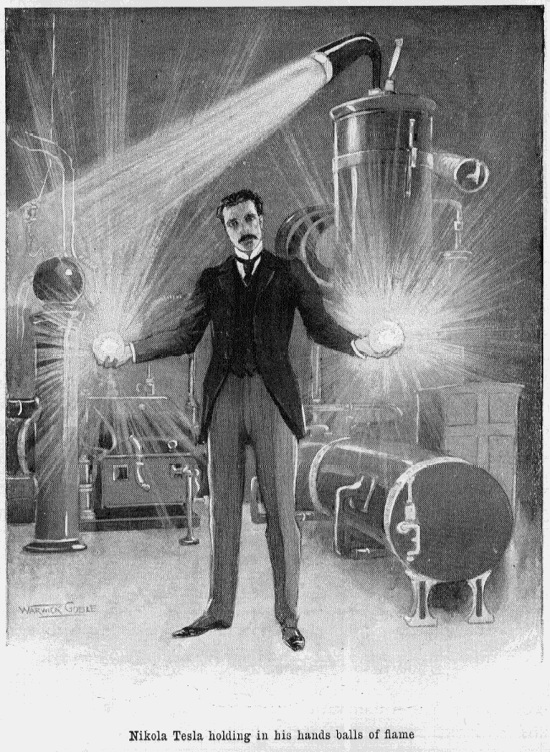
Oh, and speaking of plutonian currents and technological transformation: the Serbian-born inventor Nikola Tesla invented alternating current (the AC to Edison’s DC). As we read in the July 26, 2009 New York Times Magazine, in Serbia, Tesla “is not just the local kid made good: his name, everywhere, stands for the hope that lurking beneath the tediously materialistic surface of our world lie the phantasmagorical powers of a hidden realm.”
The Tesla coil, patented in 1891, took ordinary sixty-cycle per second household current and stepped it up to extremely high frequencies — which allowed its inventor to develop some of the first neon and fluorescent illumination, and to take the first x-ray photographs. Tesla also invented wireless telegraphy, though credit eventually went to Marconi. And in 1890, Tesla illuminated a vacuum tube wirelessly — having transmitted energy through the air. Wireless remote control soon followed. After building an experimental station near Pikes Peak, in Colorado Springs, Tesla’s technicians assembled an enormous Tesla coil, specially designed to send powerful electrical impulses into the earth. Tesla, the greatest of all Plutonians, had decided that the earth itself was a great conductor, “literally alive with electrical vibrations” — and that he could use it to transmit electrical power without wires.
Tesla claimed that soon, humankind would tap the sun’s energy with an antenna, control the weather with electrical energy, and establish a global system of wireless communications. “When wireless is fully applied the earth will be converted into a huge brain,” he told backer J.P. Morgan, “capable of response in every one of its parts.” Morgan financed Tesla’s Wardenclyffe project, a 187-foot tower supporting a 55-ton steel sphere. Beneath the tower, iron pipes plunged 420 feet into the ground so that currents could pass through them and seize hold of the earth. “In this system that I have invented,” Tesla explained, “it is necessary for the machine to get a grip of the earth, otherwise it cannot shake the earth. It has to have a grip… so that the whole of this globe can quiver.”
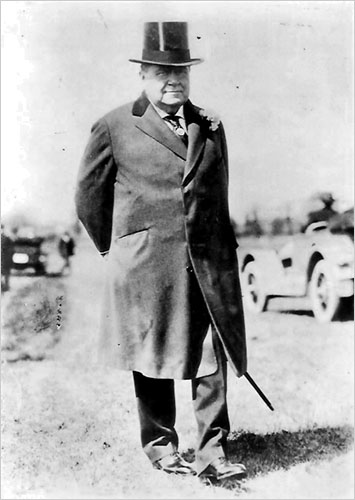
Pluto was also the Roman god of precious metals, because they are mined from the underworld. Every generation has its plutocrats, but the very names of the 1854-63 cohort’s American capitalists and Wall Street journalists are iconic: Barron, Mellon, Schwab, and (Dow) Jones! Diamond Jim Brady! Not to mention Ford, Gillette, Sears, Duke, Hearst, Guggenheim, Hershey, Dayton, Maytag, Smucker, Hormel, Wrigley, and honorary Plutonians Cecil Rhodes, John Jacob Astor, and Jim Beam.
A handful of Plutonians were some of the most brilliant critics of the horrors, paradoxes, and absurdities of modern capitalism, ever: Thorstein Veblen (The Theory of the Leisure Class), Georg Simmel (Philosophy of Money), Socialist Party presidential candidate and I.W.W. co-founder Eugene V. Debs, muckraker Ida Tarbell (History of the Standard Oil Company), and honorary Plutonian Max Weber (The Protestant Ethic and the Spirit of Capitalism).
Who belongs to this generation? Click here.
Please note that the following was written in 2008–2010.
Members of this defiant, overreaching, iconoclastic generation were in their teens and 20s during the Eighteen-Sixties (1864-73, not to be confused with 1860s), and in their 20s and 30s during the Seventies (1874-83, not to be confused with the 1870s).
So named (by me) because of certain similarities to the Original Promethean cohort (1785-94), the New Prometheans — hi-, lo-, no-, and hilobrow members of which include Friederich Nietzsche, August Strindberg, Bram Stoker, Kate Chopin, Thomas Edison, Joris-Karl Huysmans, Comte de Lautréamont, Lucy Parsons, Oscar Wilde, Robert Louis Stevenson — is notable for its scientists and psychologists, who delved into dangerous areas of knowledge; for its thinkers and writers who rejected Victorian man’s faith that the world is systematic and subject to both reason and human control; and for its activists.
“There are things done today in electrical science which would have been deemed unholy by the very men who discovered electricity — who would themselves not so long before have been burned as wizards.” So opines Van Helsing, in Bram Stoker’s Dracula.
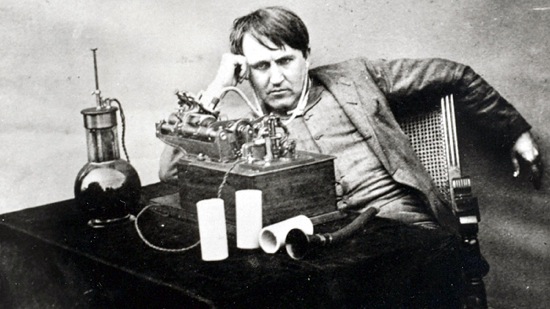
In Greek mythology, Prometheus was a son of the Titans, who created mankind out of clay, and was punished for stealing fire (understood metaphorically to mean: forbidden knowledge of writing, medicine, science, mathematics, agriculture; or any advanced technology) from Zeus. Because of Prometheus’ defiance and daring (metaphorically, for example in the works of Romantic poets like Shelley, Byron, and Goethe: the triumph of intellect over tyrannical church, monarchy, patriarchy), mankind is punished: In Hesiod’s version of the story, Zeus requires mankind to labor in order to survive. Hesiod also claims that after Prometheus’ theft of fire, Zeus sent Pandora to Prometheus’ brother Epimetheus, bearing a box (the original technological “black box”?) full of “evils, harsh pain and troublesome diseases which give men death.”
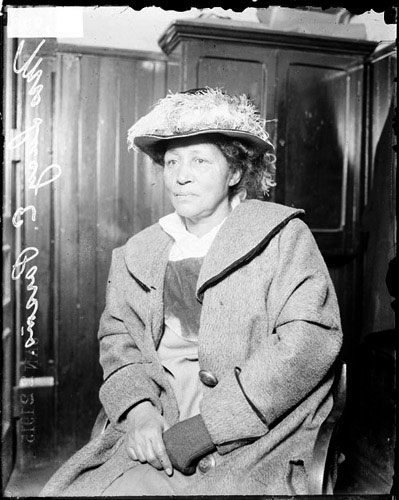
The defiance and daring of this generation, their scorn for religious, political, and sociocultural tyranny, not to mention the “proper” limits of knowledge, knew no limits. Two of the greatest New Prometheans — inventors Edison and Westinghouse — made stealing the fire from the gods not a metaphor but a reality. Nietzsche declared that God was dead; Lautréamont’s fictional character, Maldoror, has forsaken God and mankind. Parnell led the movement for Irish self-government; Louis Riel led two resistance movements against the Canadian government. Annie Besant was a women’s rights activist, and supporter of Irish and Indian self-rule; Lady Gregory was an important supporter of Irish cultural nationalism. Kate Chopin’s The Awakening (1899) portrayed the inner life of a woman who rejected her role as a businessman’s ornamental wife; it challenged conventional values and shocked many critics. Anarchists Albert and Lucy Parsons helped found the Industrial Workers of the World (Wobblies). Young members of the Decadent movement — in France, Joris-Karl Huysmans; in England, Oscar Wilde [honorary New Promethean] — declared themselves to be “against nature” itself. The James-Younger gang were guerrilla fighters turned outlaw; the anarchistic playwright Strindberg’s first play was titled The Outlaw.
Other members of this generation — Zeus-like — reacted violently against the New Promethean tendencies of the era (and against the influence of their immediate elders, the Original Decadent generation): Tsar Alexander III was a particularly retrograde monarch. Max Nordau’s Degeneration was an influential attack on so-called degenerate art, as well as a polemic against the effects of various social phenomena of the period, such as rapid urbanization. The term “comstockery,” meaning “censorship because of perceived obscenity or immorality”, is named after a New Promethean; while Carrie Nation claimed a divine ordination to promote temperance by smashing up bars.
Who belongs to this generation? Click here.
Please note that the following was written in 2008–2010.
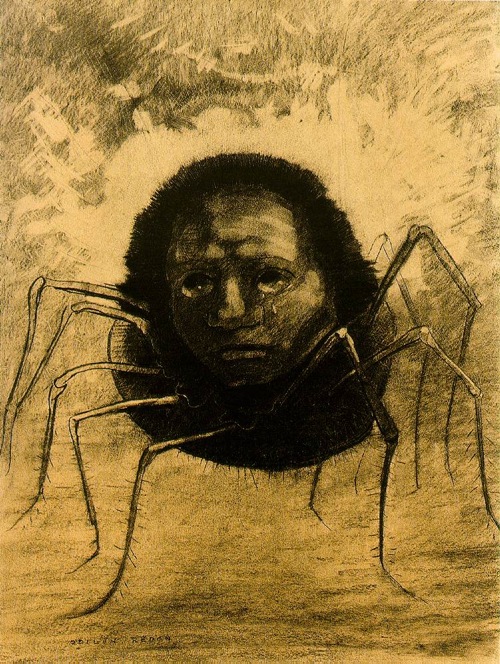
Men and women born from 1834 through 1843 were in their teens and 20s in the Eighteen-Fifties (1854-63; not to be confused with the 1850s), and in their 20s and 30s in the Eighteen-Sixties (1864-73).
With their usual ham-fistedness, Strauss and Howe lumped this cohort together with their immediate elders and have claimed that anyone born between 1822 and 1842 belonged to the so-called Gilded Generation. One can see why that uninspired label appeals to middlebrows. The Gilded Age (a derisory term coined by Twain) refers to the post-Civil War and post-Reconstruction eras (roughly 1865-1901), during which period a modern industrial economy — complete with a national transportation and communication network, the corporation as dominant form of business organization, and a managerial revolution — was rapidly created. Members of Strauss and Howe’s so-called Gilded Generation were in their prime during that period. As a result, among the wealthiest Americans in history are Frederick Weyerhaeuser (1834), Marshall Field (1834), Peter Widener (1834), Andrew Carnegie (1835), Jay Gould (1836), J. Pierpont Morgan (1837), John D. Rockefeller (born 1839), Oliver Payne (1839), and Henry Huttleston Rogers (1840).
Contra Strauss and Howe, it ought to be stressed that many key Gilded Age figures were older — e.g., Cornelius Vanderbilt, the social Darwinist Herbert Spencer — or younger — e.g., Aaron Montgomery Ward, Theodore Newton Vail, George Westinghouse, Thomas Edison, Alexander Graham Bell, Henry Clay Frick, F. W. Woolworth, Andrew W. Mellon, and Frederick Winslow Taylor, not to mention Thorstein Veblen — than their so-called Gilded Generation. Which is not to suggest that the start or end dates of Strauss and Howe’s bogus generation ought to be extended! In fact, the two cohorts I’ve identified within Strauss and Howe’s so-called Gilded Generation (one born from 1825-33, the other from 1834-43) do have more in common with one another than they do with men and women born before 1823-4 or after 1843-4. But their differences cannot and must not be overlooked.
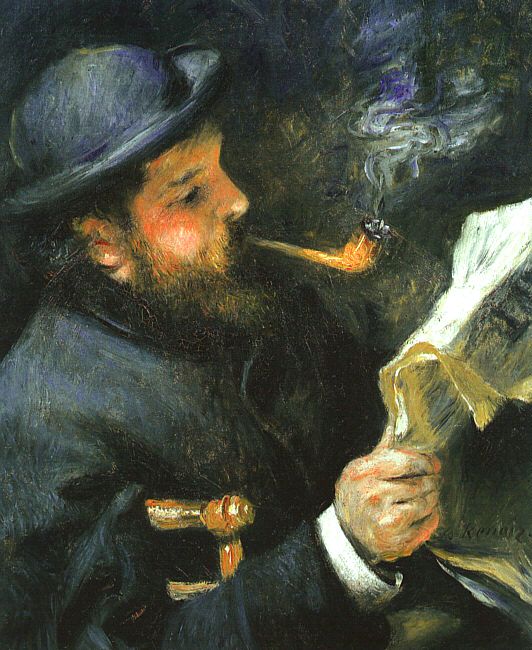
One thing the two generations have in common is the American Civil War. Most men and women born from 1825-33 were in their 20s and 30s during the Civil War, while those born from 1834-43 were in their teens and 20s. The two cohorts’ experience of the war may have differed, but they did share a formative experience with each other that Americans born before 1823-4 or after 1843-4 were spared. Another thing the two generations have in common is their betwixt-and-between-ness, i.e., when it comes to the art and literature they produced. Artists and writers born in the decades just before 1823-4 are romantics; and those born after 1843-4 are modernists. (The 1844-53 cohort, whom I’ve dubbed the New Prometheans, are the first truly modernist generation, which is why my generational periodization scheme originally began with them.) The 1825-33 cohort is neither romantic nor modern — it’s the first post-Romantic generation. I’ve dubbed their immediate juniors, a cohort which also bridged Romanticism and Modernism, the Original Decadents.
Though I’ve stressed the similarities between the 1825-33 and 1834-43 cohorts, they occupy notably different positions on the Romanticism-Modernism continuum. The older generation (the Post-Romantics) were, in a phrase, more romantic; the younger were more modernist. Modernist enough, at any rate, to offend journalists and critics who labeled certain transgressive (ugh) painters and writers with a misleading pejorative: Decadents. Though the term precedes this cohort, and though it is commonly applied to later artists and writers (Oscar Wilde, Aubrey Beardsley, Joris-Karl Huysmans, Comte de Lautréamont, Arthur Rimbaud), at the urging of one of my colleagues, I’ve decided to stick with this moniker.
High-, low-, no-, and hilobrow members of the 1834-43 cohort include: Alfred Sisley, Ambrose Bierce, Auguste Villiers de l’Isle-Adam, Charles Sanders Peirce, Claude Monet, Edgar Degas, Ernst Haeckel, Henry Adams, Henry James, James McNeill Whistler, Leopold von Sacher-Masoch, Mark Twain, Mother Jones, Odilon Redon, Paul Cézanne, Paul Verlaine [honorary], Pierre-August Renoir, Stéphane Mallarmé, Thomas Hardy, William Dean Howells, William James, William Morris, and Winslow Homer. Friedrich Nietszche was born in the cusp year of 1844.
Who belongs to this generation? Click here.

The Civil War & Gilded Age
The Gilded Age, and the Civil War (see notes below on Pragmatism) were important influences on the outlook of Americans who came of age during the Fifties and Sixties. Particularly on African-Americans; slavery effectively ended in the U.S. in the spring of 1865 when the Confederate armies surrendered.
During the decades before the Civil War, America was experiencing an industrial revolution, and becoming a predominately urban country. In Connecticut, “the American system of manufacture” — also known as the “system of interchangeable parts” — first established itself. As a result, the Civil War was one of the earliest true industrial wars in human history, and the practices of total war, developed by General Sherman, foreshadowed World War I. (Cf. Ambrose Bierce’s stories “An Occurrence at Owl Creek Bridge,” “Killed at Resaca,” and “Chickamauga.”) Like the shell-shocked writers and artists who survived WWI, Bierce, Charles Sanders Peirce, William James, Mark Twain, and other American thinkers and writers were sharp critics of the routine stupidities and empty illusions of wartime, and they heaped scorn upon those with absolute ideas — e.g., whether pro- or anti-slavery.
The Gilded Age was characterized by rapid industrialization and urbanization. Oil magnate John D. Rockefeller and steel tycoon Andrew Carnegie symbolized both the “self-made man” and the spirit of acquisition that dominated the late 19th century. This latter spirit is what Mark Twain and Charles Dudley Warner criticized in their 1873 novel The Gilded Age, drawing attention to the artificial standards of taste attributed to the growing American middle class. Other critics were also concerned about the dangerous relationship between the economic growth of the United States and the corresponding decline of moral values under capitalism. The trend toward realism in American literature has been attributed to authors’ (semi-romantic, semi-modernist) desire to focus on the experience of those who were not part of the middle class that so defined the standards of their age.
Post-Realism
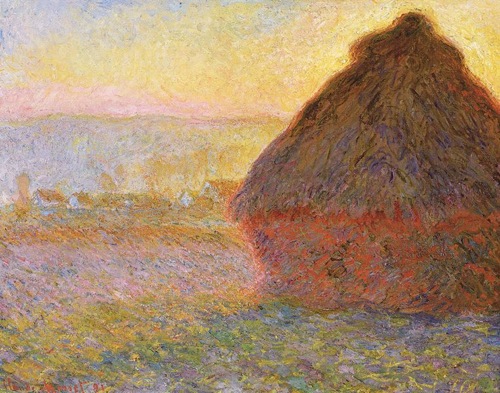
In Paris, the capital not merely of France but (in Benjamin’s phrase) the 19th century, earlier generations of artists and writers had pioneered Realism — which subscribed to an ideology of objective reality, truth and accuracy; and which, though not yet modernist, or even un-Romantic, revolted against the exaggerated emotionalism of the Romantic movement. Realism didn’t reach the United States until certain members of the 1834-43 generation — James McNeill Whistler, Winslow Homer, Thomas Eakins [honorary], Mary Cassatt [honorary]; and, in literature, William Dean Howells and Mark Twain — brought it home. (Note that of the painters, only Eakins remained a Realist throughout his career.) Meanwhile, although some French painters who belonged to the 1834-43 generation — including, famously, Degas — may have called themselves Realists, the Impressionists are best described (I think) as post-Realists.
Most of the founding Impressionists were born from 1834-43: e.g., Claude Monet, Pierre-Auguste Renoir, Alfred Sisley, Frédéric Bazille, Paul Cézanne, Edgar Degas, Armand Guillaumin, Berthe Morisot. (Camille Pissarro and Édouard Manet were born before ’34; Mary Cassatt, born in the cusp year of ’44, is an honorary OD.) Impressionist painting was realistic (and, therefore, romantic) insofar as it emphasized ordinary subject matter and the accurate depiction of light in its changing qualities; however, insofar as one of the changing qualities of light the Impressionists sought to depict was its change over time, in a single work of art, and insofar as they regarded movement as a crucial element of human perception and experience, and insofar as they prized unusual visual angles, the Impressionists were proto-modernist.
Like the American psychologist William James, another member of the OD generation, the Impressionists were close students of the experience of experiencing. By recreating the sensation in the eye that views a subject, rather than recreating a subject, and by creating a variety of techniques and forms, Impressionism paved the way for such truly modernist movements in painting as Neo-Impressionism, Post-Impressionism, Fauvism, and Cubism.
Symbolism and Aestheticsm
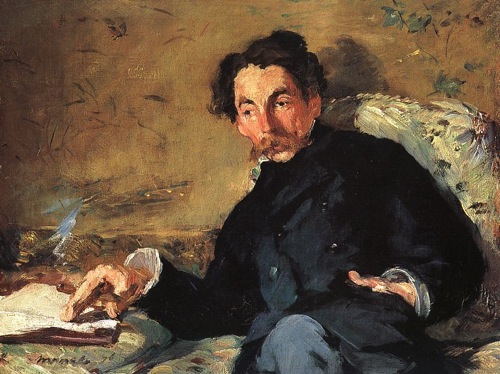
The Symbolist movement in literature and art was spearheaded by members of the 1834-43 cohort: e.g., Auguste Villiers de l’Isle-Adam, Stéphane Mallarmé, Algernon Charles Swinburne, Henri Fantin-Latour, Odilon Redon. (Paul Verlaine, born in the cusp year of ’44, is an honorary OD; Gustave Moreau was born earlier.) Certain of their predecessors (Baudelaire, Poe) also used symbols; in an almost paranoid fashion, though, the Symbolists — who laid emphasis on dreams and ideals vs. reality — invested every object in the universe with symbolic value; anything could represent a state of mind. Speaking of states of mind, some (but not all) Symbolists enjoyed brooding upon mystical and otherworldly themes, the inevitability of death and decay, and the fatal power of sexuality. This was an outgrowth of the gothic side of Romanticism; but where Romanticism was impetuous and rebellious, symbolist art was hieratic. Also, instead of romantically privileging the nitty-gritty over the imagination, Symbolists insisted that art should aim to capture more absolute truths which could only be accessed by indirect, suggestive methods.
As I’ve said in a post about the Anarcho-Symbolist cohort, Symbolism was a quasi-occult mode of knowledge deliberately opposed to the positivism of the period. In his 1899 book The Symbolist Movement in Literature, which introduced French Symbolism to the English-speaking world, Symons calls symbolism “a form of expression… for an unseen reality apprehended by the consciousness.” In a 1900 essay, William Butler Yeats derided the realist trend (“scientific movement”) in literature and praised instead the symbolist tendency, because it “call[s] down among us certain disembodied powers, whose footsteps over our hearts we call emotions.” The artist, in this philosophy, is a hierophant communing with the occult truths hidden by the “veil” called reality.
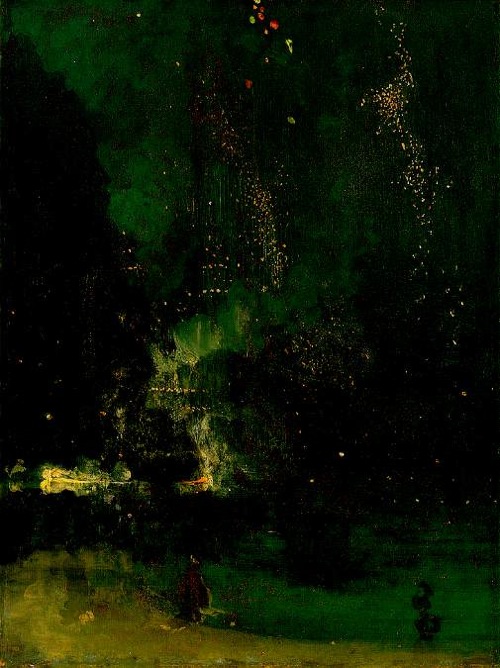
Aestheticism, the British branch of Symbolism, was pioneered by Swinburne, James McNeill Whistler, and Edward Burne-Jones, and it was influenced by Walter Pater: all (except Burne-Jones, born in the cusp year of ’33) of whom were born from 1834-43. The Aesthetes developed a cult of beauty, and insisted — against sentimental, romantic critics — that Art does not have any didactic purpose; it need only be beautiful. The main characteristics of the movement were (anti-realistic) suggestion rather than statement, sensuality, heavy use of symbols, and synaesthetic effects. When Whistler’s 1875 painting “Nocturne in Black and Gold: The Falling Rocket” was exhibited, the romanticist art critic John Ruskin claimed he was “flinging a pot of paint in the public’s face.” In the subsequent libel trial, Whistler insisted that the public should see his works not as (merely) imparting information about an external world, but as something that “should stand alone, and appeal to the artistic sense of eye.”
Pragmatism
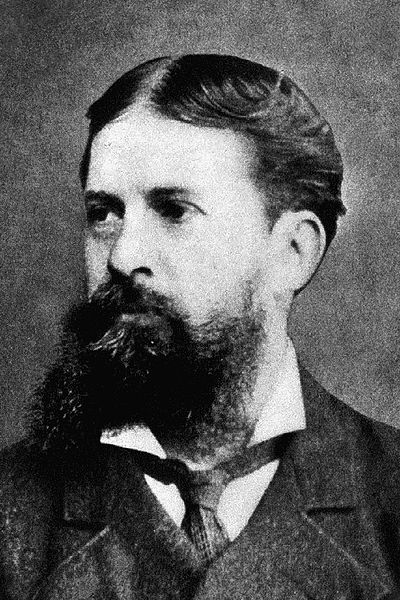
This post has mostly avoided looking at the influence of the American Civil War on members of the OD generation. According to Louis Menand’s The Metaphysical Club, a portrait of Justice Oliver Wendell Holmes, Jr., psychologist William James, and polymath Charles Sanders Peirce (all of whom were born from 1834-43), the Civil War “swept away … almost the whole intellectual culture of the North…. It took nearly half a century for the United States to develop a culture to replace it, to find a set of ideas, and a way of thinking, that would help people cope with the conditions of modern life.”
What replaced the ideological, unpractical intellectual culture of the North (i.e., Boston and New York transcendentalists and abolitionists) was pragmatism, an anti-metaphysical philosophical movement whose pioneers claimed that an ideology or proposition is only true if it works, and that unpractical ideas are to be rejected. The truth of an idea needed to be tested to prove its validity, insisted Peirce, James, and Holmes — and, after them, the positivists, radical empiricists, instrumentalists, verificationists, conceptual relativitists, and fallibilists who dominated most of the 20th century.
Pragmatism is the flip side of Symbolism and Aestheticism. As Adorno would demonstrate in his debates with positivist social scientists, Pragmatism might seem ultra-modern, but it’s always also very much a romantic ideology.
Who belongs to this generation? Click here.
Please note that the following was written in 2008–2010.
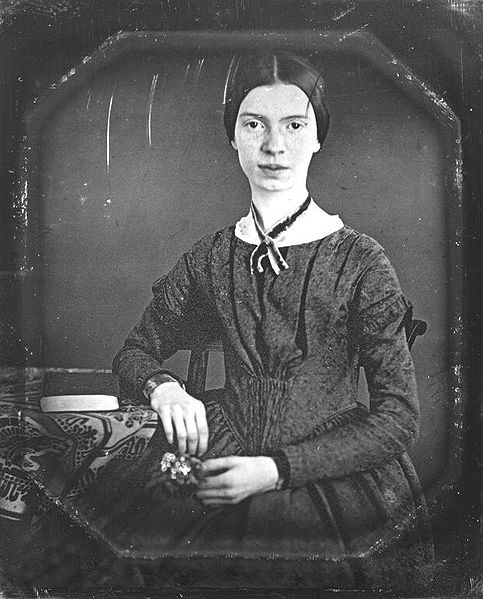
Men and women born from 1825-33 were in their teens and 20s in the Eighteen-Forties (1844-53; not to be confused with the 1840s), and in their 20s and 30s in the Eighteen-Fifties (1854-63). Let’s call them the Post-Romantic generation.
Strauss and Howe lumped this cohort together with their immediate juniors (whom I’ve dubbed the Original Decadents); they have claimed that anyone born between 1822 and 1842 is a member of the so-called Gilded Generation. As I’ve argued before, although it’s true that members of Strauss and Howe’s so-called Gilded Generation were in their prime during the Gilded Age, and although the two cohorts I’ve identified within Strauss and Howe’s so-called Gilded Generation do have more in common with one another than they do with men and women born before 1823-4 or after 1843-4, the differences between the 1825-33 and 1834-43 cohorts are important ones.
A close look at such hi-, lo-, no-, and hilobrow Post-Romantics as, e.g., Camille Pissarro, Wilhelm Dilthey, Dante Gabriel Rossetti, Edouard Manet, Emily Dickinson, Gustave Doré, Gustave Moreau, Henrik Ibsen, Johannes Brahms, John Everett Millais, Jules Verne, Leo Tolstoy, Lewis Carroll, and honorary Post-Romantic William Morris, indicates that the opposition between modernism and romanticism is a vulgar one. Like the Original Decadents, the Post-Romantics are a transitional generation trapped in a productive tension between the Romantic and Modern eras. However, it’s safe to say that while the Decadents are more modernist, the Post-Romantics are more romanticist.
Who belongs to this generation? Click here.
The Post-Romantics were more skeptical, iconoclastic than Romantic-era generations, yet less cynical than Modern-era generations. They rejected those Christian and classical values that for so long had formed a code whereby art was able to bring forth meaning; yet they had a romantic penchant for the past — for medieval life and art, for myths and fairy tales and folk tales.
It has been argued that Emily Dickinson’s poetry grappled with the major pre-Modern epistemological shift that necessitates a faith in empirical procedures. Dickinson “reimagined Romanticism … neither battening on the irony of irony nor believing in unbelief,” according to Richard E. Brantley’s Experience and Faith: The Late-Romantic Imagination of Emily Dickinson. Her healthy skepticism and religious doubt destroyed neither her faith nor her knowledge; instead, her faith was enriched and her knowledge deepened by skepticism and doubt. Dickinson’s radical skepticism was “both tough and tender,” claims Brantley; she never fully slipped into the Modern or Postmodern fascination with undecidability. Though it was proto-Modernist, her poetry resists the urge to dwell in suspicion.
Tolstoy’s The Death of Ivan Ilych is modernist insofar as the relationships among Ivan and his family members appear to be fragmented and disjointed; yet — romantically — there is a high level of emotional connection among Tolstoy’s characters that’s revealed by the novel’s end.
Consider the Pre-Raphaelites, whose supposed anti-modernism was a fundamentally modern movement in conception and ideology. The Pre-Raphaelites were a group of English painters, poets, and critics assembled in the late ’40s by William Holman Hunt, John Everett Millais, and Dante Gabriel Rossetti. They weren’t exactly modernist: because, e.g., they continued to accept both the concepts of history painting and of mimesis, or imitation of nature, as central to the purpose of art. However, some art historians consider the Pre-Raphaelites the first avant-garde art movement (i.e., instead of the Post-Impressionists) because they were reformists who rejected the mechanistic approach first adopted by the artists who succeeded Raphael and Michelangelo. Call them ambivalent modernists.
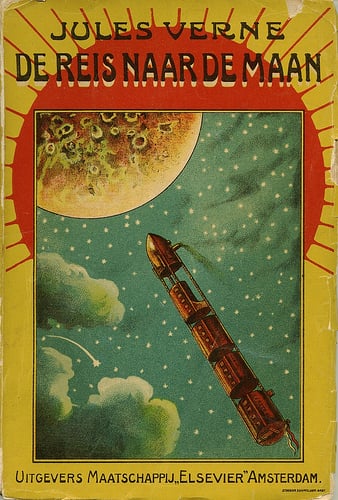
The Pre-Raphaelites believed (romantically) that medieval culture possessed a spiritual and creative integrity that had been lost in later eras. However, their backward glances were retrofuturistic — i.e., their vision is the inverse of [fellow Post-Romantic] Jules Verne’s, the supposed rationalist and promoter of science who (as Roland Barthes notes in Mythologies) was a conservative who looked to the future only in order to espy there the triumph of romanticist ideals in post-1848 France. Verne romanticized science and technology as fairy tales liberating his bourgeois readers from the tedium of modern urban life; the Pre-Raphaelites used romantic subjects taken from poetry and medieval legend as an excuse to present a proto-modernist, anti-bourgeois aesthetic of beauty for its own sake.

The writings of [honorary] Post-Romantic William Morris formed the basis for the arts and crafts movement. Morris advocated a romanticist return to well-made, handcrafted goods instead of mass-produced, poor quality machine-made items. Yet in his famous statement, “Have nothing in your house that you do not know to be useful, or believe to be beautiful,” Morris outlined the modernist belief that utility was as important as beauty. Though a contemporary of the [Original Decadent] painter Burne-Jones, Morris fell under the influence of the Post-Romantic Rossetti while at Oxford — and helped Rossetti paint the new Oxford Union debating-hall with scenes from Le Morte d’Arthur; the three men would later cofound the decorative arts firm that became Morris & Co. Morris’ utopian novel News From Nowhere is the tale of a Victorian who wakes to find himself in the year 2102, at which time society has changed into a pastoral paradise, in which all people live in blissful equality and contentment. Like Verne’s novels, it’s a romanticist vision of the future.
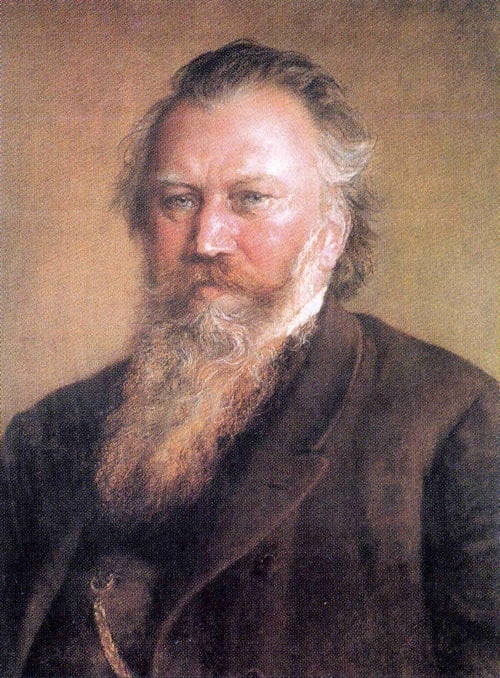
NB: “Post-Romanticism” is a descriptor often applied to the music of Johannes Brahms (born 1833), who was simultaneously a traditionalist (in contrast to the opulence of his contemporaries, his music is rooted in the structures and compositional techniques — e.g., strict counterpoint — of the Baroque and Classical masters) and an innovator (his fondness for motivic saturation, i.e., keeping motifs and themes below the surface or playing with their identity, and for irregularities of rhythm and phrase, and his bold exploration of “enriched harmony” and remote tonal regions influenced modernists like Schoenberg and Webern). In the final analysis, Brahms was more romanticist than modernist; he even considered giving up composition when it seemed that other composers’ innovations in extended tonality would result in the rule of tonality being broken.
Worth noting that James Fenimore Cooper’s frontiersman novels become world famous from 1823 on.
Who belongs to this generation? Click here.
Please note that the following was written in 2008–2010.
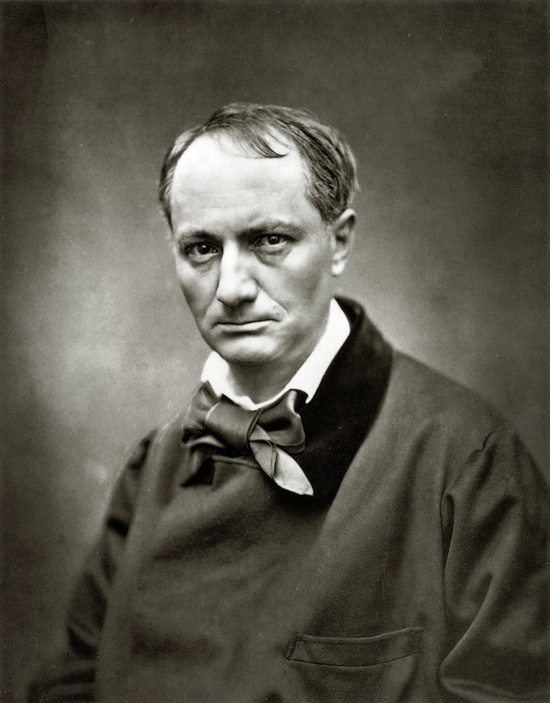
Strauss and Howe would have us believe that most men and women born from 1815-24 (they were in their teens and 20s in the Eighteen-Thirties [1834-43], and in their 20s and 30s in the Forties [1844-53]), were younger members of the so-called Transcendental Generation (born 1792-1821) — notable, they claim, for Transcendentalism, and for leading the US into Civil War. The youngest members of the 1815-24 cohort, meanwhile, get lumped in with the first-born members of Strauss and Howe’s so-called Gilded Generation (1822-42).
Strauss and Howe’s periodization, as always, is off. True, Civil War generals like Sherman, Grant, and Jackson belong to the 1815-24 cohort; however, Jefferson Davis, Abraham Lincoln, and Robert E. Lee are a generation older. Transcendentalists like Ralph Waldo Emerson, Bronson Alcott, George Ripley, and Orestes Brownson are two generations older than Henry David Thoreau (a member of the 1815-24 cohort). Meanwhile, though lingering Romanticist tendencies can indeed be found among the oldest members of the so-called Gilded Generation, the Post-Romantics (born 1825-33) are ambivalent about Romanticism and Modernism; they’re trapped between two eras.
Lost within Strauss and Howe’s periodization is a strikingly coherent generation of dark, skeptical, ironic, apocalyptic, utopian, and proto-Existentialist romantics — whose number includes Baudelaire and Flaubert, Melville and Whitman, Marx and Engels. The 1815-24 cohort I’ve identified gains some of its identifiable character from the fact that it is the last generation of the Romanticist era; its members (though sometimes identified as modernists) seemed well aware of that fact. The 1815-24 cohort rejected the middle Victorian period’s smug progressivism: its faith in moral and social progress. That’s why I call this the Retrogressivist Generation.
Who belongs to this generation? Click here.
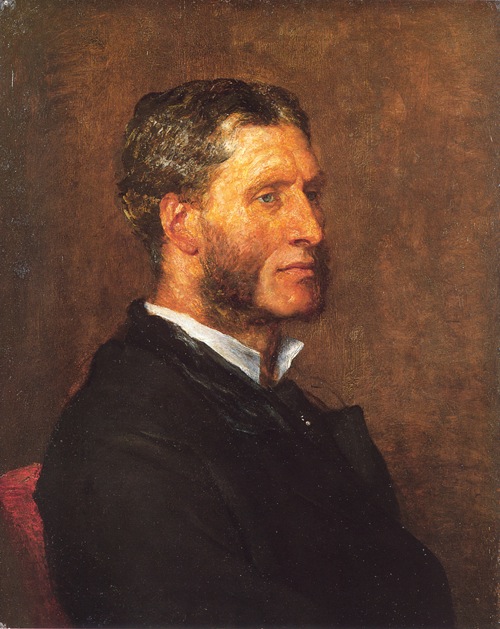
The writings of English poet and cultural critic Matthew Arnold, who was born nearly on the cusp between the 1815-24 cohort and the earliest post-Romantics, and who agonized about the corrosion of Faith by Doubt, is sometimes described as a bridge between Romanticism and Modernism. It would be more precisely accurate to describe Arnold’s work as a bridge between Late/Final Romanticism and Post-Romanticism.
“To be a useful man has always seemed to me something very ugly,” Baudelaire writes in his journal — a phrase which the culturally conservative sociologist Daniel Bell seized upon to sum up the “modernist” adversary culture and its rage against bourgeois norms of morality, work, and consumption. However, Baudelaire didn’t reject morality altogether, as another journal note indicates: “When I say ‘moralists,’ I mean Pharisee-like pseudo-moralists.” Moralist is a pejorative for the romanticist Baudelaire, that is to say, only because the term has been spoiled for him by progressivists. Contra Bell and also many critics who admire him, Baudelaire was no modernist; the modern era, from Baudelaire’s dark/ironic romanticist perspective, was a utilitarian, progressivist one. In an article on the establishment of prizes to be awarded to “healthy” works of theater, Baudelaire scoffs in horror at a recently published book for children: “As I read [this book] what do I find but goodness constantly being rewarded with lollipops, and wickedness invariably being made ridiculous by inevitable punishment. ‘If you behave yourself you will get a yum-yum’ — that is the whole basis of this sort of [progressivist] morality.”
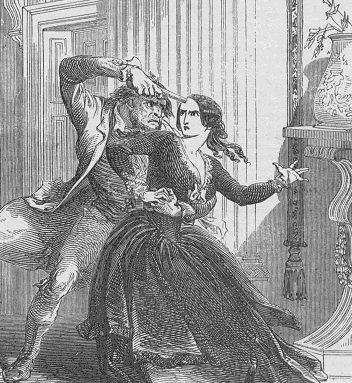
“Dark” Romanticism also finds expression in that genre of literature known as Victorian Gothic, which follows the original Gothic authors in rejecting the clarity and rationalism of the Enlightened establishment, and whose ruins symbolize pessimism regarding the Enlightenment’s staying power. The Gothic novel — Baudelaire was an admirer of Maturin’s Melmoth — was revived in the Forties (during which decade the Retrogressivists came into their own) by George W.M. Reynolds (b. 1814), who inaugurated the serial The Mysteries of London (1844-on), and authored the horror trilogy Faust (1846), Wagner the Wehr-wolf (1847), and The Necromancer (1857). Emily Brontë (b. 1818) transported the Gothic to the Yorkshire Moors in Wuthering Heights (1847), while Charlotte Brontë (b. 1816) gave us a madwoman in the attic in Jane Eyre (1847).
Also worth noting that Sir Walter Scott’s novels become world famous from 1814 on.
Sheridan Le Fanu (b. 1814), whose fiction — featuring castles set in a barren landscape, with a cast of remote aristocrats dominating an atavistic peasantry — might or might not represent a form of Irish protest literature, was the premier ghost story writer of the 19th century. The influential critic John Ruskin, meanwhile, praised the imagination and fantasy exemplified by Gothic and neo-Gothic architecture. Wilkie Collins’ mystery/suspense novels, particularly The Woman in White (1860) and The Moonstone (1868), not to mention his supernaturalist tales, also employ Gothic atmospherics and tropes.
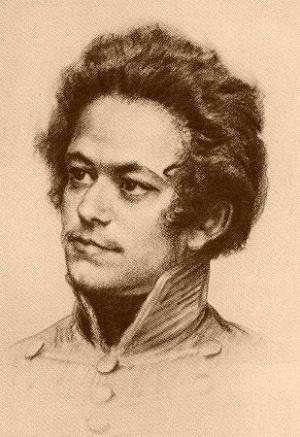
Writing in Paris in the early Forties, Karl Marx sounded a Romantic retrogressivist note in what are known as his Ökonomisch-philosophische Manuskripte (Economic and Philosophic Manuscripts). Despite the rhetorical conjuring trick by means of which he’d dismiss earlier, “utopian” socialists as unscientific, Marx was primarily a romantic political messianist and secondarily a social scientist. Contra those progressivists who hailed liberal capitalism as the greatest freedom history has known, Marx insisted that it represents a bondage more insidious and degrading than any earlier social oppression. Everyone under liberal capitalism is driven by a demoniacal, impersonal force — Marx’s themes of possession and alienation make him sound like Sheridan Le Fanu, or Wilkie Collins — away from their human essence to pursue an unattainable goal.
The cure for mankind’s “self-alienation,” in the young Marx’s formulation? The (romantic) destruction of capitalism and the (retrogressive) immersion of the individual in a neo-medievalist social totality.
Who belongs to this generation? Click here.
Please note that the following was written in 2008–2010.

Men and women born from 1805-14 (they were in their teens and 20s in the Eighteen-Twenties [1825-33], and in their 20s and 30s in the Thirties [1834-43]), belong — according to the too-widely accepted periodization of Strauss and Howe — to a so-called Transcendental Generation (born 1792-1821). As usual, I beg to differ.
Strauss and Howe’s Frankenstein monster of a generation cobbles together two discrete, distinctive generational cohorts, one born from 1805-14, the other from 1815-23. Their periodization scheme also shanghais younger Original Prometheans and older Retrogressivists into the mix. In order to celebrate the proto-middlebrow legacy of Ralph Waldo Emerson at the expense of his high-, low-, no-, and hilobrow contemporaries (e.g., Poe, Bakunin, Baudelaire, Kierkegaard, Marx), Strauss and Howe invented a Transcendental Generation whose particulars don’t hold up under even the most cursory scrutiny. Why hasn’t this already been pointed out?
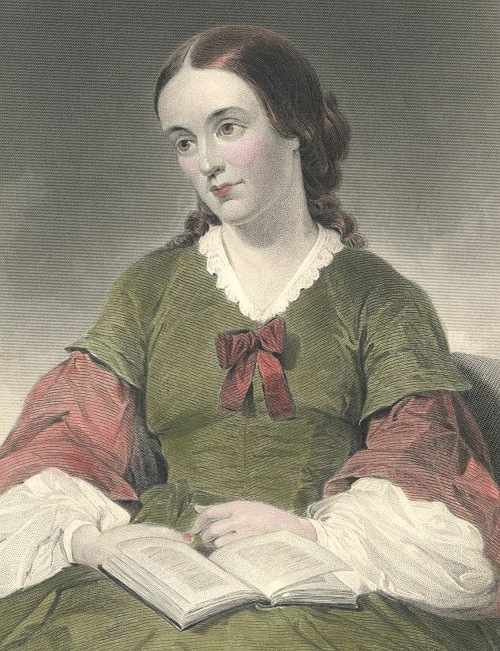
Regarding the 1805-14 cohort, let me be the first to note that many members of the Transcendentalist movement (though neither Emerson nor Thoreau) were born between those dates. However, whether we limit our data to America and England (i.e., like Strauss and Howe) or cast a wider net, the striking thing we notice about men and women born from 1805-14 is not a shared faith in an ideal spiritual state transcending the physical and realized only through the individual’s intuition. (Edgar Allan Poe, born 1809, ridiculed the Transcendentalist’s “mysticism for mysticism’s sake.”) What we do notice about these men and women is their internally generated drive and motivation, their lack of dependence on the sorts of external rewards that motivate most of us to stick closely to safe routines. So let’s call them the Autotelic Generation.
The (penultimate-romanticist) Autotelic Generation includes proto-Situationist dandies and flâneurs, Bouzingos and blagueurs, anarchists and aesthetes, revolutionaries and hoaxers. Hi-, lo-, no-, and hilobrow members of the 1805-14 cohort include: Ada Lovelace, Alexander Herzen, Alexis de Tocqueville, Charles Darwin, Charles Dickens, Edgar Allan Poe, Georg Büchner, Gérard de Nerval, Giuseppe Garibaldi, John Stuart Mill, Ludwig Feuerbach [honorary], Margaret Fuller, Max Stirner, Mikhail Bakunin, Nathaniel Hawthorne [honorary], Nikolai Gogol, P.T. Barnum, Pierre-Joseph Proudhon, Richard Wagner, Søren Kierkegaard, and Théophile Gautier.
Who belongs to this generation? Click here.
To be GOVERNED is to be watched, inspected, spied upon, directed, law-driven, numbered, regulated, enrolled, indoctrinated, preached at, controlled, checked, estimated, valued, censured, commanded, by creatures who have neither the right nor the wisdom nor the virtue to do so. — Proudhon, “What Is Government?”
Members of this generation were daring, rebellious older sibling figures to the Retrogressivists — i.e., to the final generation of Romantics. Baudelaire, for example, worshiped Poe, Nerval, and Gautier; Melville looked up to Hawthorne [honorary Autotelic] (and, for what it’s worth, he despised Emerson); Marx was influenced by Feuerbach [honorary Autotelic] and Proudhon.
Coming of age, as they did, in an era during which the theory and practice of what we now call neoliberalism was first flourishing in Europe and America, hi-, lo-, no-, and hilobrow members of the 1805-14 cohort articulated eccentric utopian visions — neither liberal nor conservative. Though anti-monarchist, many important Autotelics were pro-aristocratic; while pro-republican, they tended to fear “ochlocracy” (mob rule). Though politicized, they tended to be un- or even anti-partisan; the French Revolution was recent enough to remind them that grand doctrines and ideology-driven politics can result in enslavement, sacrifice, and tyranny. NB: Their anti-ideological stance was funhouse-mirrored by the emergent middle class, who claimed that “Progress” wasn’t an ideology; many of our favorite Autotelics were anti-bourgeois and regarded the shibboleth of Progress as a hegemonic form of ideology.
For example, two Autotelics are among the most influential early anarchist theorists and organizers. Pierre-Joseph Proudhon’s first major work, What is Property? Or, an Inquiry into the Principle of Right and Government (1840), claimed that “Property is Theft!” Proudhon and Marx, who met in Paris while Marx was exiled there, were friendly until Marx attacked Proudhon’s The System of Economic Contradictions, or The Philosophy of Poverty (1847). Marx rejected what he sneeringly termed Proudhon’s “utopian socialism” in favor of what he insisted was “scientific socialism.” (This dispute became one of the sources of the split between the International Working Men’s Association’s anarchist wing, which favored workers’ associations or co-operatives, as well as individual worker/peasant ownership, and its Marxist wing, which favored the nationalization of land and workplaces.) Russian revolutionary Mikhail Bakunin, meanwhile, was a theorist of collectivist anarchism who criticized Marxist-style “authoritarian socialism,” as well as Marx’s concept of the dictatorship of the proletariat. Bakunin was expelled from the First International by Marx and his followers at the Hague Congress in 1872.
Max Stirner is also an important anarchist, but I’m not going to discuss him here. Nor, for that matter, will I discuss Lovelace, Herzen, Darwin, Dickens, Büchner, Garibaldi, Mill, Feuerbach, Fuller, Hawthorne (whom I’ve described as the author of one of the earliest Argonaut Folly novels), Gogol, Barnum, Wagner, or Kierkegaard. Some other time.
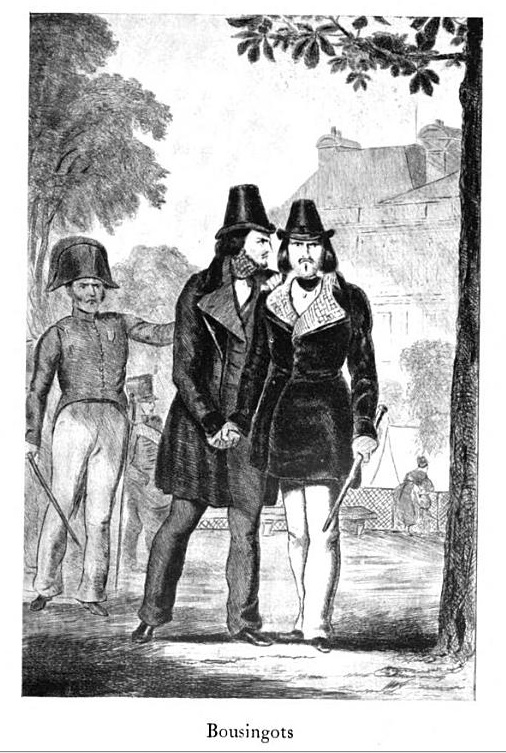
Just as vigorously opposed to capitalism, wage labor/slavery, and worker exploitation were a seemingly quite different crowd of Autotelics: French aesthetes and dandies like Théophile Gautier and Gérard de Nerval. As the literary critic Gene H. Bell-Villada has argued, the idea of l’art pour l’art was particularly attractive to French writers whose medium (poetry) and rhythm of production (leisurely and careful) conflicted with the modes and rhythms of the newly industrialized literary market. He calls Gautier, Nerval, and their comrades “aesthetic separatists” — i.e., they were a crypto-political movement that rejected both the (bourgeois) republican and (hereditary aristocratic) monarchist factions of the era. They were particularly opposed to the newly ascendant culture-consuming bourgeoisie — particularly bourgeois liberals, who insisted that art should be socially and morally “useful” — but they weren’t socialists. The dandies presented themselves as a new, self-invented kind of aristocracy.
“Art for art’s sake” is the English rendering of Gautier’s defiant l’art pour l’art slogan, which expressed the aesthetes’ belief that the intrinsic value of art is divorced from any didactic, moral, or utilitarian function. “Nothing is truly beautiful unless it is useless,” insisted the preface to Gautier’s Mademoiselle de Maupin (1836); note that works like Gautier’s are described as “autotelic,” in the original Greek sense of something “complete in itself.” In the US, Poe was another theorist of autotelic art — which is why Baudelaire, whose translations did so much to popularize Poe in France, was such a fan. In his essay “The Poetic Principle” (1850), Poe writes:
We have taken it into our heads that to write a poem simply for the poem’s sake […] and to acknowledge such to have been our design, would be to confess ourselves radically wanting in the true poetic dignity and force: — but the simple fact is that would we but permit ourselves to look into our own souls we should immediately there discover that under the sun there neither exists nor can exist any work more thoroughly dignified, more supremely noble, than this very poem, this poem per se, this poem which is a poem and nothing more, this poem written solely for the poem’s sake.
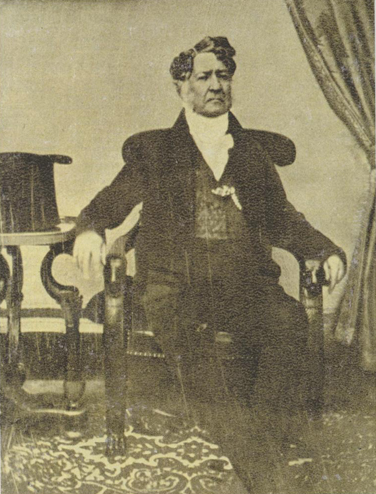
The French Revolution of 1830 (the July Revolution) saw the overthrow of King Charles X of France and the ascent of Louis-Philippe, the “bourgeois monarch.” In Paris during the Twenties (1825-33), political factions (ultra-royalists, Girondin republicans, Jacobin republicans, American-style republicans, Bonapartists, moderate semi-liberal royalists, utopian socialists) enjoyed the support of various literary factions. Most romantics were somewhere on the continuum between republican and liberal, though their factions — Les Meditateurs, Les Frénétiques, Les Larmoyants, Les Illuminés, Le Petit Cénacle, Les Jeunes-France, Les Buveurs d’Eau, the literary-political Bouzingos, the militant Bousingots, Les Badouillards, Les Muscardins, Les Dandys and Les Bohème — suggest that the continuum was a minutely parsed one. The Autotelics who interest us are dandies, aesthetes, and Bouzingos [a slang word meaning something like “shit-heel”] like Nerval and Gautier. The aesthetes’ insistence upon art’s uselessness may have been an anti-partisan position, but it was not unpolitical. The dandies and flâneurs who inspired Baudelaire’s dandyism, and his theory of the “perfect flâneur,” were engaged ironists; their “useless” art and anti-bourgeois mode of dressing and sauntering through crowded Paris streets was a political gesture, a rebuke to the proto-neoliberal “bourgeois monarchy” of Louis-Philippe — which they recognized, presciently, as a new mode of tyranny. Whether or not he actually once walked a lobster on a pale blue leash, Nerval’s flânerie was a form of guerrilla street theater — a gesture of contempt for the hustle and bustle of modern capitalism.
Alexis de Tocqueville shared the aesthetes’ and anarchists’ worry about the evolution of liberal capitalism and its effect upon the social order — and he, too, suspected that some new-fangled form of aristocracy might be the best defense against liberal capitalism’s wiles. (I’ve cribbed some of what follows from an essay I once wrote for n+1.) Between the publication of the first and second volumes of Democracy in America, in 1835 and 1840 respectively, Tocqueville’s tone became increasingly foreboding. If in the first volume of the Frenchman’s study of the democratic spirit of the age he’d praised American democracy as the antidote to political tyranny, in the second he warned of a new, subtler form of tyranny emerging from America itself, where intangible but inexorable pressures threatened to force even staunch individualists into a formerly unthinkable conformity.
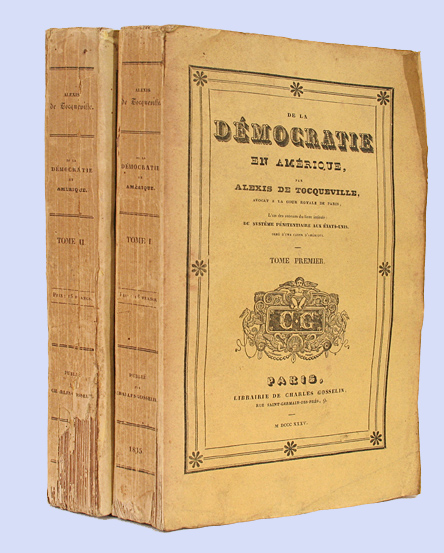
Unlike domination elsewhere, where extra-economic coercion had to be employed to keep citizens in line, it appeared to Tocqueville that the social order of the United States was regulated to a great extent by what he called the American “spirit of gain.” Sure, the new ideals of individualism and equality that were supplanting Europe’s hierarchical and communal values were fostered, just as Adam Smith had predicted, by participation in an open economy. But it was precisely the self-centered individuals of such an economy, hastening to secure their own pleasures regardless of the greater good, who were most likely to surrender their liberty to a paternalistic government, predicted Tocqueville. Liberal capitalism, Tocqueville warned, might become an insidious form of bondage for worker and capitalist alike: a future society in which the opinion of the majority will impel the individual, despite having “smashed all the shackles” of political tyranny, “willingly to cease thinking at all” — that is, to submit to shackles worn not on the limbs but inside the head. In a footnote, Tocqueville suggested that the solution to the either/or of feudalist aristocracy and liberal capitalism might be an “aristocratic republic” in which ordinary citizens experienced political and economic liberty but the unpossessable aristocracy would continue to guide society. (NB: Bakunin suggested much the same thing.)
In a concluding chapter, Tocqueville expresses his deepest fear: If democracy and the spirit of capitalism had made it possible to establish a despotism in America “more extensive and more mild” than any in antiquity, he asks, then what was to stop some future ruler from combining authoritarian sovereignty with liberal capitalism and thereby becoming powerful enough to “dictate and manage the lives of each and every one” of his subjects, controlling the minutest details of social life and of individual existence? The terms “despotism” and “tyranny” wouldn’t suffice to describe such oppression, one spreading “a fine mesh of uniform, minute, and complex rules” over society, Tocqueville warns, and every day making “man’s use of his free will rarer and more futile.”
Brrr!
Who belongs to this generation? Click here.
Please note that the following was written in 2008–2010.
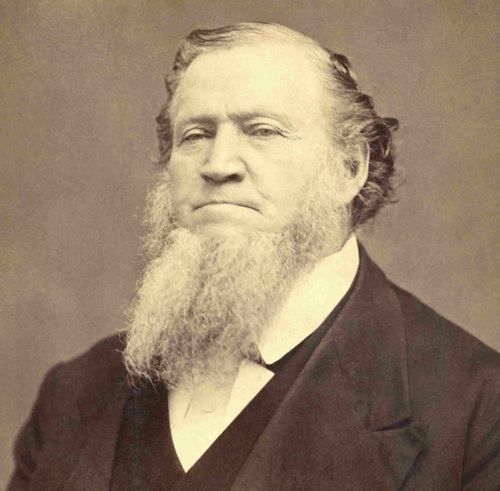
Men and women born from 1795-1804 were in their teens and 20s during the Eighteen-Teens (1815-24), and in their 20s and 30s during the Eighteen-Twenties (1825-33). According to Strauss and Howe, the 1795-1804 cohort is merely part of a much larger Transcendental Generation born, supposedly, from 1792-1821. Strauss and Howe’s grotesque, thirty-year-long(!) construct muddles two discrete, distinctive cohorts — the one now under consideration, plus the Autotelics (1805-14) — while also managing to shanghai a few younger Original Prometheans (1785-94) and a lot of older Retrogressivists (1815-24). What a pop-sociological mess!
The 1795-1804 and 1805-14 cohorts aren’t at all difficult to distinguish. The Autotelic Generation is notable for proto-Situationist dandies and flâneurs, Bouzingos and blagueurs, anarchists and aesthetes, revolutionaries and hoaxers. The 1795-1804 cohort is notable for producing founders of religious innovations (e.g., Mormonism, Transcendentalism, Enfantin’s Saint-Simonist cult, Quimby’s New Thought, Neo-Druidism, Comtean secular humanism [and, arguably, Positivism]) and communal social experiments (Brook Farm, Fruitlands, Nashoba, the Amana Colonies). It’s also notable for the abolitionist zeal of William Lloyd Garrison [honorary Monomaniac], John Brown, Fanny Wright, Levi Coffin, and Sojourner Truth, among others. I’ve dubbed this collection of visionaries and sages, crackpots and zealots the Monomaniac Generation.
Hi-, lo-, no-, and hilobrow members of the Monomaniac Generation include: Aleksandr Pushkin, Auguste Comte, Balzac, Barthélemy-Prosper Enfantin, Brigham Young, Abigail and Bronson Alcott, Sophia and George Ripley, Heinrich Heine, John Brown, Joseph Smith, Jr. [honorary], Mary Wollstonecraft Shelley, Phineas P. Quimby, Sojourner Truth, Victor Hugo, and William Lloyd Garrison. The proto-middlebrow Ralph Waldo Emerson is also a member of Monomaniac cohort.
Who belongs to this generation? Click here.
No room, here, to get into the politics of Mary Wollstonecraft Shelley, Aleksandr Pushkin, Barthélemy-Prosper Enfantin, Heinrich Heine, Victor Hugo, Orestes Brownson, and other politically engaged Monomaniacs. Some other time…
RELIGIOUS INNOVATIONS
Whether or not they succeeded in starting a religious movement, the great writers of the Monomaniac generation — notably Thomas Carlyle, Ralph Waldo Emerson, and John Henry Newman — were impelled by a sense of a message for their age, by means of which they hoped to broaden the vision and elevate the ideals of their contemporaries.
Thomas Carlyle was a Scottish satirical writer, essayist, historian and teacher who pioneered what later was dubbed Sage Writing, a genre of creative nonfiction (developed from ancient wisdom literature) wildly popular in the Victorian era. He tried to find a new principle of moral authority and intelligibility for a civilization undergoing deep political unrest and religious doubt. His 1832 novel, Sartor Resartus, influenced Transcendentalism; its articulation of “The Center of Indifference” is an early analysis of the modern Nobrow phenomenon. Carlyle’s three-volume The French Revolution: A History in 1837 called for “heroes” to direct England’s competing “spiritual” forces — i.e., the hopes and aspirations of people in the form the form of ideas and ossified ideologies.
Ralph Waldo Emerson’s 1836 essay Nature introduced Transcendentalism, a romantic (i.e., intuitive, experiential, passionate) continuation of the supposedly too-intellectual rebellions of 19th-century Unitarians and Universalists against traditional Trinitarianism and Calvinist predestinationarianism. Among Transcendentalists’ core beliefs was an ideal spiritual state that “transcends” the physical and empirical and is realized only through the individual’s intuition, rather than through the doctrines of established religions. Though a number of other members of the Monomaniac cohort became Transcendentalists — including Amos Bronson Alcott, Orestes Brownson, Elizabeth Peabody, Charles Lane, and George and Sophia Ripley — younger men and women were instrumental in transforming Emerson’s philosophy into a coherent movement.

John Henry Newman (vicar of the Oxford University Church, later a Catholic convert and Cardinal) was a reactionary concerned with the Anglican Church’s failure to assume its proper spiritual role in English life. He and other members of the Tractarian or Oxford Movement (1833-41) railed away at the holdover attitude of Deist rationalism into which the Church of England had fallen during the eighteenth century, and they asserted the supreme authority of the Church and its traditional doctrines.
Orestes Brownson was a brilliant publicist, first for the Transcendentalists (he was one of the founders of the Transcendental Club), then — after he converted — for Roman Catholicism. In 1836, he founded a church called The Society for Christian Union and Progress and published his first book, New Views of Christianity, Society, and the Church, which combined Transcendental religious views with radical social egalitarianism. He converted in 1844, and from then on argued that only Catholicism could restrain the undisciplined American.
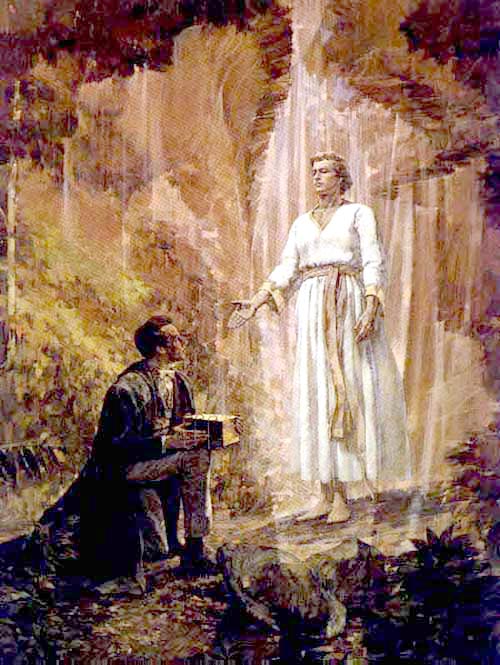
Joseph Smith, Jr. [honorary Monomaniac, born in the cusp year of 1805] and Brigham Young were the first and second prophets of The Church of Jesus Christ of Latter-day Saints, colloquially called Mormons. Smith reported seeing various visions that led him to restore a Christian doctrine that, he claimed, was lost after the early Christian apostles were killed; the term “Mormon” is taken from the title of the Book of Mormon, a sacred text adherents believe to have been translated from golden plates revealed by an angel to Smith. In Ohio, Missouri, and elsewhere, Smith and his followers established organizations that would live a form of Christian communalism. Following Smith’s assassination by a mob in Carthage, Illinois, Young led his followers in an exodus to the western United States, where they founded Salt Lake City in Utah Territory.
In his The Course in Positive Philosophy (1830-42), the French philosopher of science Auguste Comte articulated the epistemological perspective of Positivism — a historically inevitable secular ideology that would succeed the current “stage” during which men questioned authority and religion. Positivism is a quantitative, mathematical basis for decision-making; employing it, people could find solutions to social problems and bring them into force. Comte later developed a “religion of humanity” for positivist societies in order to fulfil the cohesive function once held by traditional worship; the term “altruism” comes from his injunction “vivre pour altrui” (“live for others”).
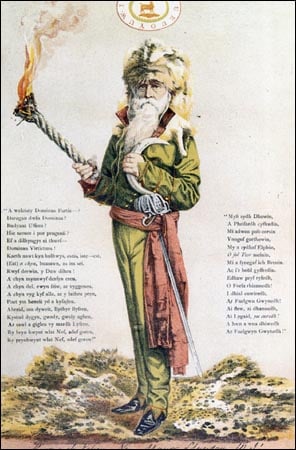
William Price was a Welsh doctor who became convinced that an ancient prophecy indicated that he would liberate his country. He tried to revive what he saw as the religion of the ancient druids; in doing so, he became one of the most prominent proponents of the Neo-druidic movement.
QUASI-RELIGIOUS INNOVATIONS
Phineas Quimby, a mesmerist and mind-over-body healer from Lebanon, N.H., is considered a founder of the New Thought Movement, a loosely allied group of religious denominations, secular membership organizations, authors, philosophers, and individuals who share a set of metaphysical beliefs concerning the effects of positive thinking, the law of attraction, healing, life force, creative visualization, and personal power. Mary Baker Eddy was one of his patients.
This might not exactly count, but: William Cullen Bryant [honorary Monomaniac] , though best known as an American romantic poet and editor of The New York Evening Post, was a militant homeopath (a still hortly disputed form of alternative medicine). He was a lay member of The New York Homeopathic Society in 1834 and President of The Board of Trustees of the New York Homeopathic Medical College from 1860 – 1872.
The Reverend Sylvester Graham [honorary Monomaniac] was an early advocate of dietary reform in the United States. He was most notable for his emphasis on vegetarianism and the temperance movement, as well as dietary habits. Grahamites practiced abstinence from alcohol, frequent bathing, vegetarianism, and a generally sparse lifestyle. Graham also was an advocate of sexual abstinence, especially from masturbation.
Scottish physician James Braid is regarded by many as the first genuine “hypnotherapist” and the “Father of Modern Hypnotism.” It was Braid who first adopted the term “hypnotism” as an abbreviation for “neuro-hypnotism” (sleep of the nerves). Braid was influenced by a fellow member of the Monomaniac cohort, Swiss mesmerist/showman Charles Lafontaine.
COMMUNAL SOCIAL EXPERIMENTS
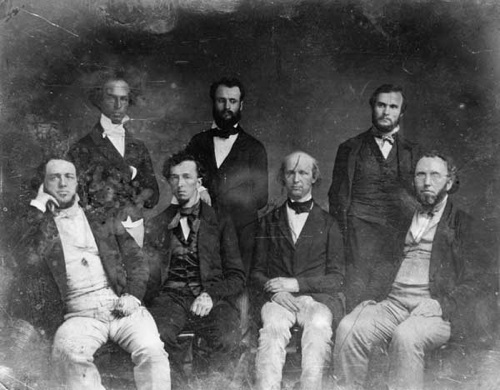
Bostonian Transcendentalists George and Sophia Ripley founded Brook Farm, a utopian colony in nearby West Roxbury. To quote from an essay of mine about Argonaut Follies: George Ripley announced that the object of the colony was “to guarantee the highest mental freedom, by providing all with labor, adapted to their tastes and talents, and securing to them the fruits of their industry… and thus to prepare a society of liberal, intelligent, and cultivated persons [leading] a more simple and wholesome life, than can be led amidst the pressure of our competitive institutions.” […] Nathaniel Hawthorne’s 1852 novel, The Blithedale Romance, is a treatise on the failings of thoroughgoing social reform disguised as a novel set in a West Roxbury utopian colony. In ’41, the 37-year-old Hawthorne was casting about for a place where he would have the leisure and energy to concentrate on his writing. Invited to join Brook Farm, he quit his position in the Boston customhouse and became one of Brook Farm’s founding members; but a few months later, he moved out. Scholars have tended to describe the fictional colony of Blithedale as a dystopia, and Hawthorne as an anti-utopian predecessor to the likes of Zamyatin, Huxley, or Orwell. Certainly, Hawthorne had little sympathy for utopian notions: Coverdale, the semi-autobiographical narrator of Blithedale, reflects ruefully on “our exploded scheme for beginning the life of Paradise anew,” while Zenobia, a character who may have been inspired by Margaret Fuller, laments what she calls the colony’s “effort to establish the one true system.” But read between the lines of Hawthorne’s text and we discover what Fredric Jameson calls “anti-anti-utopianism”: an effort to free the imagination from the paralyzing spell of the quotidian without falling into the error of totalitarianism. [Note that Hawthorne was born on the cusp between the utopian Monomaniacs and the dystopian Autotelics.]
Charles Lane and Bronson and Abigail Alcott, also Transcendentalists, founded the Fruitlands colony. “The consociate family”, as Fruitlands residents referred to themselves, refrained from trade, allowed no personal property, and did not use hired labor. They also eliminated animal products from their diets. According to Lane, who later became a Shaker: “Neither coffee, tea, molasses, nor rice tempts us beyond the bounds of indigenous production… No animal substances neither flesh, butter, cheese, eggs, nor milk pollute our tables, nor corrupt our bodies.” Cotton clothing was forbidden because cotton exploited slave labor, and wool was banned because it came from exploited sheep. Fruitlands failed the winter after it opened, due to food shortages and unrest among the inhabitants. Lane, for example, believed in the renunciation of marriage; the Alcotts did not.
German-born Christian Metz [honorary Monomaniac] emigrated to America, where he co-founded a colony for the Community of True Inspiration, a Pietist sect. He later relocated to Iowa and assisted in the founding of the Amana Colonies. Adin Ballou founded a utopian community named Hopedale on a farm in Massachusetts. Fanny Wright was a Scottish-born freethinker, feminist, abolitionist, labor activist, and social reformer, who emigrated to the US and founded the multiracial Nashoba Commune in Tennessee; its members were slaves, free blacks, and whites. In 1830, Wright freed the Commune’s slaves and accompanied them to the newly liberated nation of Haiti.
Who belongs to this generation? Click here.
Please note that the following was written in 2008–2010.

Men and women born from 1785-94 were in their teens and 20s during the Eighteen-Oughts (1805-14, not to be confused with the 1800s), and in their 20s and 30s during the Eighteen-Teens (1815-24, not to be confused with the 1810s). According to Strauss and Howe, there wasn’t any generational cohort born from 1785-94; they claim instead that a Compromise Generation (tentative, unaccomplished) was born from 1767–1791, while a Transcendental Generation (evangelical, extremist) was born from 1792-1821. So this is a lost generation, airbrushed out of official history.
As with every other lost generation, the Original Prometheans aren’t difficult to distinguish from their immediate elders (the Ironic Idealist cohort) or their immediate juniors (the Monomaniacs). They’re more earnest and politically engaged than the former; unlike the latter, they’re not founders of religious innovations and utopian colonies. One can only conclude, therefore, that the Original Prometheans cohort is “lost” for ideological reasons — that is, the generational periodizing powers-that-be would prefer it if this generation’s unique contributions and worldview went unrecognized.
Hi-, lo-, no-, and hilobrow members of the Original Promethean Generation include the second wave of Romantics (Lord Byron, Percy Bysshe Shelley, John Keats [cusper, born 1795]), who rebelled against the post-1815 revival of traditional oppression. Also: Arthur Schopenhauer (philosopher of Pessimism, anarcho-monarchist), Davy Crockett and his fellow anti-authoritarian Alamo fighters, and — remember, Prometheus was punished for having stolen fire from the gods — the pioneering electricity researchers Michael Faraday and Samuel F.B. Morse.
I’ve named the generation after Shelley’s 1820 dramatic poem, Prometheus Unbound. Shelley’s protagonist represents a humankind whose suffering will not cease until Jupiter (who here represents throne, altar, judgment-seat, prison) is overthrown — following which event a peaceful, quasi-anarchistic world order will spontaneously arise. PS: This cohort lends its name to the New Prometheans, a post-Romantic generation whose number also includes zealous activists and pioneering electricity researchers, but whose leading thinkers and writers rejected the Romantics’ utopian faith that the world is subject to reason and control.
Who belongs to this generation? Click here.
George Sampson: “Tory society, which received the [Original Romantics] into its bosom, laid a heavy hand on the younger. Byron, whom it feared, was driven into exile; Keats, whom it derided, was bludgeoned; Shelley, whom it loathed, was caught in the meshes of the law.” British members of the Original Promethean cohort came of age during the Regency Period (1810-20), during which a dissolute Prince Regent filled in for mad King George III. Though first-wave British romantic poets (Blake, Wordsworth, Coleridge) were becoming conservative, Byron and Shelley held fast to democratic ideals; they condemned George III’s regime as tyrannical. Even at the time, then, this was a lost (ideologically suppressed) generation.
Middlebrows would have us think of Byron entirely as a sexual adventurer. As a result, today it is difficult to realize the force or extent of his influence on continental opinion. His English countrymen admired his poetry, but mocked his politics; he hated tyranny and championed the oppressed — though, it must be said, like many utopians, he didn’t think much of the oppressed.
Keats we ought to remember for his description of Negative capability — the poetic state in which we are “capable of being in uncertainties, Mysteries, doubts without any irritable reaching after fact & reason. […Being] content with half knowledge,” i.e., where one trusts in the heart’s perceptions. John Dewey explains what truth means to Keats (with reference to the famous lines, “‘Beauty is truth, truth beauty,— that is all/Ye know on earth, and all ye need to know.'”) in the following passage: “In [Keats’s] tradition … man lives in a world of surmise, of mystery, of uncertainties. ‘Reasoning’ must fail man — this is of course a doctrine long taught by those who have held to the necessity of a divine revelation. Keats did not accept this supplement and substitute for reason. The insight of imagination must suffice…. Ultimately there are but two philosophies. One of them accepts life and experience in all its uncertainty, mystery, doubt, and half-knowledge and turns that experience upon itself to deepen and intensify its own qualities — to imagination and art.”
Though middlebrows have attempted to rewrite Shelley’s legacy to make him seem a lyricist and a dilettante who had no serious intellectual position (Matthew Arnold described him as a “beautiful but ineffectual angel”), Shelley was a visionary — an idealist — a political radical. An atheist and materialist who believed in the perfectibility of man. His revolutionary epic, Laon and Cythna (w. 1817-18), is about the eternal war of love and truth against tyranny. And his Prometheus isn’t the impotent one we read about in Greek myth; Shelley’s Prometheus is “unbound” — his evil nature slips off, symbolizing the regeneration of humanity once religion and other tyrannies are overthrown.
The Original Promethean philosopher Schopenhauer criticized Hegel’s logical optimism and the belief that individual morality could be determined by society and reason. For Schopenhauer, human desire is futile, illogical, directionless, and, by extension, so was all human action in the world. However, he was adamantly against differing treatment of races, was fervently anti-slavery, and supported the abolitionist movement in the United States.
I should also mention James Fenimore Cooper, here — who was the first American (OK, after Ben Frankin) to be appreciated more in France than in America. He wrote romantic fiction set in a country lacking key romantic themes like class differences and gothic ruins; Cooper’s plots stage moral confrontations — between, for example, Rousseau’s dream of a man of nature vs. Rousseau’s dream of a social contract unanimously agreed upon. The French liberal intelligentsia responded to Cooper’s vision of primitive society in eclipse, for a noble people exterminated and the natural world laid waste; Sainte-Beuve, for example, hailed Cooper’s championship of “justice and liberty against oppression and force.”
Who belongs to this generation? Click here.
Please note that the following was written in 2008–2010.

According to Strauss and Howe, a so-called Compromise Generation was born between 1767–1791. Like Strauss and Howe’s invented Silent Generation, the Compromise cohort is an “adaptive” type of generation, Strauss and Howe would have us believe; its members are risk-averse, conformist, indecisive — they’re wimps who don’t defy authority. The only meaningful evidence offered for this characterization is the fact that Kentucky politician Henry Clay has been called “the Great Compromiser,” because he brokered important compromises during the Nullification Crisis and on the slavery issue. (Strauss and Howe fail to mention that Abraham Lincoln called Clay his “beau ideal of a statesman.”) In fact, there is no such thing as the Compromise Generation!
Men and women born from 1785-94, who were in their teens and 20s during the Seventeen-Nineties (1795-1804, not to be confused with the 1790s), and in their 20s and 30s during the Eighteen-Oughts (1805-14, not to be confused with the 1800s), are instead members of the generational cohort I call the Ironic Idealists. As for the rest of the bogus and unconvincing “Compromise Generation,” they’re either New Romantics (1765-74) or Original Prometheans (1785-94).
The Ironic Idealists weren’t politically radical, like their immediate juniors and seniors — however, this does not mean they were risk-averse and indecisive. In this, they’re more like the so-called Silent Generation (1925–42) than Strauss and Howe recognize. The Anti-Anti-Utopians (1934-43), I’ve pointed out elsewhere, vociferously and articulately refused to accept the postwar consensus that there was no longer any alternative to liberal capitalism; they were neither utopian nor anti-utopian. As for the “silence” of the Postmodernists (1924–1933), I’ve argued that it was “the strategic silence of sappers and miners, undermining the enemy’s fortress; or of prisoners tunneling their way to freedom.” The Ironic Idealists tend to be a conflicted cohort, true… but in a wise and productive way.
Here are a few productively conflicted members of the Ironic Idealist Generation in whom I’m particularly interested: Jane Austen, Stendhal, E.T.A. Hoffmann, Heinrich von Kleist, Beau Brummell, Friedrich Wilhelm Joseph Schelling, Ingres, and Thomas Love Peacock (honorary).
Who belongs to this generation? Click here.
ANTI-ANTI-ROMANTICISM
The Ironic Idealists occupy a funny position vis-a-vis Romanticism, the counter-Enlightenment artistic and intellectual movement that transformed the stage, the novel, poetry, painting, sculpture, ballet, and all forms of serious music beginning in the 1770s (in England and Germany) and went mainstream in the 1820s. Romanticism’s themes — a deep appreciation of the beauty of nature, a preoccupation with the heroic ideal, an embrace of emotion over reason and of the senses over intellect, and authenticity-mongering in the form of obsession with folk culture (which involved sentimentalizing the poor) and national and ethnic origins (which, eventually, would turn political in the form of nationalism) — were tarnished, for the Ironic Idealists, by the French Revolution. Yet unlike the Original Romantics (e.g., Coleridge, Wordsworth, and Southey), because they’d never rejected the Enlightenment in the first place, they didn’t violently swing back again to the opposite extreme. They retained Romanticism’s skepticism towards the Enlightenment values of rationality, order, and restraint; but — unlike second-wave Romantics (e.g., Byron, Keats, Shelley) they were also skeptical about Romanticism’s values of emotional exuberance, unrestrained imagination, and spontaneity in art and personal life. They are a No-Wave cohort.
Ironic Idealists didn’t believe — with the Romantics — that radical reconstruction was possible not only in social life but in culture and art; yet neither were they cynical or apathetic. Theirs was a passionate, engaged form of irony. Jane Austen, for example, pokes fun at the ultra-romanticism of gothic literature in Northanger Abbey, in which a heroine is led astray by Mysteries of Udolpho (a novel by Ann Radcliffe, from Romanticism’s first wave). The glorification of personal emotions, the idealization of the loved one — Austin was skeptical about this sort of thing. But who would ever accuse her of being cynical, apathetic, “silent”?
Unlike their immediate elders and juniors, Ironic Idealists are funny! Austen is merely the best-known example. Thomas Love Peacock’s 1831 satirical novel Crotchet Castle is an early Argonaut Folly in which a motley crowd of “perfectibilians, deteriorationists, statu-quo-ites, phrenologists, transcendentalists, political economists, theorists in all sciences, projectors in all arts, morbid visionaries, romantic enthusiasts, lovers of music, lovers of the picturesque and lovers of good dinners” gather at the titular estate.
Though best known as author of the novella on which the Nutcracker ballet is based, the multitalented E.T.A. Hoffmann deserves to be remembered as a pioneer in the self-parodying, uncanny fantasy genre. Hoffmann’s spliced novel The Life and Opinions of Tomcat Murr (1819–1821) subverts Romantic idealism while celebrating artistic genius. He influenced Poe, Gogol, Baudelaire, Dostoevsky, and Kafka; his stories “Automata” and “The Sand-Man” are required reading for robot aficionados; and his “Madame de Scudery” is an early detective story.
German dramatist Heinrich von Kleist and French novelist Stendhal are also frequently described as Romanticists. Both, however, subvert clichéd ideas of Romantic longing and themes of nature and innocence. Kleist’s plays show individuals in moments of crises and doubt, with both tragic and comic outcomes; Stendhal maintains a tension between clear-headed analysis and romantic feeling in his novels.
In philosophy, meanwhile, we find Friedrich Wilhelm Joseph Schelling, who was regarded in his lifetime as a personality (eager, powerful) of the true Romantic type, yet whose philosophy sought to reconcile idealism and realism. And then there’s Beau Brummell, who inspired an anti-Romantic cult of artificiality (a reaction against romantic naturalism inspired by Barbey d’Aurevilly’s 1845 biography of Brummell) yet whose mode of dandyism wasn’t a flamboyant one. He was no macaroni; Brummell’s revolt against uniformity, mediocrity, and vulgarity was exquisitely self-contained.
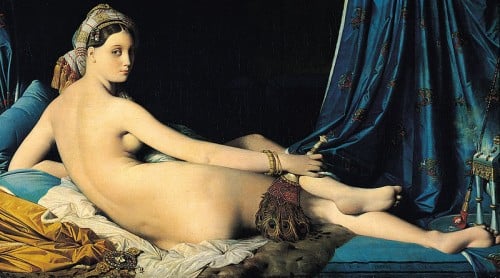
The French painter Ingres was denounced by Romantics as an unimaginative Classicist, overly dependent on art-historical precedent; yet Baudelaire would later praise Ingres for having painted “a population of automatons that disturbs our senses by its all too visible and palpable strangeness.” His practice of deliberate exaggeration inspired Degas and Picasso; however, unlike these avant-garde artists, Ingres couched his distortions in a conservative visual language of superlative draughtsmanship and authoritative brushmarks. Like Beau Brummell, Ingres’ revolt against mediocrity was stealthy — exquisitely self-contained.
Who belongs to this generation? Click here.
Please note that the following was written in 2008–2010.
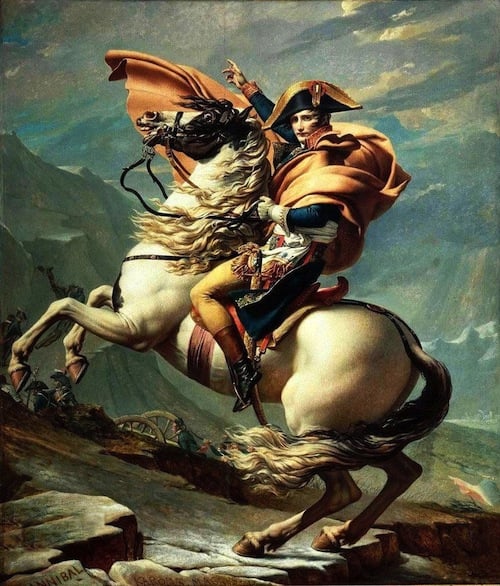
Men and women born from 1765-74 were in their teens and 20s during the Seventeen-Eighties (1785–94, not to be confused with the 1780s), and in their 20s and 30s during the Seventeen-Nineties (1795-1804, not to be confused with the 1790s). This demographic cohort, which grew up in the shadow of their immediate elders (the politics-, society-, and economics-obsessed Perfectibilists), constituted the first wave of Romanticism.
A counter-Enlightenment movement that prioritized culture and aesthetics over against politics and society and economics, and a passionate individual life over against everything else, Romanticism was spearheaded in Great Britain by the poets William Wordsworth (1770), Samuel Taylor Coleridge (1772), Robert Southey (1774), and Walter Scott (1771); and in Germany by August Wilhelm von Schlegel (1767) and Friedrich von Schlegel (1772), around whose journal the Athenäum gathered such pioneering Romantics as Novalis (1772) — who composed Hymns to the Night in 1798, the same year that Coleridge’s “The Rime of the Ancient Mariner” and Wordsworth’s “Lines Written a Few Miles from Tintern Abbey” appeared in the seminal collection Lyrical Ballads. German Romantics of this generation also include Wilhelm Heinrich Wackenroder (1773) and Ludwig Tieck (1773), not to mention Ludwig van Beethoven (1770), Friedrich Hölderlin (1770), and Friedrich von Schelling (1775: honorary Original Romantic). In France, meanwhile, François-René de Chateaubriand (1768) was the first — and for years, the only — Romantic; and Madame de Staël (1766) is credited with importing the movement from Germany. Finally, I should also mention the philosopher Hegel (1770), who influenced German Romanticism and was something of a counter-Enlightenment thinker… but who was not, himself, a Romantic.
Who belongs to this generation? Click here.
NOTES ON ROMANTICISM
The Original Romantics were secular theologians (according to M.H. Abrams, who does not use the term “Original Romantics”); that is, they were dominated by a Biblically inspired eschatology which they transposed from heaven to earth. History is an upward spiral along which humankind travels towards an inevitable and predetermined end: a superior state of un-alienated oneness of, i.e., man with man, man with God, man with nature. The “kingdom of God” is reimagined as an earthly paradise — a utopia in which all opposites are reconciled. They consciously set out to transform not only the theory and practice of poetry (and all art), but the very way we perceive the world. While in their teens and 20s, the Original Romantics were enthusiastic about the French Revolution and its liberal ideals; and Hegel was enthusiastic about Napoleon — the “World Spirit… on horseback.” Later, they grew disillusioned about political revolutions.
Rejecting the Enlightenment insofar as it argued for the supremacy of reason, the Romantics elevated the imagination to a position as the supreme faculty of the mind, a dynamic creative power that unites reason and feeling and helps invent reality itself. Emphasis was placed on the importance of intuition, instincts, and feelings; Wordsworth defined good poetry as “the spontaneous overflow of powerful feelings.” The artist became, for the first time, a heroic figure. Also unlike Enlightenment’s rationalist view of nature and the universe, the Romantics viewed nature as an organically unified whole — and as such, a refuge from the artificial constructs of civilization. Style-wise, the Romantics preferred boldness over neoclassicism’s insistence upon restraint; maximum suggestiveness over the neoclassical ideal of clarity; and free experimentation instead of following rules. In their pursuit of authenticity, they turned for symbolism to folk legends and ballads, to contemporary country folk and to children.
NOTES ON AUTHENTICITY
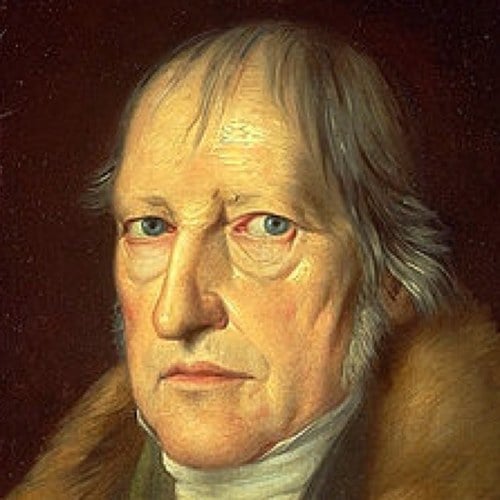
As I wrote in Hermenaut, back in 1999, the phenomenon of fake authenticity begins with Hegel.
Hegel’s Phenomenology of Spirit (1807) is the most important text in the pre-history of existential authenticity. In it, Hegel attacks the bourgeois “honest man,” whose self-seriousness and sincerity exemplifies a passive submission to a received social ethos. Hegel’s romantic portrait of the anti-hero of authenticity was deeply influenced by Rameau’s Nephew, a dialogue discovered after Diderot’s death in that philosophe’s papers. In it, Diderot appears as “Myself,” an honest bourgeois philosopher; and the Nephew of the title is his opposite number, a poverty-stricken musician who earns his keep in the homes of wealthy patrons by being himself: an insincere, buffoonish parasite. Believing that history can be seen as a progress toward a truly self-determining freedom, Hegel used the term base to mean “alienated from and antagonistic towards the prevailing ethos of society” — and applied it to the agent of this kind of freedom. Likewise, he turned noble into a pejorative, using it to mean “overly identified, internally and externally, with the prevailing ethos.” The Nephew, Hegel, decided, was a prime example of the courageously base man — a disintegrated, alienated, distraught consciousness seeking a self-determining freedom. He pours out his irony on the bourgeoisie, mocking their earnestness, and exposing the constructed nature of their taken-for-granted ideas about truth, meaning, and morality. The anti-hero of authenticity spends his days, Hegel insists approvingly, “in universal talk and in deprecatory judgment which rends and tears everything.”
Here’s my two cents: Try reading Rameau’s Nephew after you’ve just read Thomas Frank’s The Conquest of Cool (1997). It becomes immediately apparent that the Nephew rejects the prevailing ethos not in order to follow his own pathos (i.e. like a real anti-hero of authenticity), but because, as he puts it, “with the aid of vices natural to me [I have made myself] agreeable to the tastes of my patrons.” The solid bourgeois Diderot finds the Nephew’s company enjoyable not because he’s been revolutionized by this abject outsider, but “because [his] character stands out from the rest and breaks that tedious uniformity which our education, our social conventions, and our customary good manners have brought about.” The Nephew is a romantic rebel-with-a-small-“r,” through whom solid citizens can vicariously fantasize about surpassing the limits of their own freedom. The Nephew — as theorized by Hegel, anyway, because who knows what Diderot intended the dialogue to mean — is really the hip face of capitalism, an architect of consumer dissatisfaction and of perpetual obsolescence. These phenomena, I’d argue, are an unintended consequence of Romanticism.
Who belongs to this generation? Click here.
Please note that the following was written in 2008–2010.
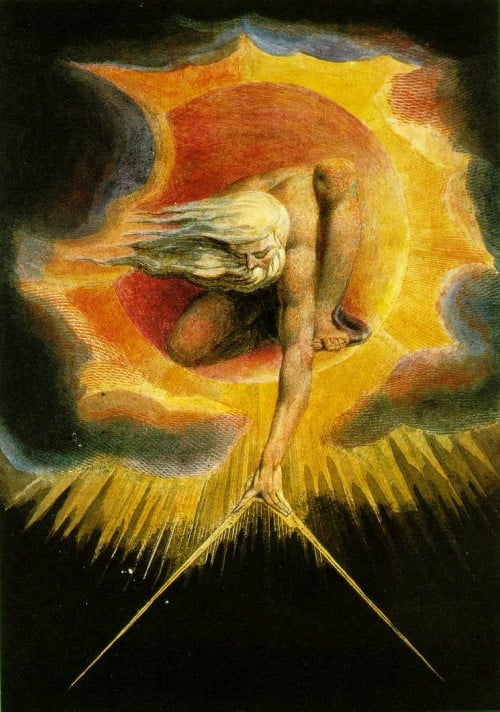
Men and women born from 1755-64 were in their teens and 20s during the Seventeen-Seventies (1775–84, not to be confused with the 1770s), and in their 20s and 30s during the Seventeen-Eighties (1785–94, not to be confused with the 1780s).
The Perfectibilists are a transitional generation whose members made their mark at the tail end of the Age of Enlightenment — which petered out, along with the promise of the French Revolution, sometime in the Seventeen-Nineties (1795–1804). Their immediate juniors are the first generation of the Romantic Age; there is a certain proto-Romanticism to be detected within this generation. Because of their Enlightenment brand of utopianism, which aimed at perfection in the spheres of politics, society, and economics, I’ve named the 1755–64 cohort — whose number includes Henri de Saint-Simon, Johann Gottlieb Fichte, Mary Wollstonecraft, Maximilien Robespierre, William Blake, and William Godwin, not to mention Mozart — the Perfectibilists.
Who belongs to this generation? Click here.
Notes on a few -isms pioneered and/or popularized by members of this generation.
PHILOSOPHICAL IDEALISM: Johann Gottlieb Fichte (born 1762), Gottlob Ernst Schulze (1761), and Karl Leonhard Reinhold (1757) were major contributors to German philosophical idealism, a movement — spearheaded by theology students — who worried that Kant’s rigorous and systematic separation of “things in themselves” and things “as they appear to us” might be an invitation to a corrosive skepticism. The question of what properties a thing might have independently of the mind (in some supra-sensible reality beyond the categories of human reason) was, for the Idealists, an incoherent question; things do not possess properties “in themselves” — rather, the properties we discover in objects depend on the way that those objects appear to us as perceiving subjects. Fichte, for example, rejected the assumption of anything that was not through and through merely our representation; the knowing subject is the cause of the external thing — it produces everything from its own resources.
“UTOPIAN” SOCIALISM: Henri de Saint-Simon (born 1760) was an early socialist theorist whose thought influenced the foundations of Marxism, positivism, and the discipline of sociology. He wanted to expand the principles of the French revolution in order to create a more “rational” society and economic system. Although dismissively labeled a “utopian” socialist by Marx and Engels, he was a strong supporter of the scientific method and advocated an arrangement where industrialists would found a national community based on cooperation and technological progress.
FEMINISM: Writer and philosopher Mary Wollstonecraft (born 1759), rejected the assumption that women were naturally inferior to men (less rational, less moral), attacked gender oppression, pressed for equal educational opportunities, and demanded “rights to humanity” for all in her 1792 treatise A Vindication of the Rights of Woman. She married the philosopher William Godwin, one of the forefathers of the anarchist movement; her daughter is Mary Wollstonecraft Godwin, later Mary Shelley.
ANARCHISM: Considered the first modern proponent of anarchism, William Godwin (born 1756, married to Mary Wollstonecraft) adopted the principles of the Encyclopaedists; his own aim was the nonviolent overthrow of all existing institutions, political, social and religious. In 1793, Godwin published his influential book Enquiry concerning Political Justice, and its Influence on General Virtue and Happiness, which set forth an anarchist critique of the state and also a positive vision of how an anarchist (or minarchist) society might work.
REPUBLICANISM: Maximilien Robespierre (born 1758) was an eloquent spokesman for the poor and oppressed, an enemy of royalist intrigues, a vigilant adversary of dishonest and corrupt politicians, a guardian of the French Republic, an intrepid leader of the French Revolutionary government, and a prophet of a socially responsible state; he was also a murderous dictator. He sought to create the utopia described by his hero Rousseau, championing liberty, equality, and fraternity even if tens of thousands of his countrymen died. Jacques René Hébert (born 1757) was founder and editor of the extreme radical newspaper Le Père Duchesne during the French Revolution. Georges Jacques Danton (born 1759) was a leading figure in the early stages of the French Revolution and the first President of the Committee of Public Safety. He was guillotined by Robespierre and other advocates of revolutionary terror.



